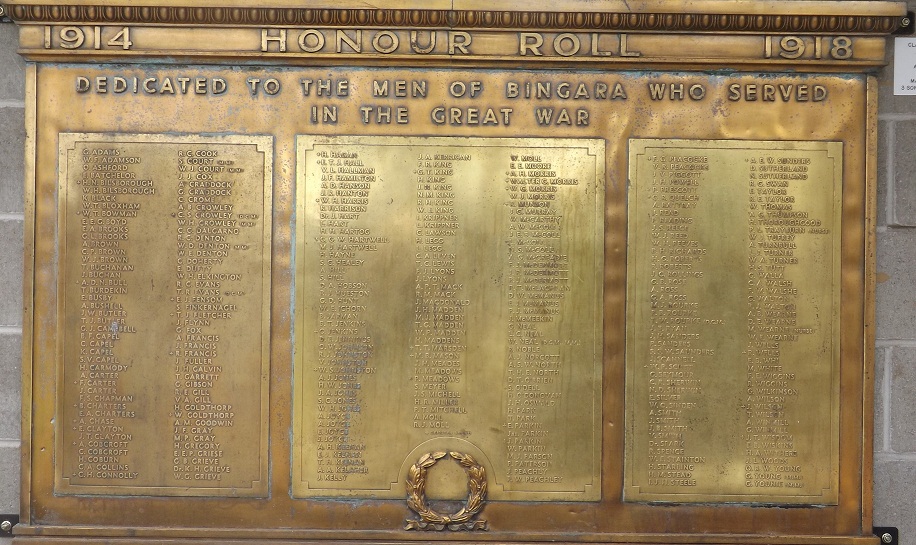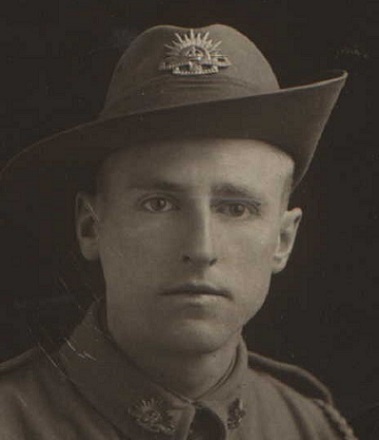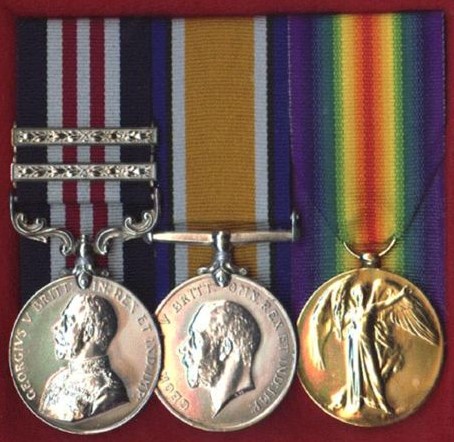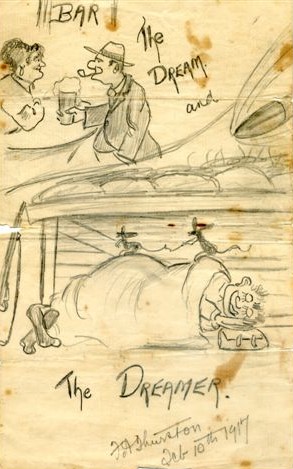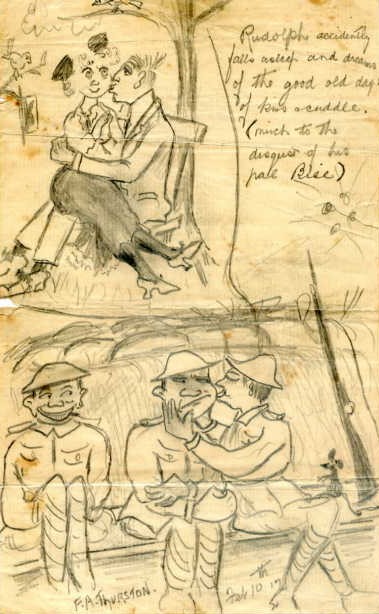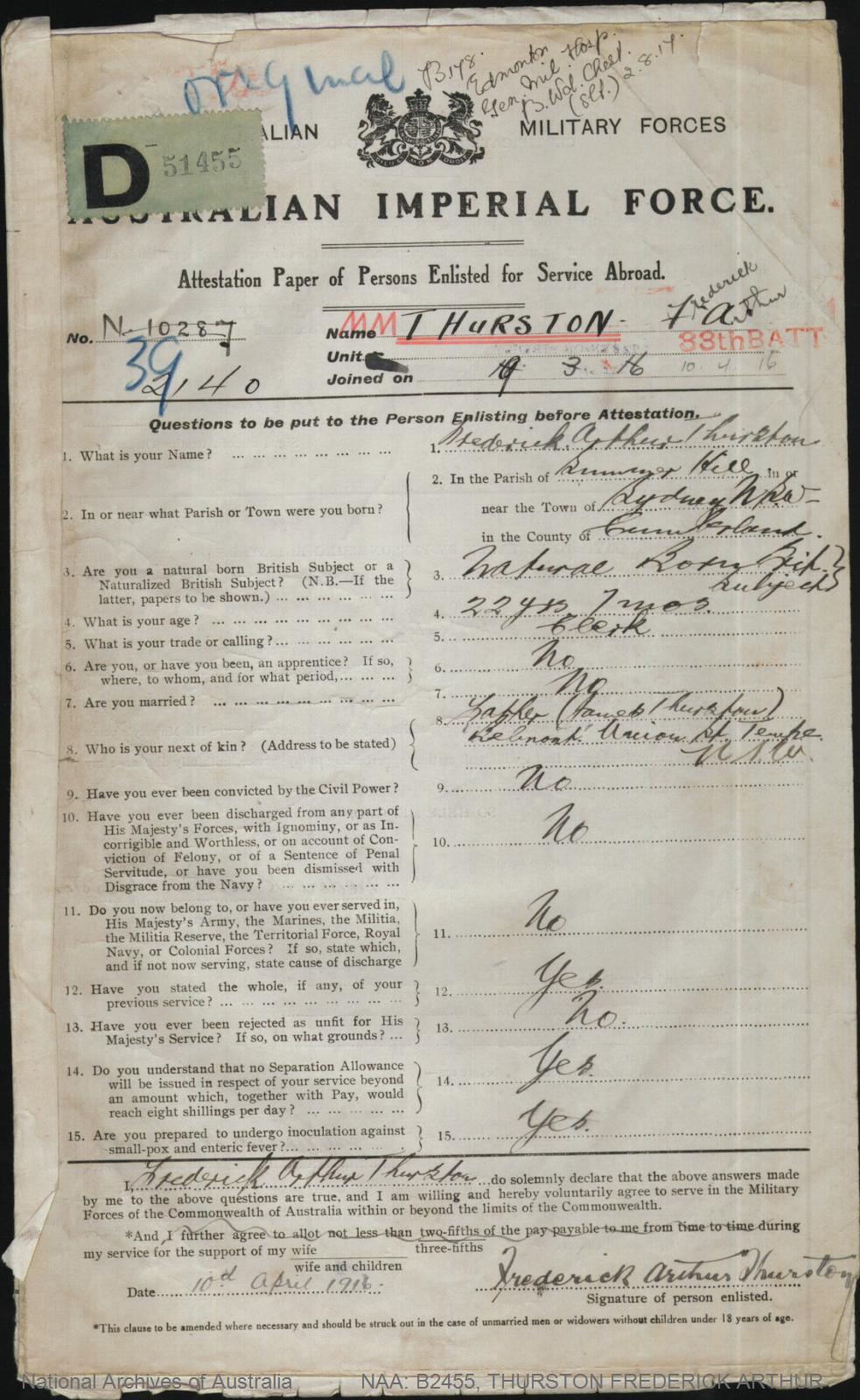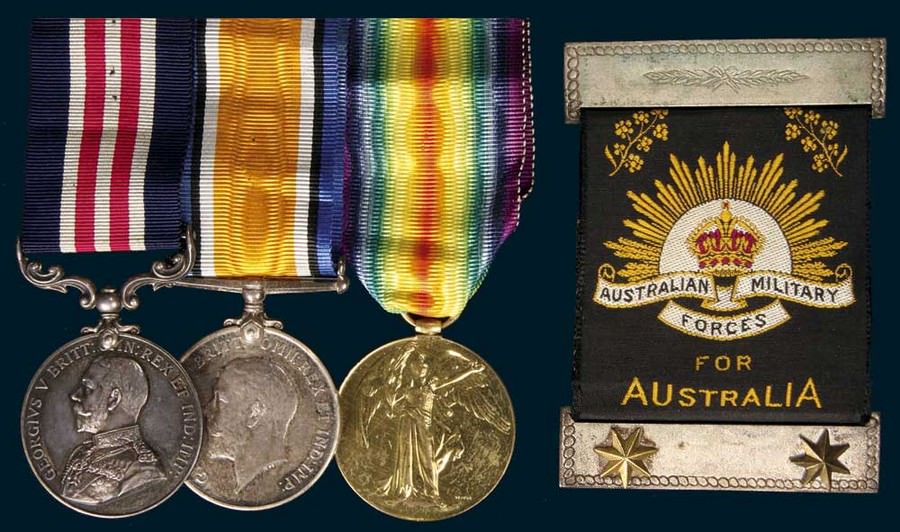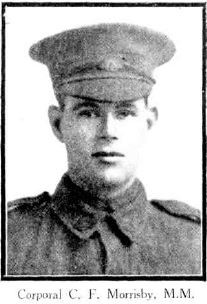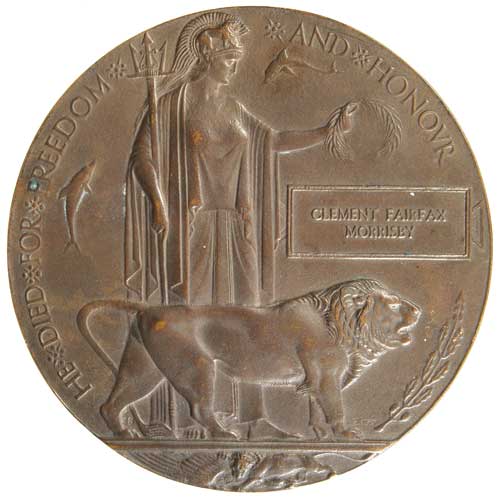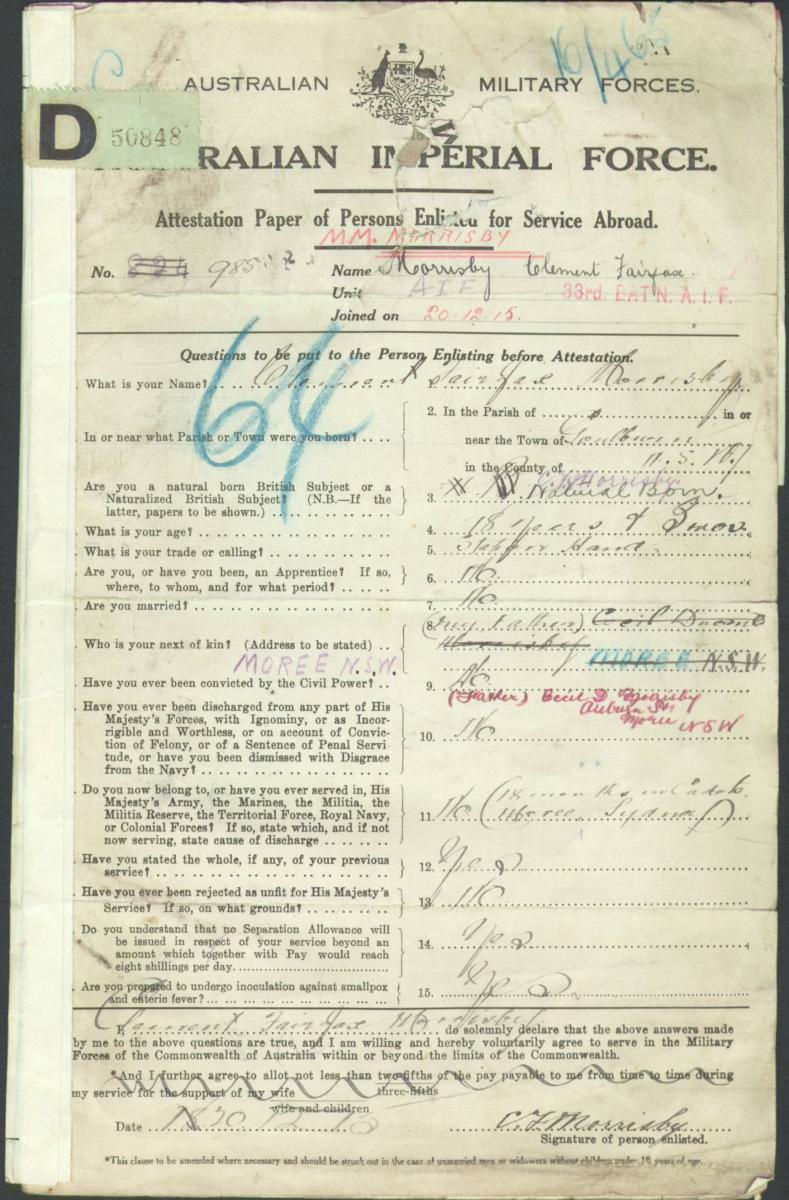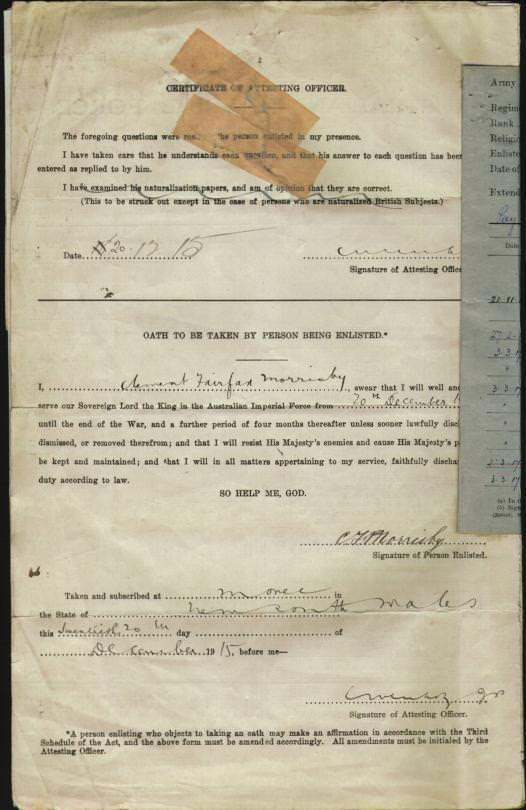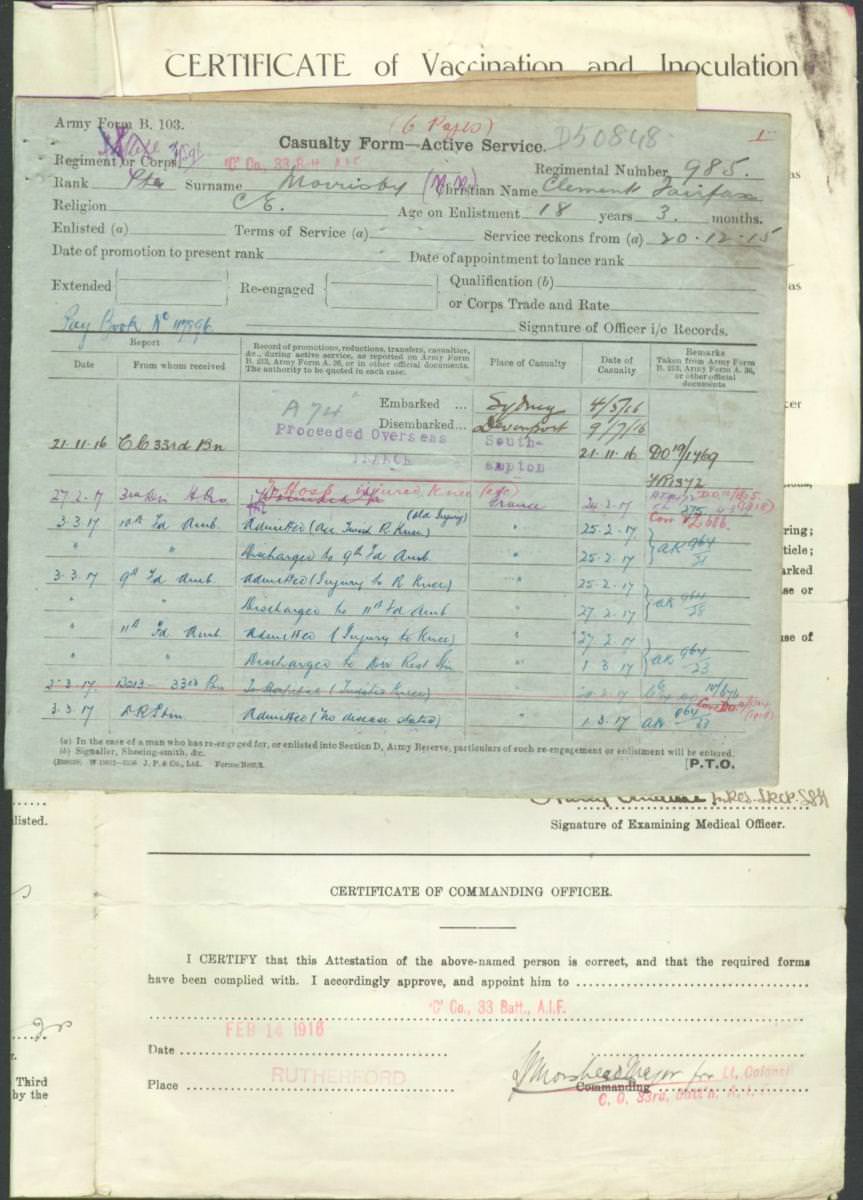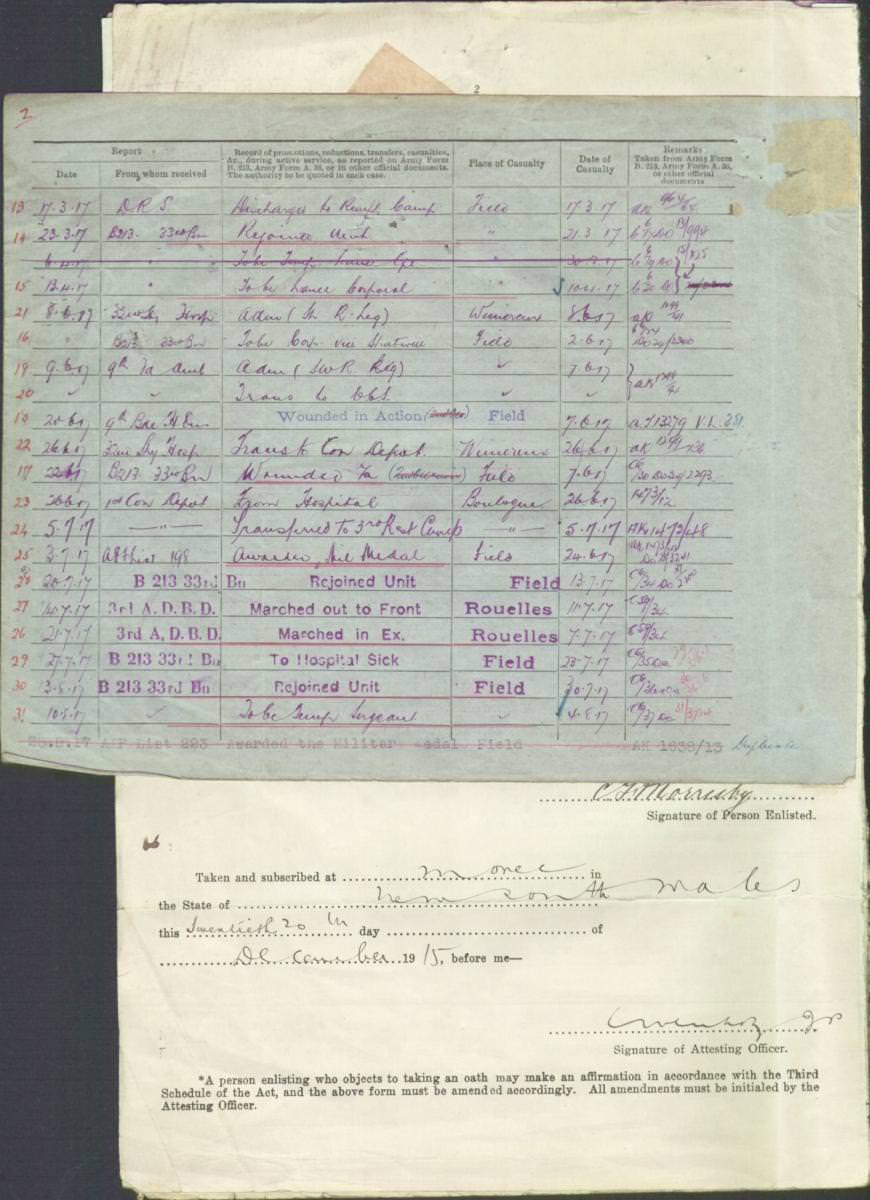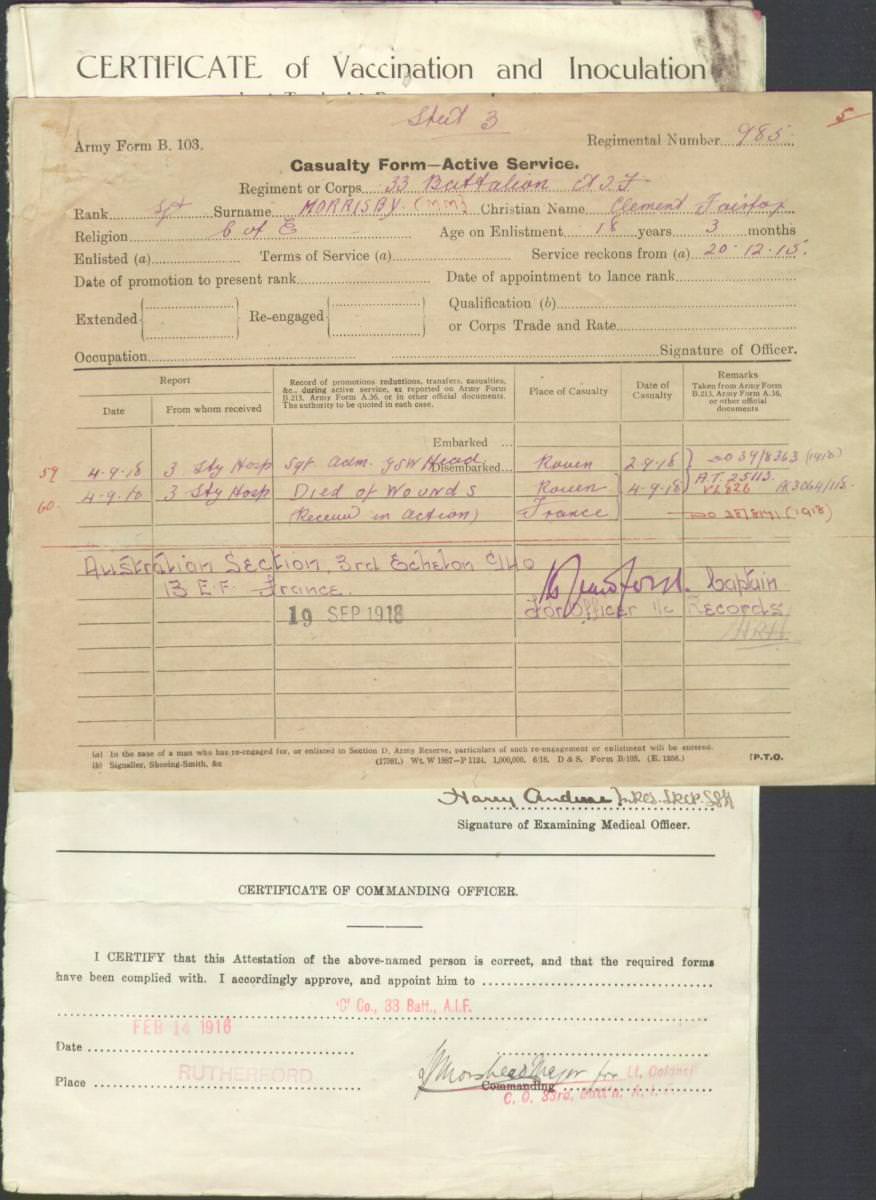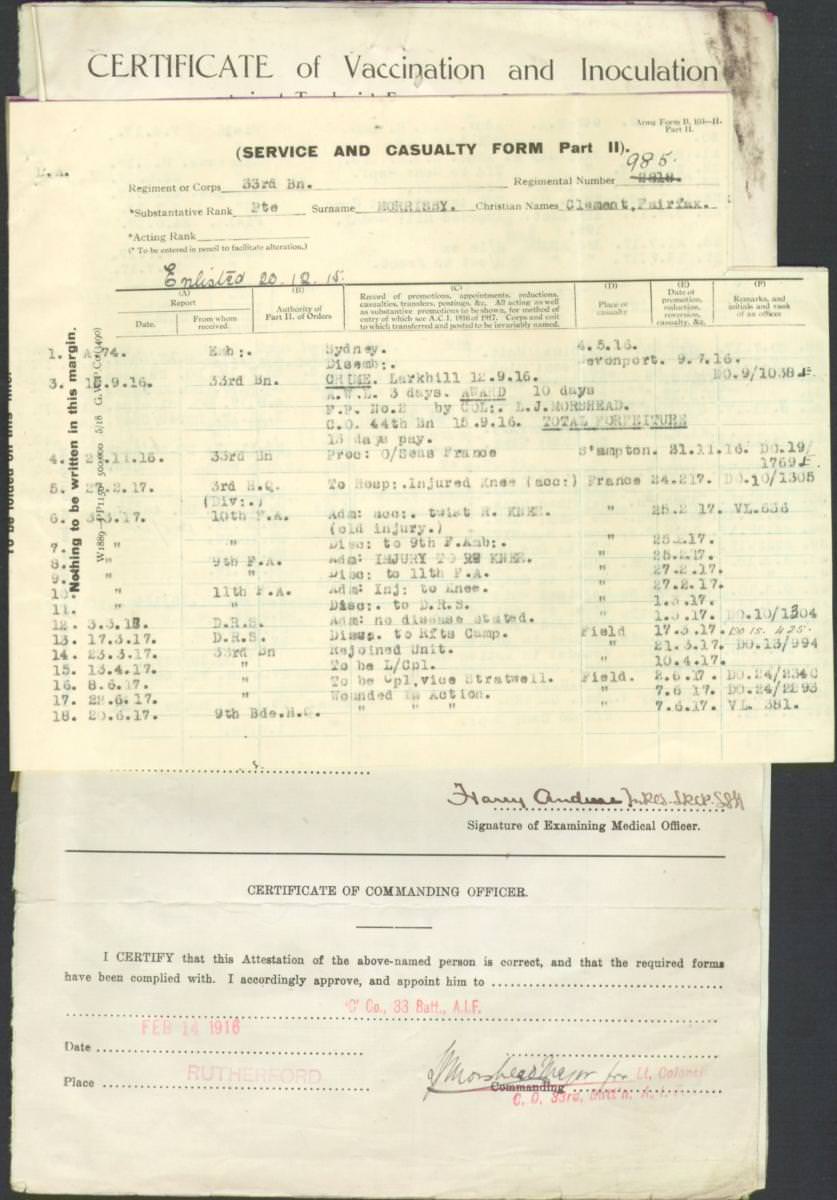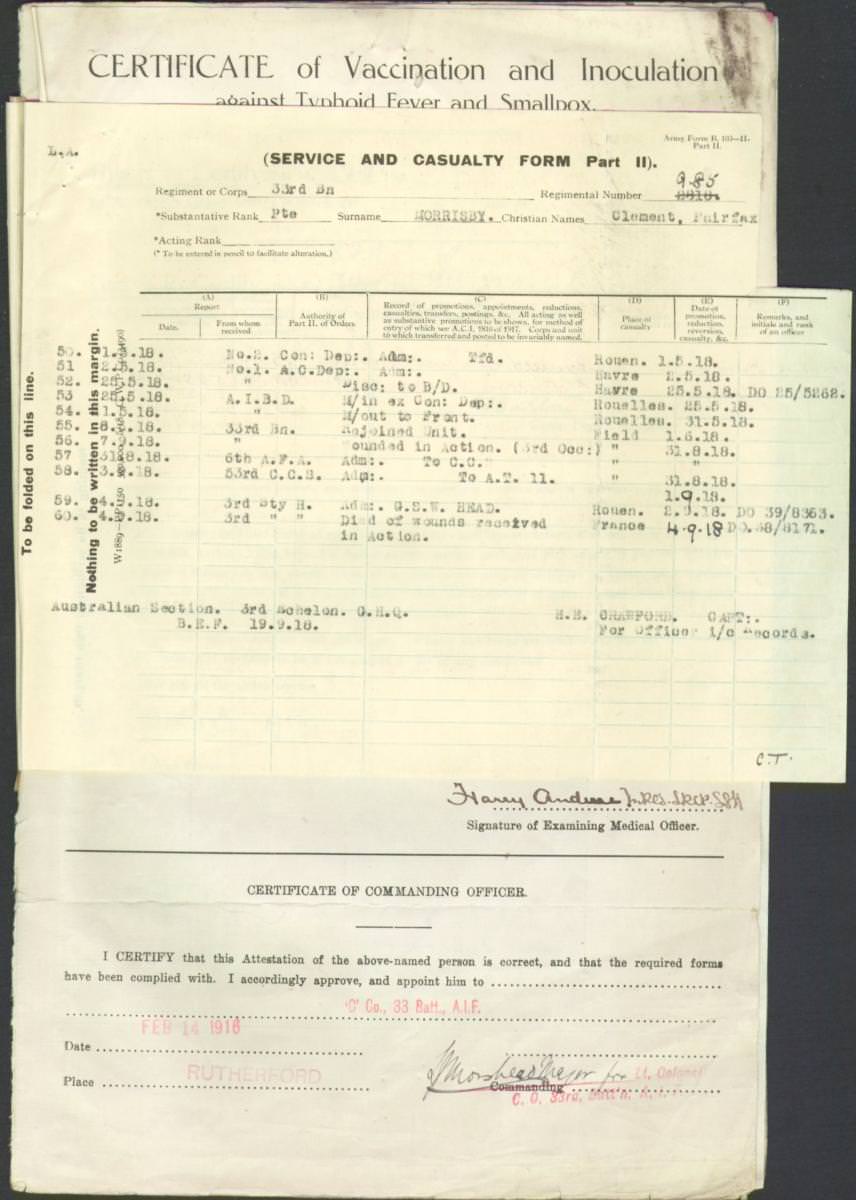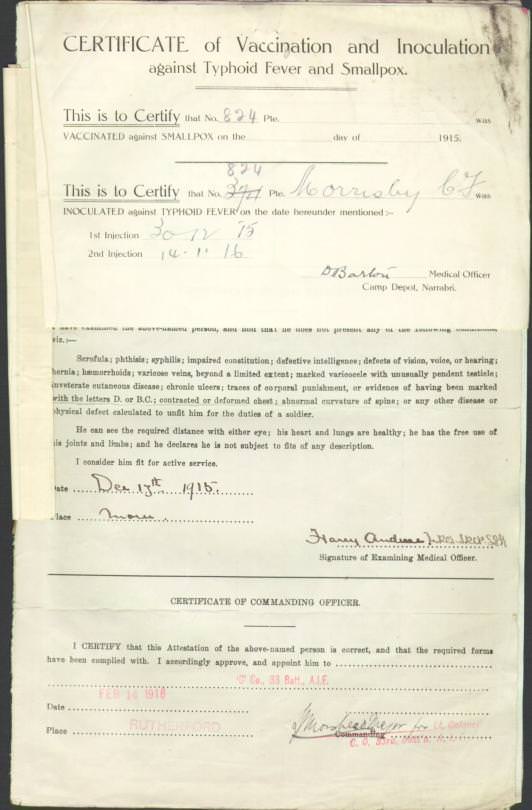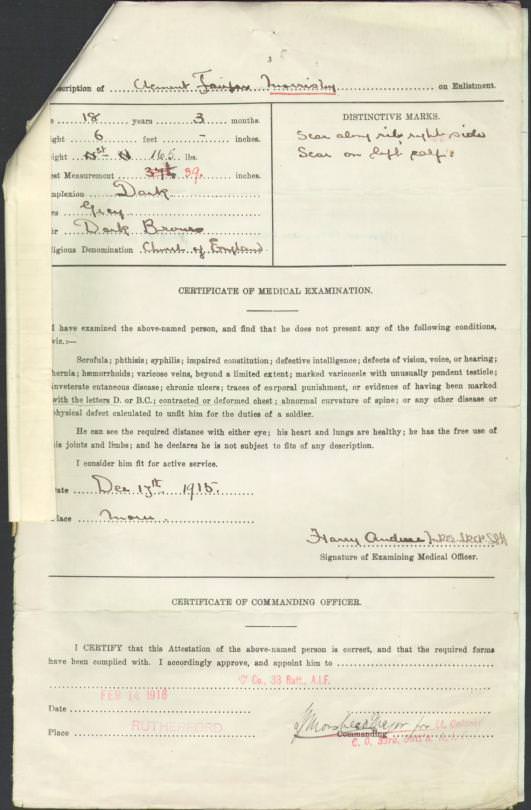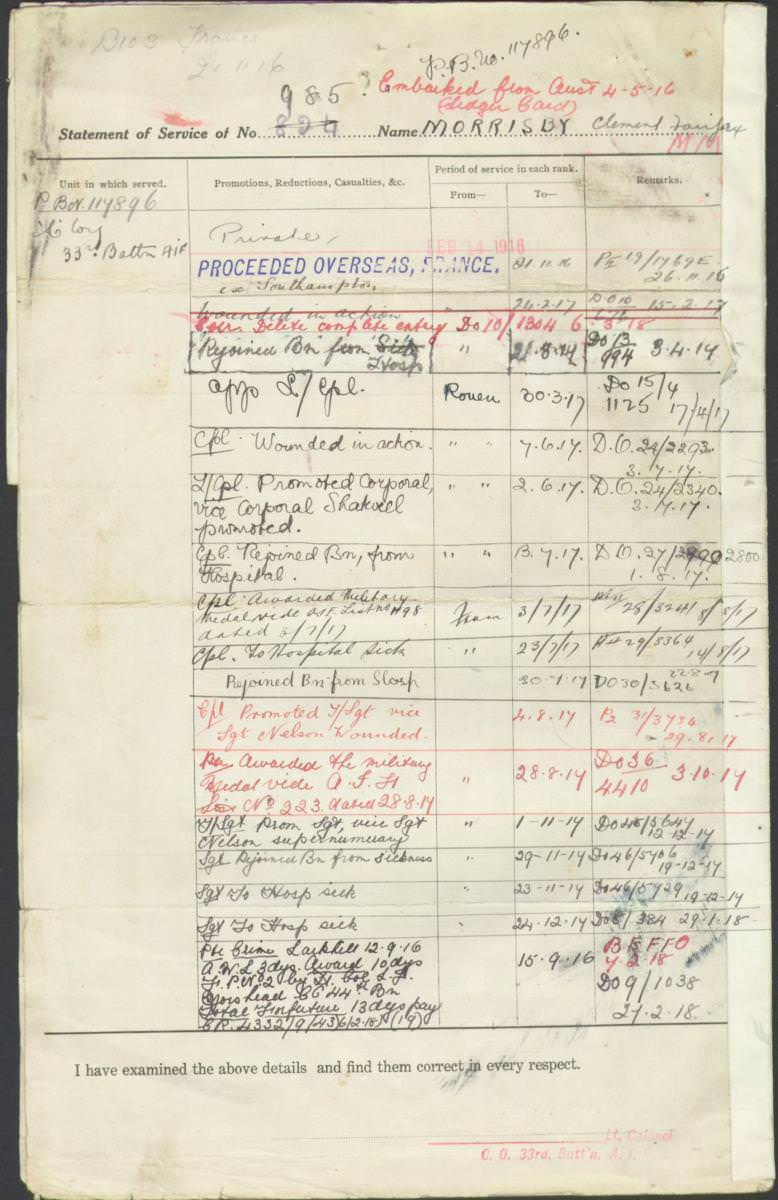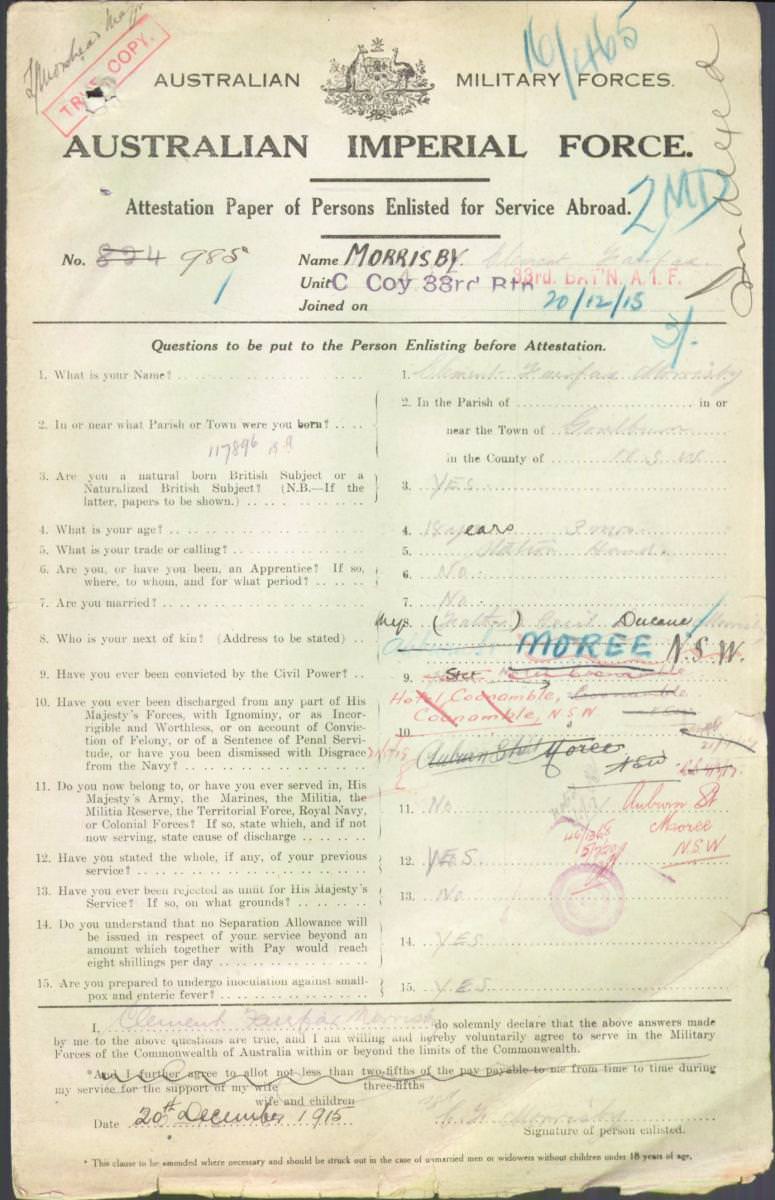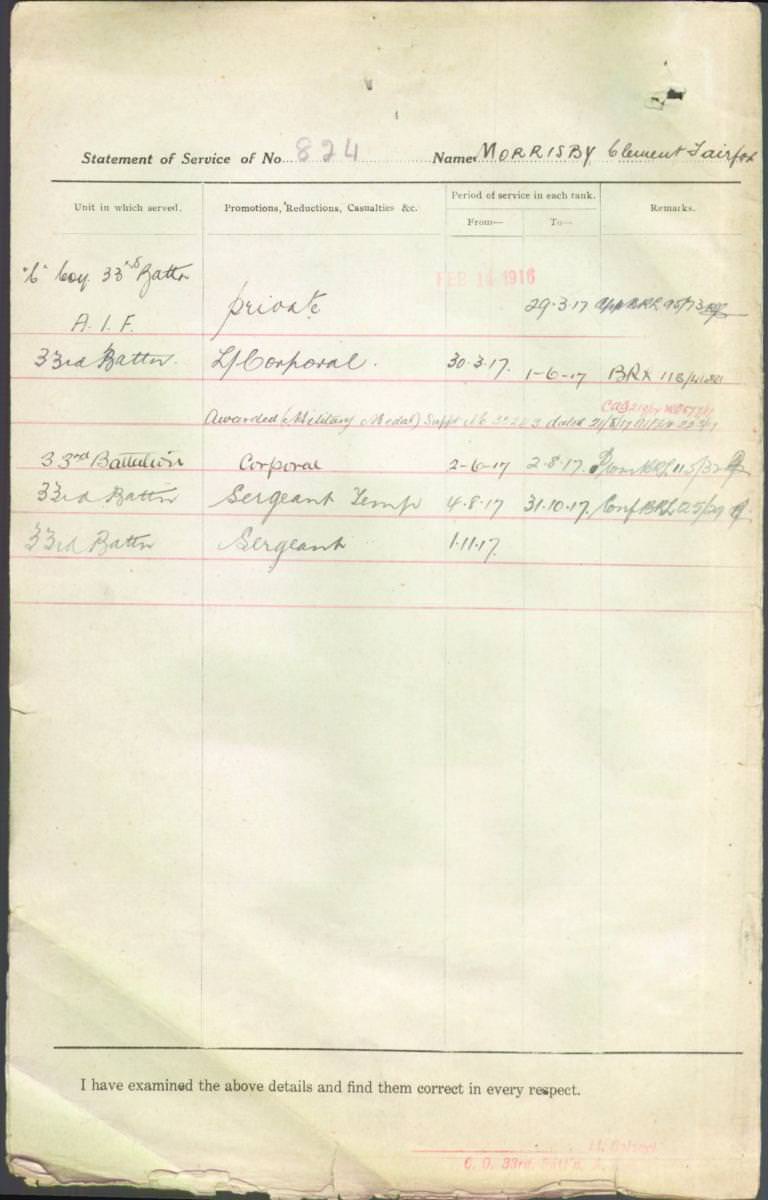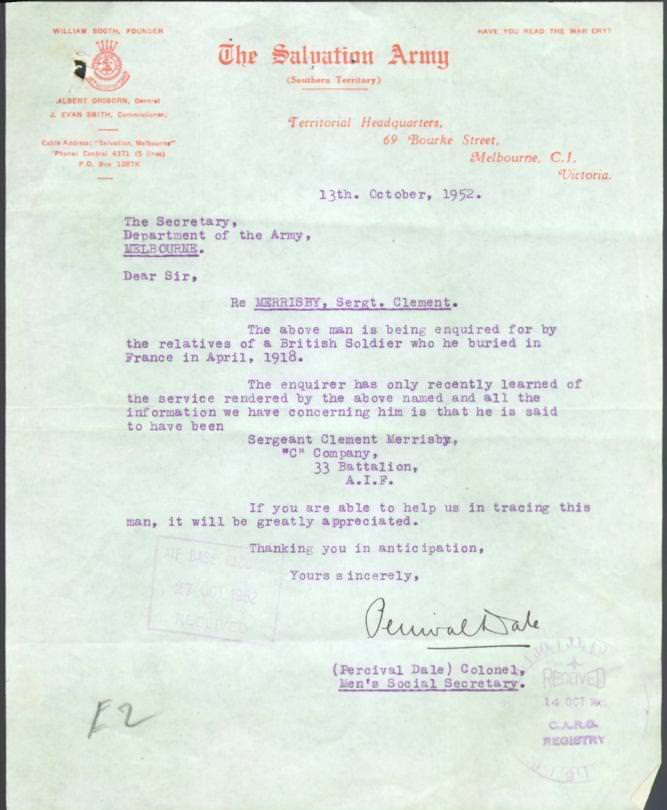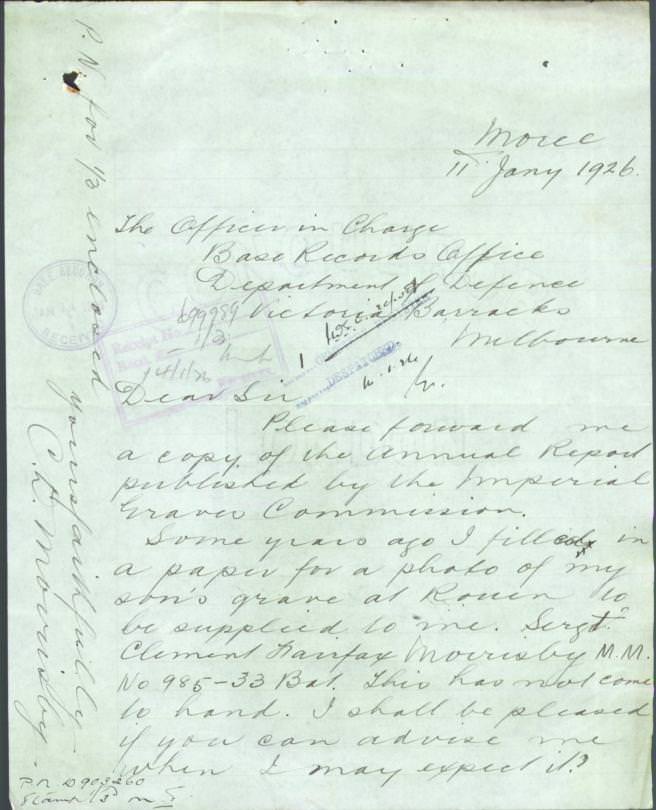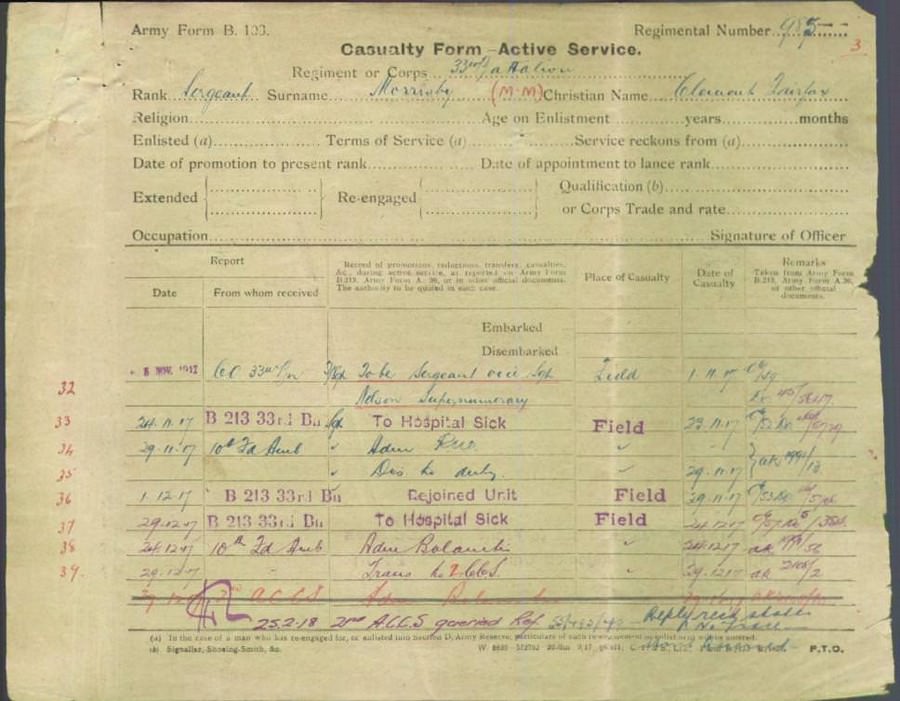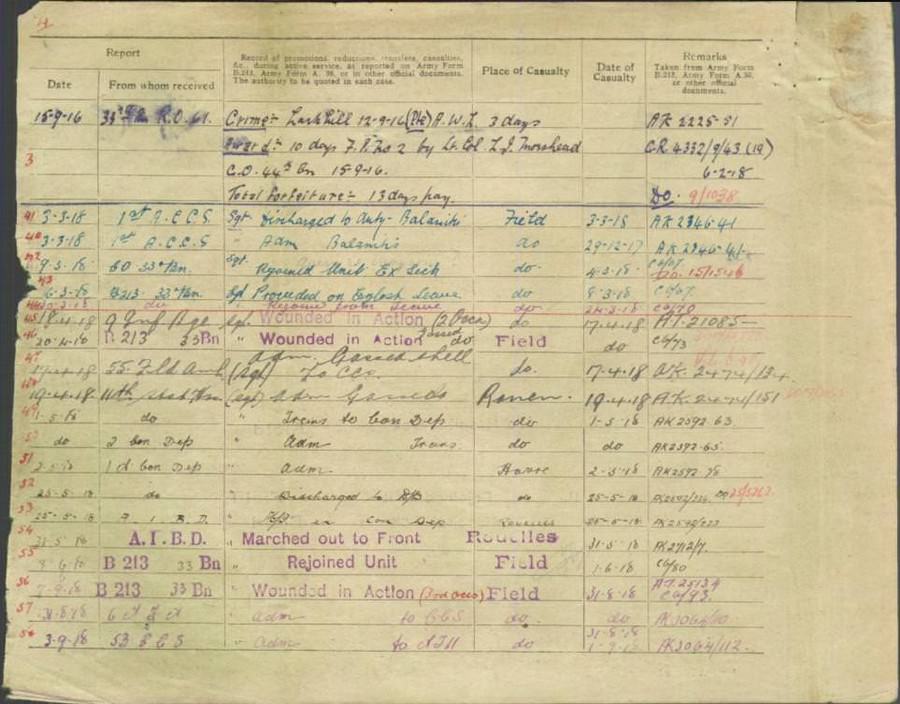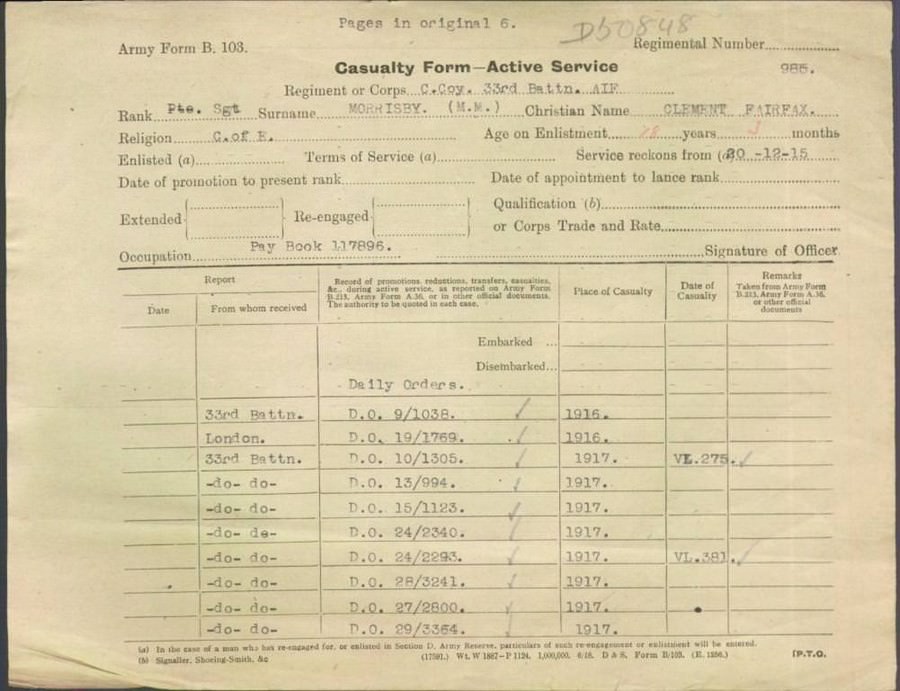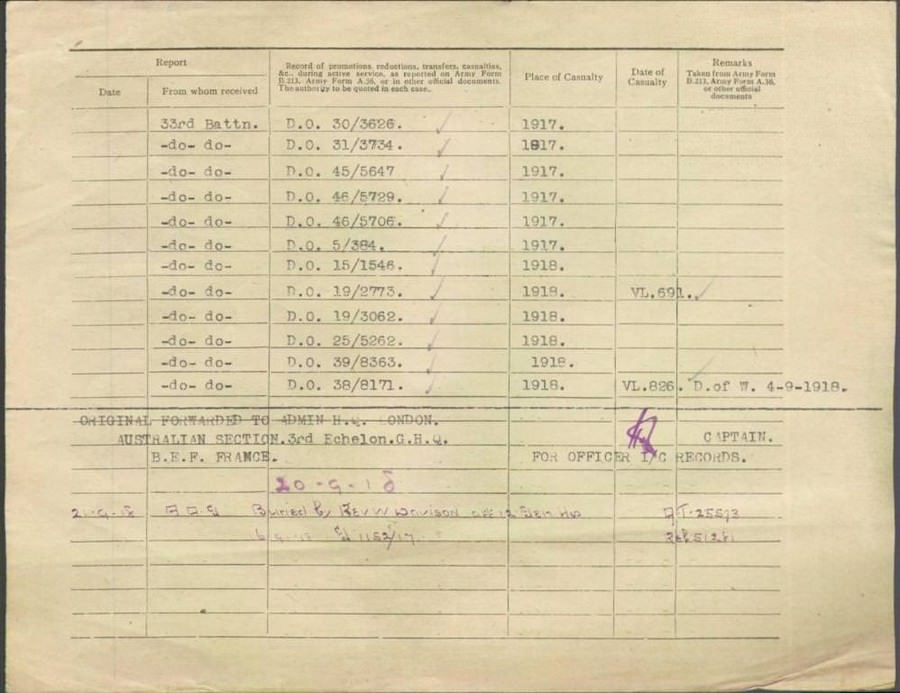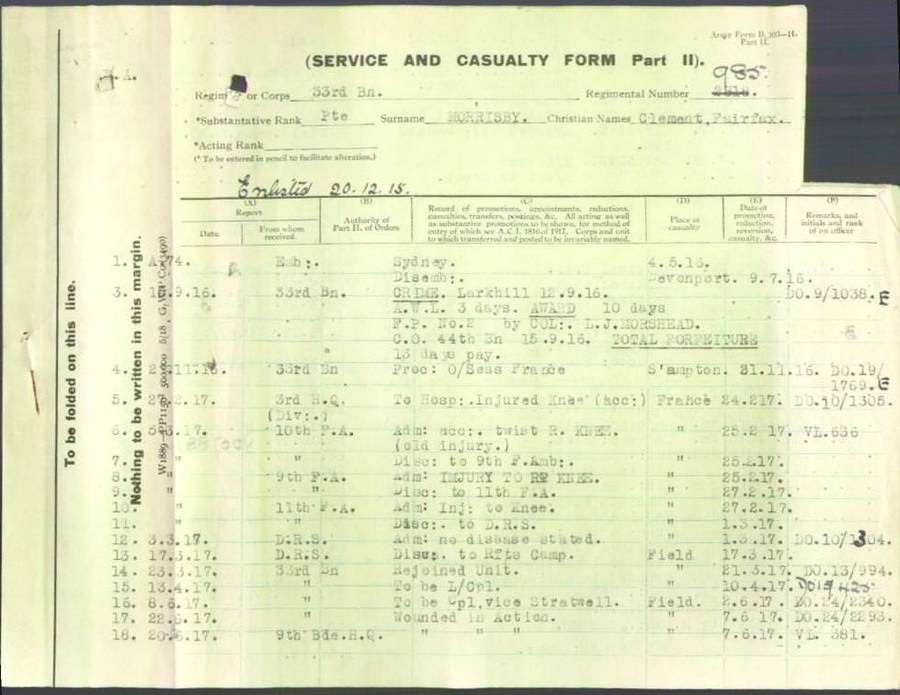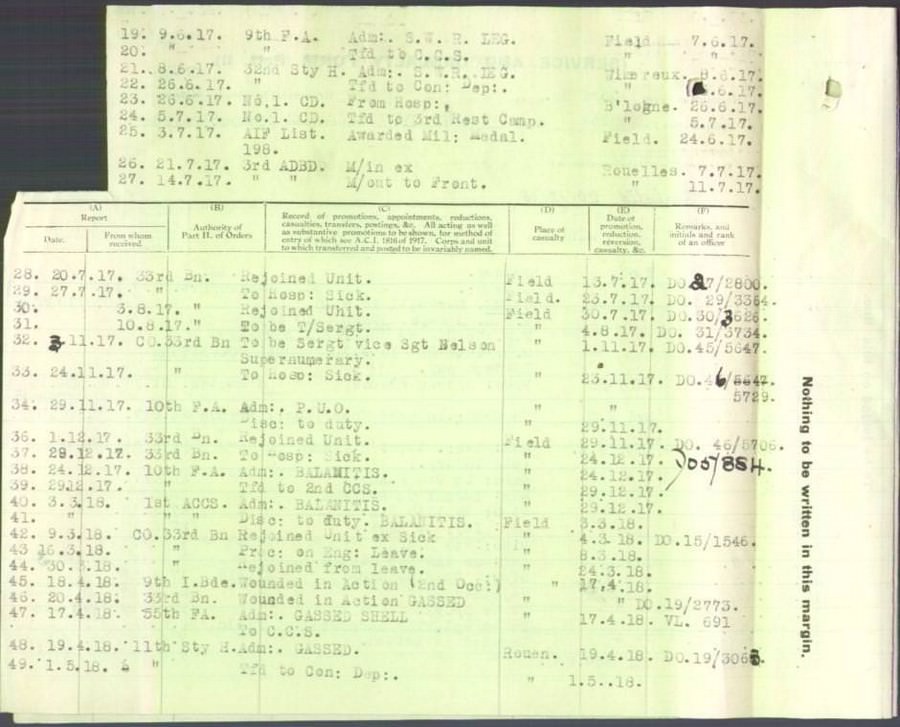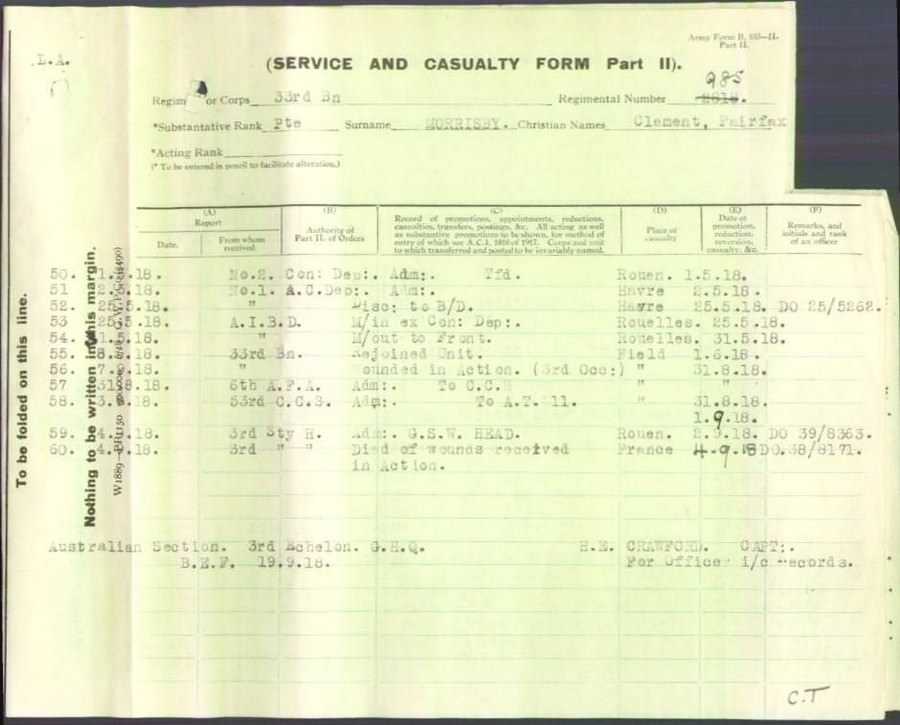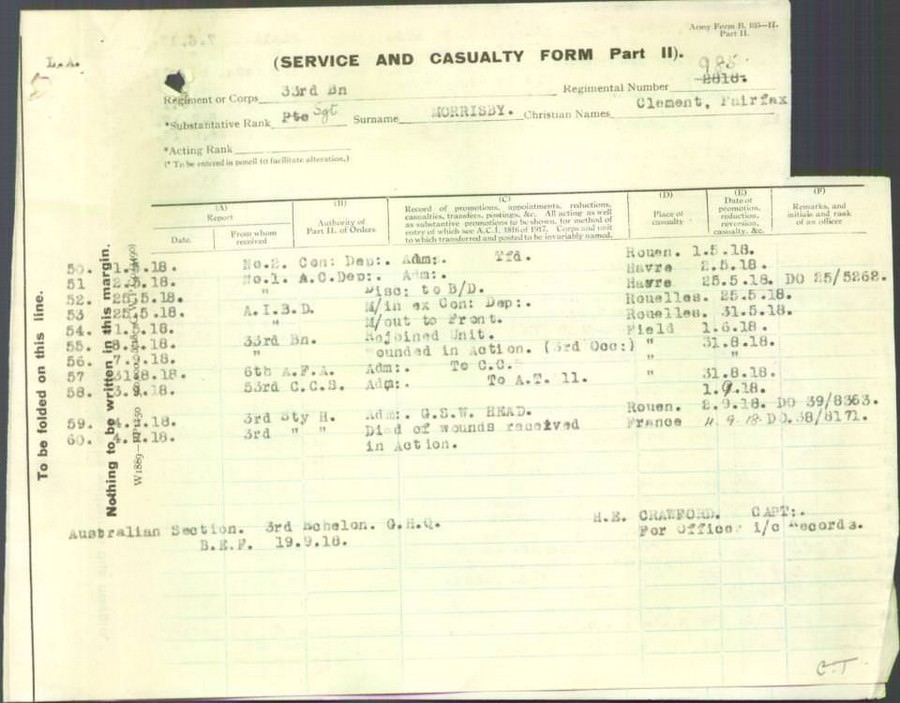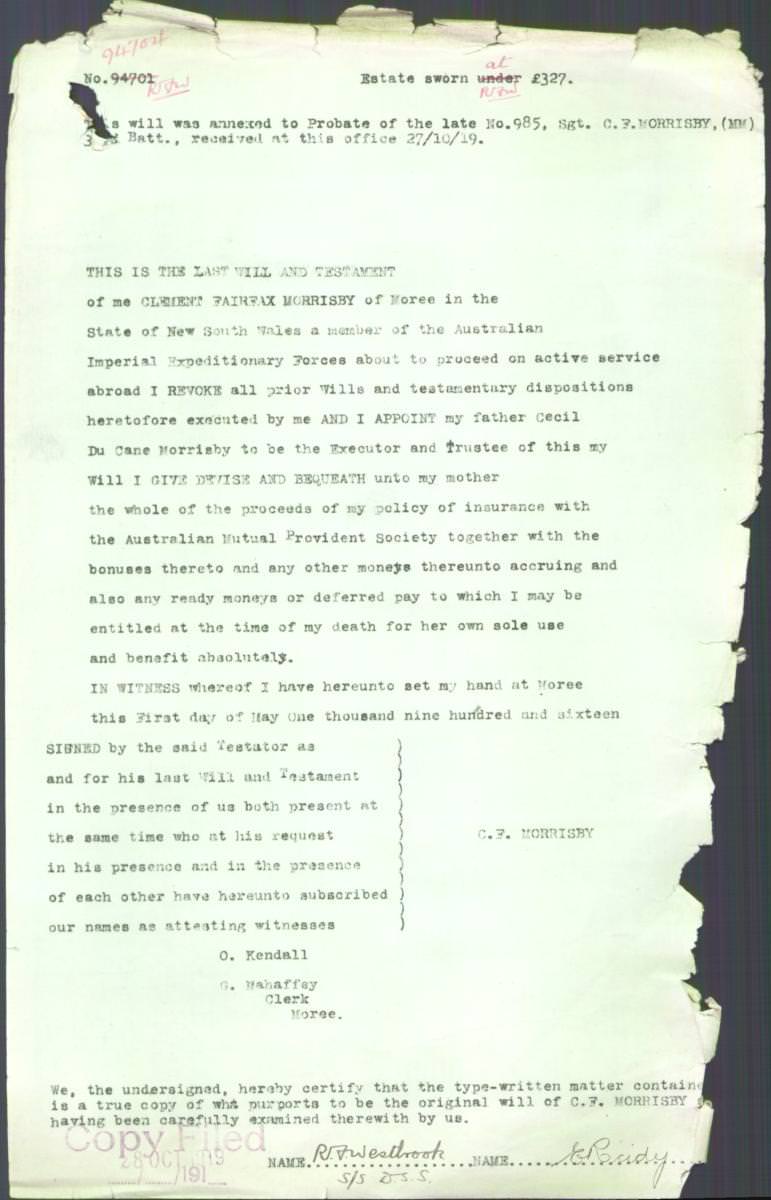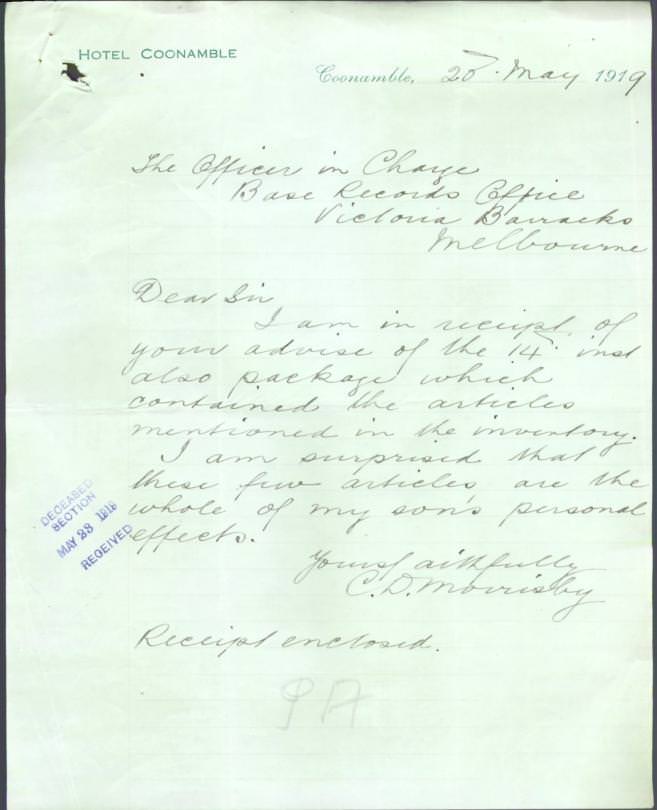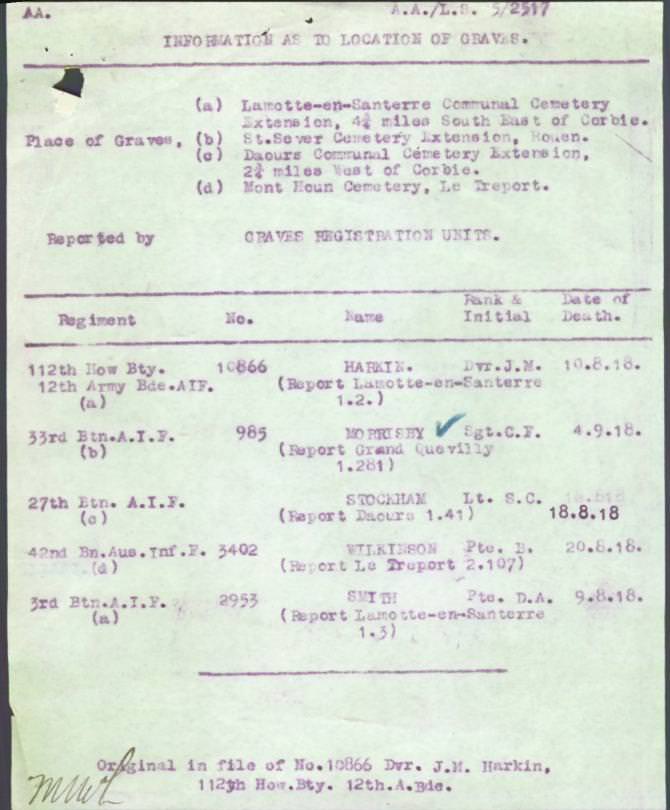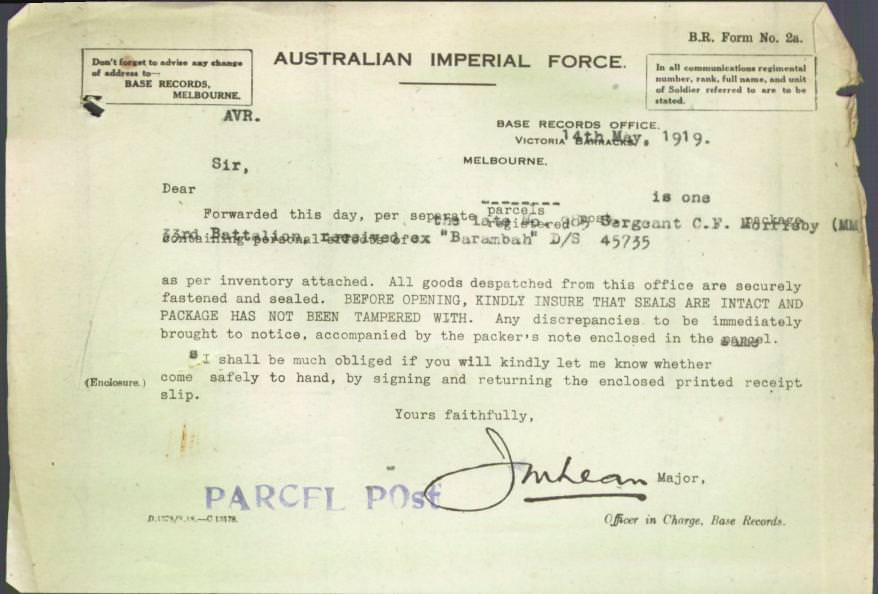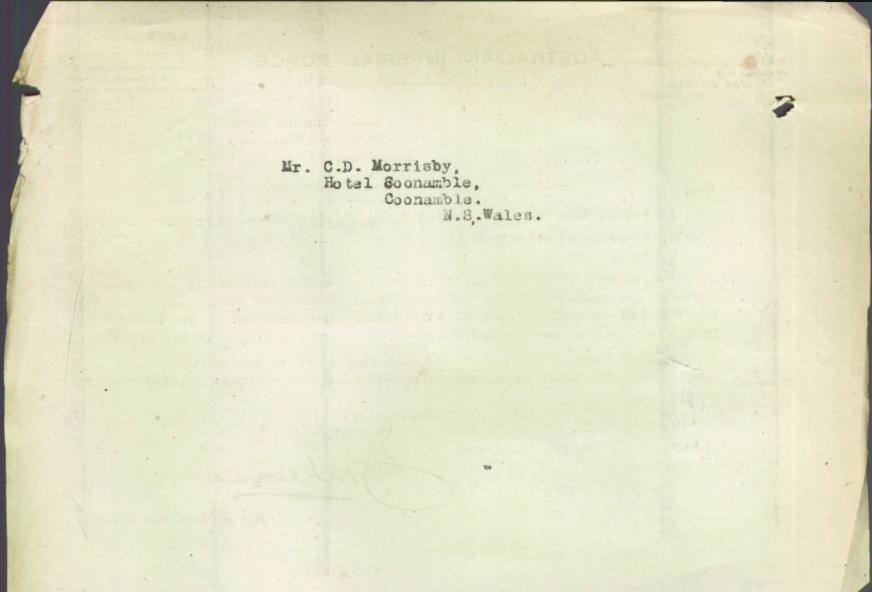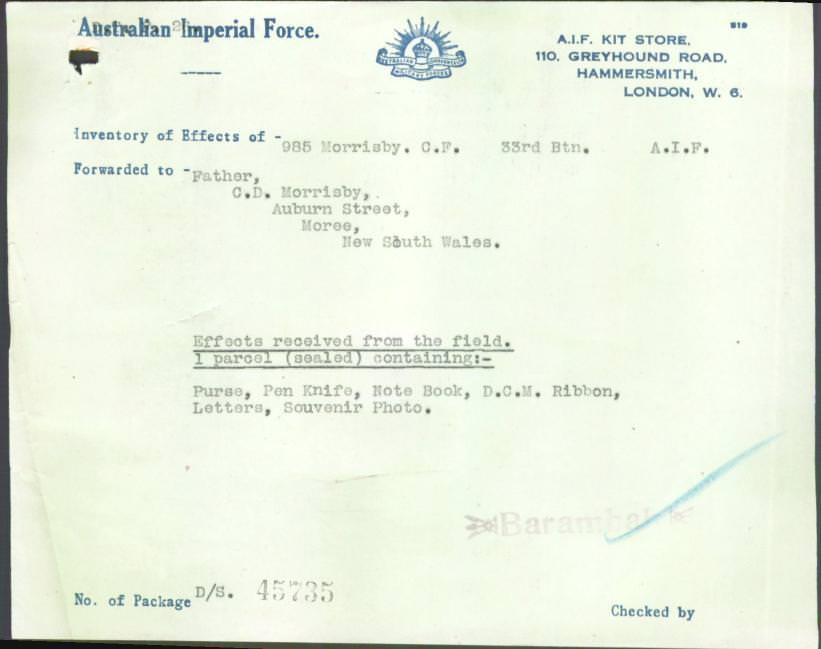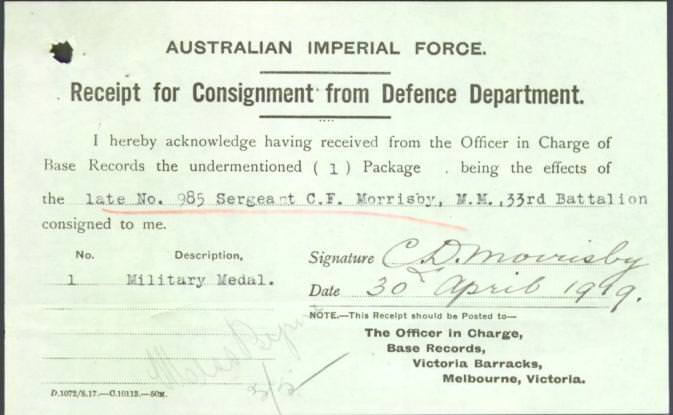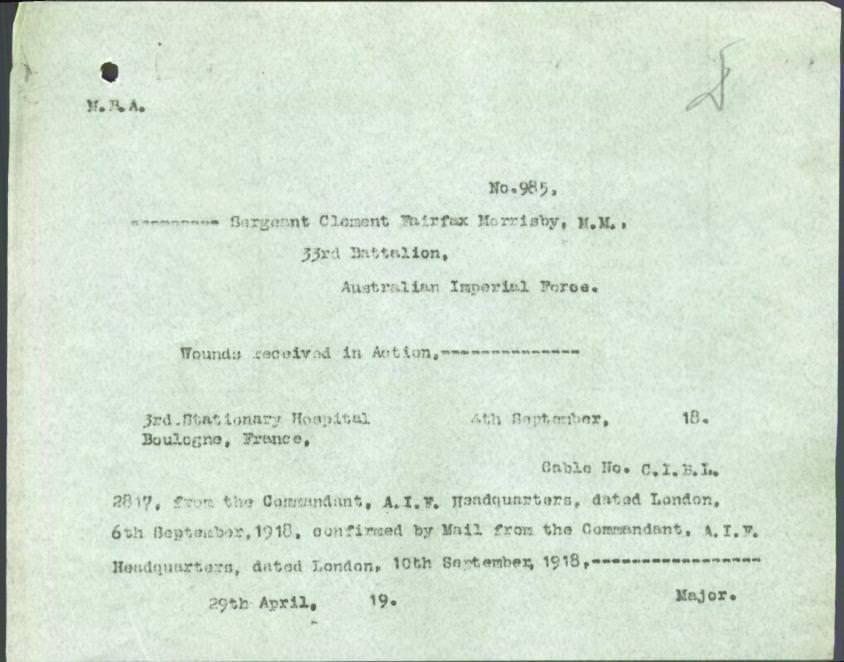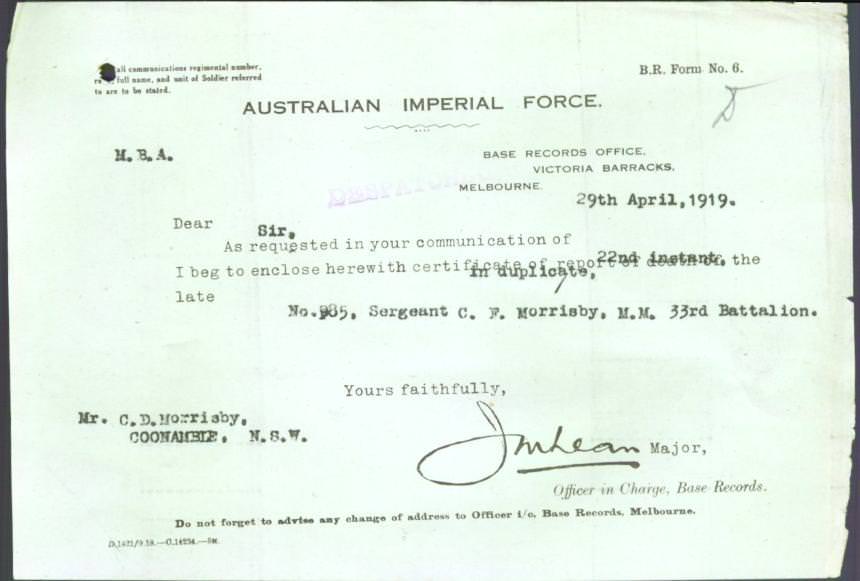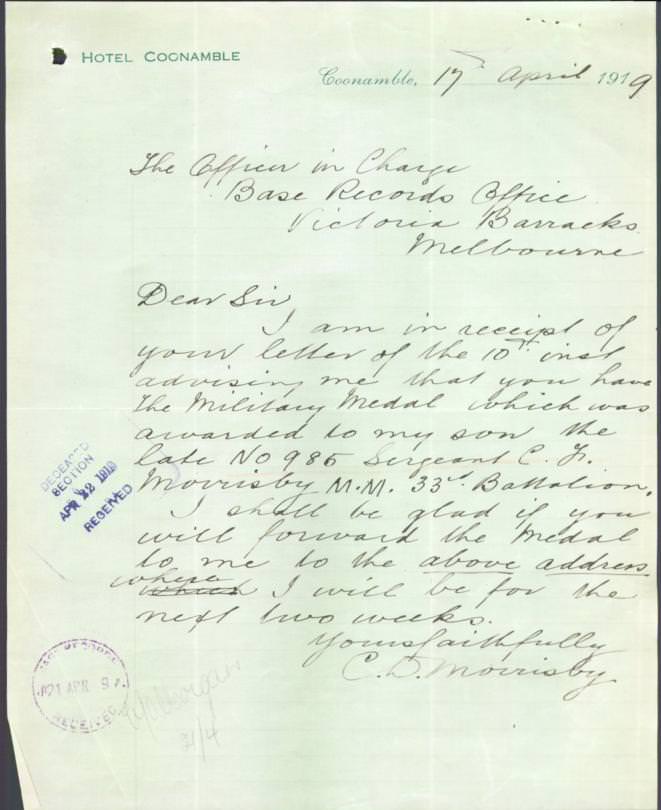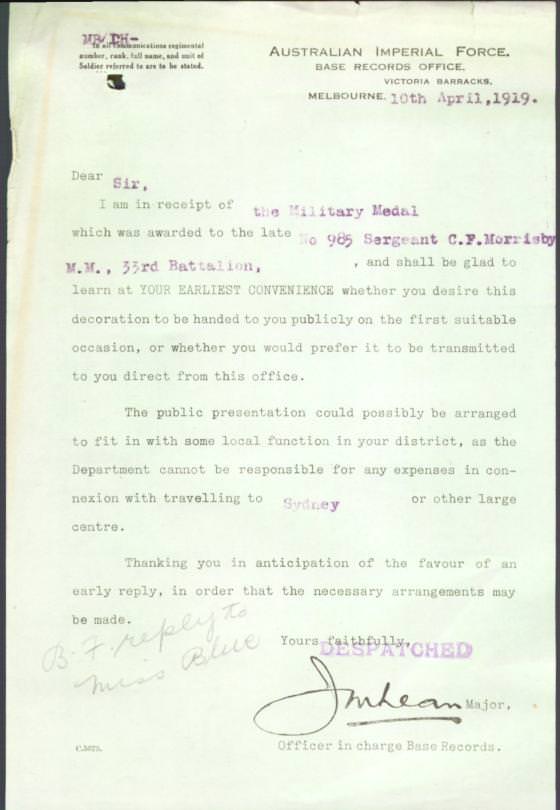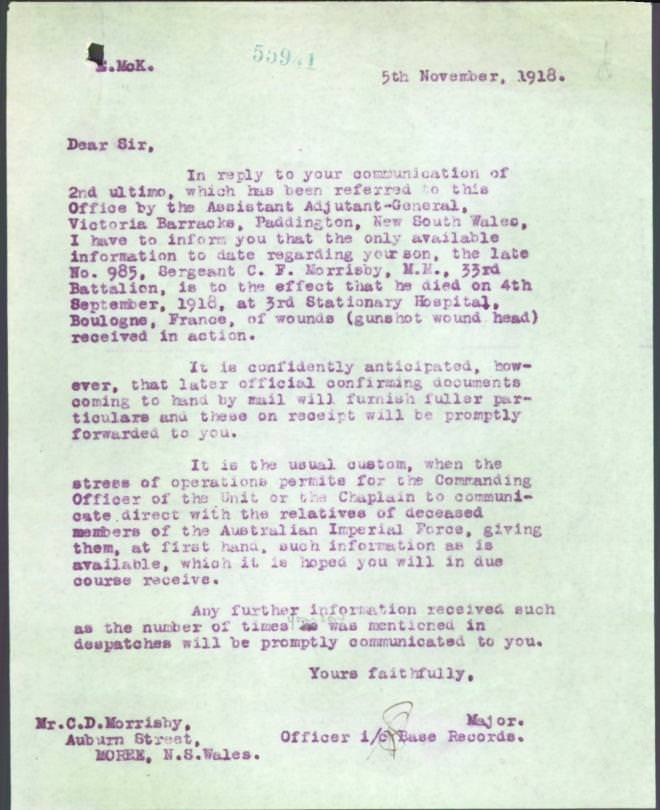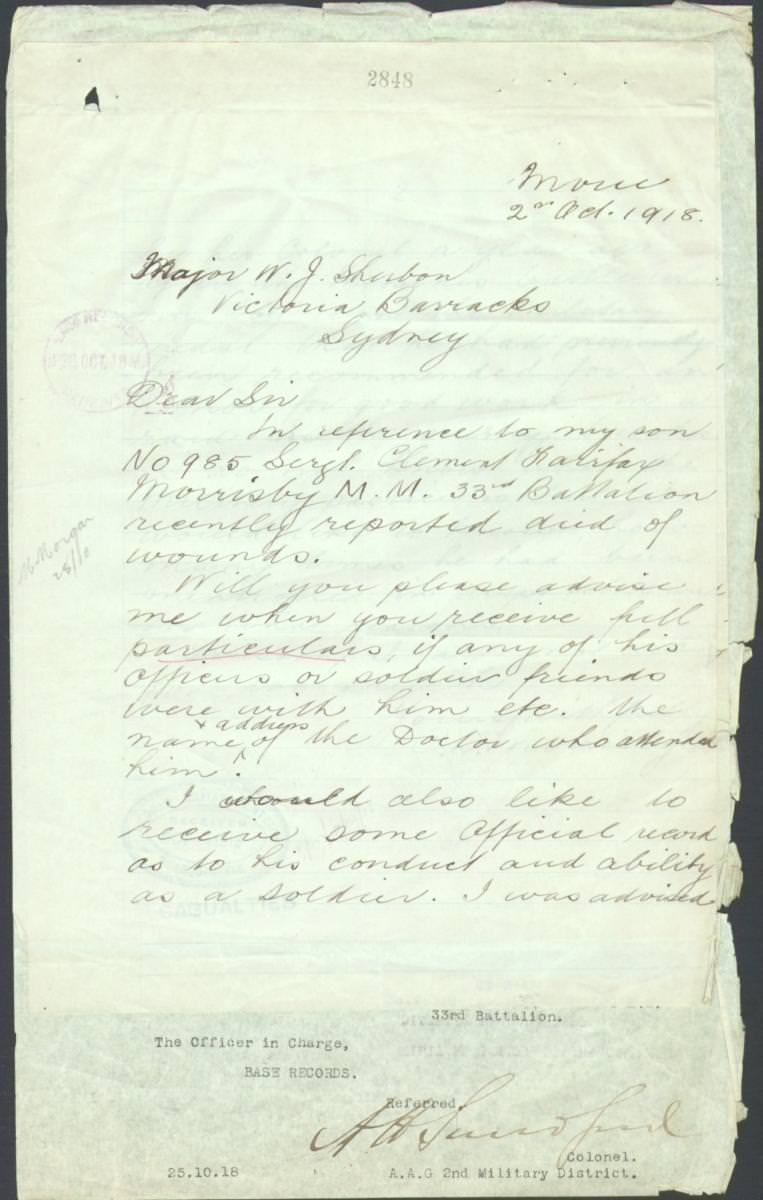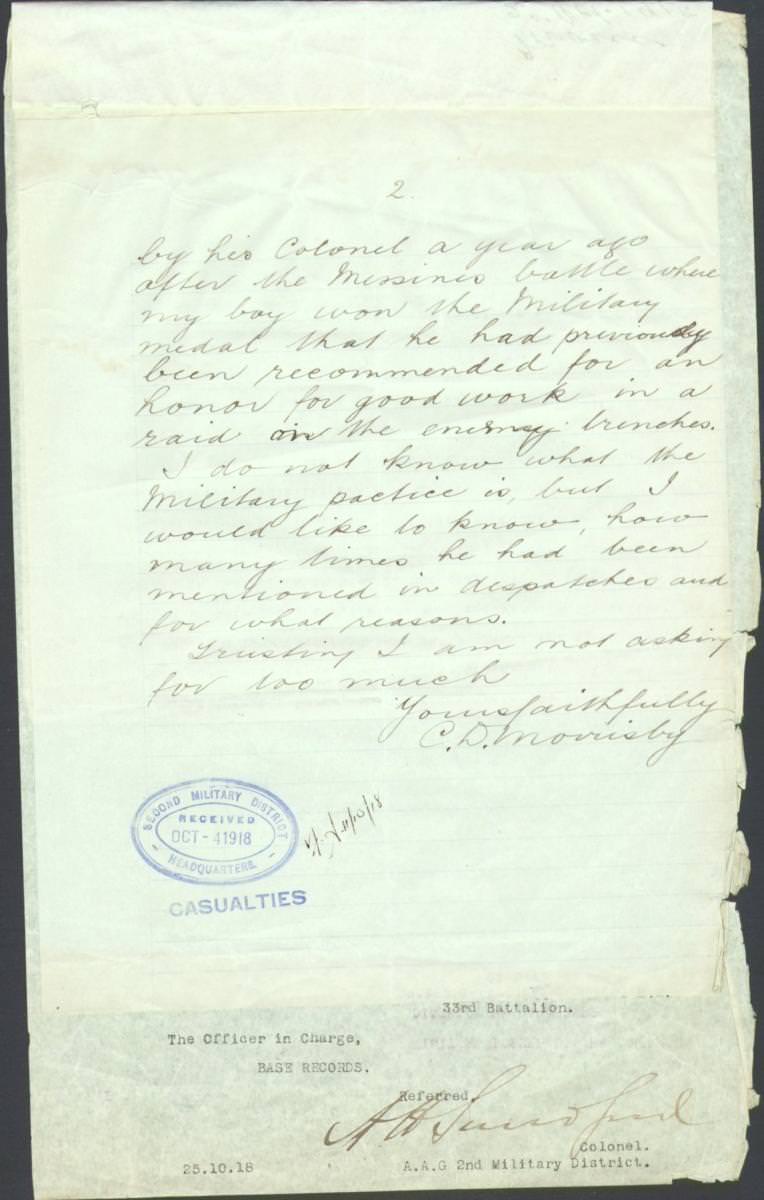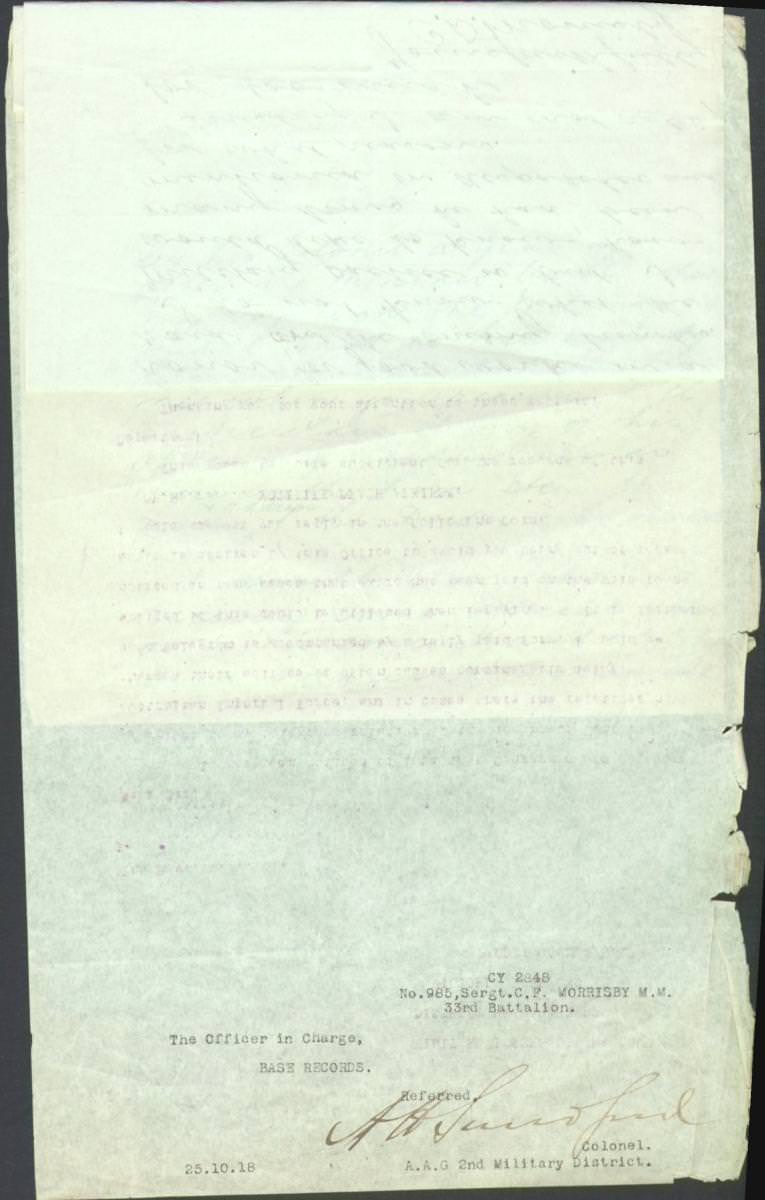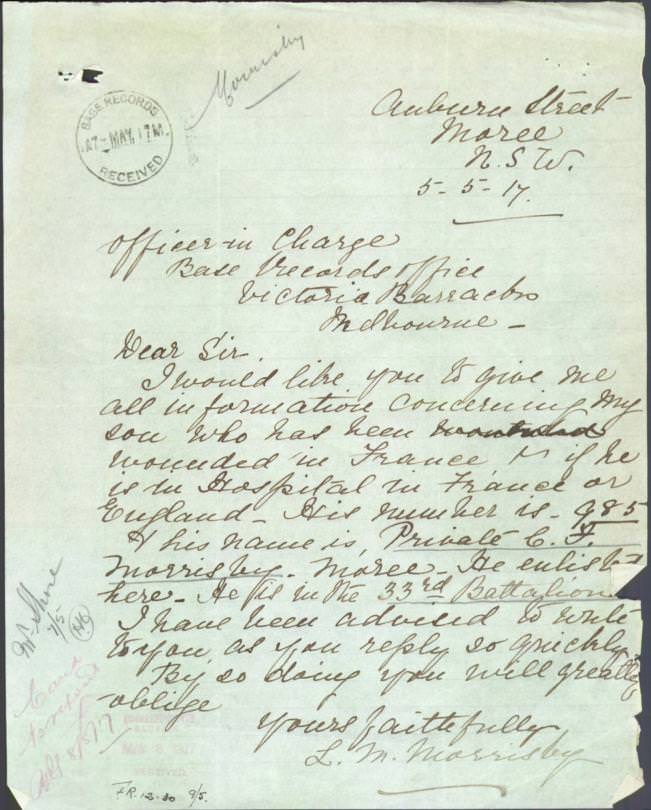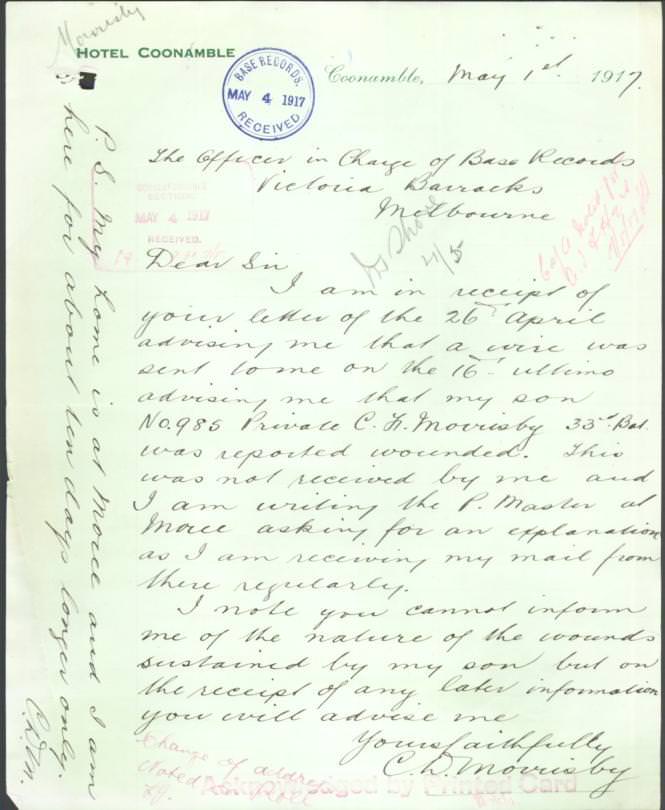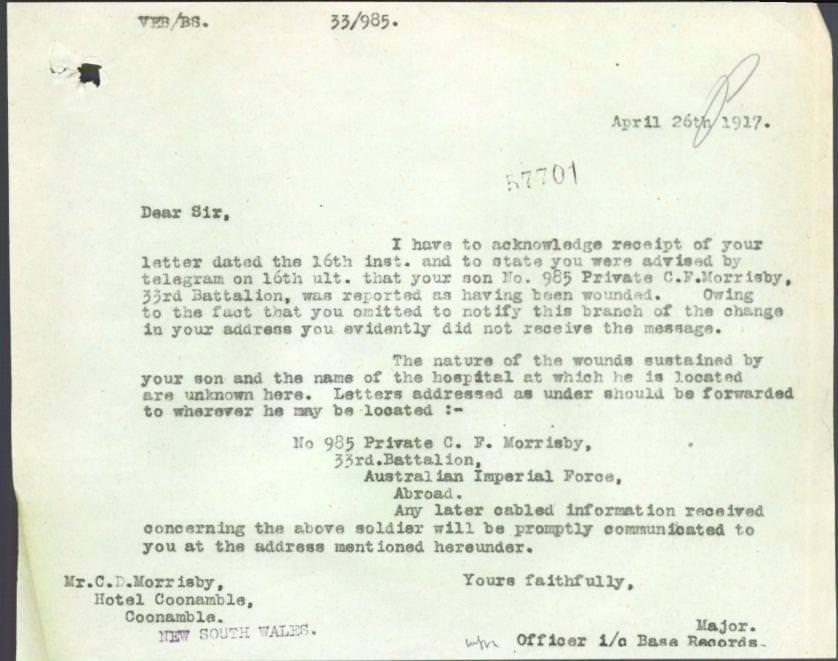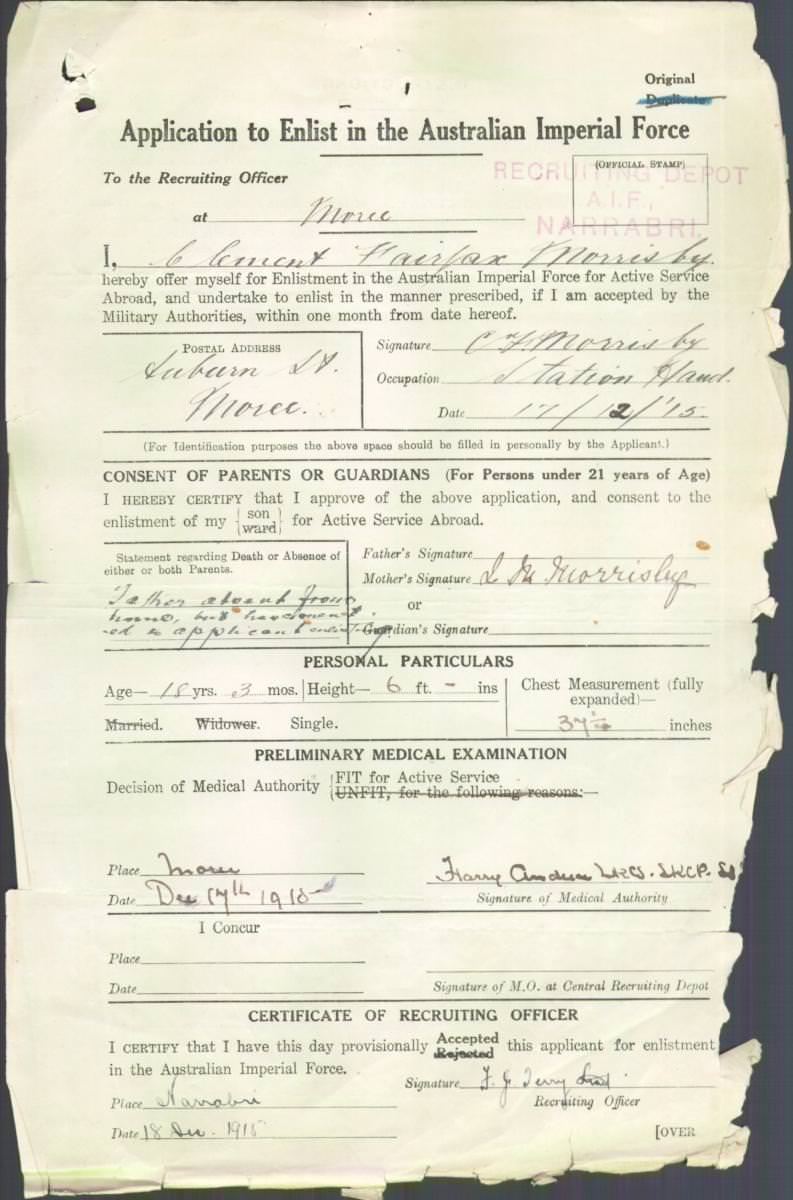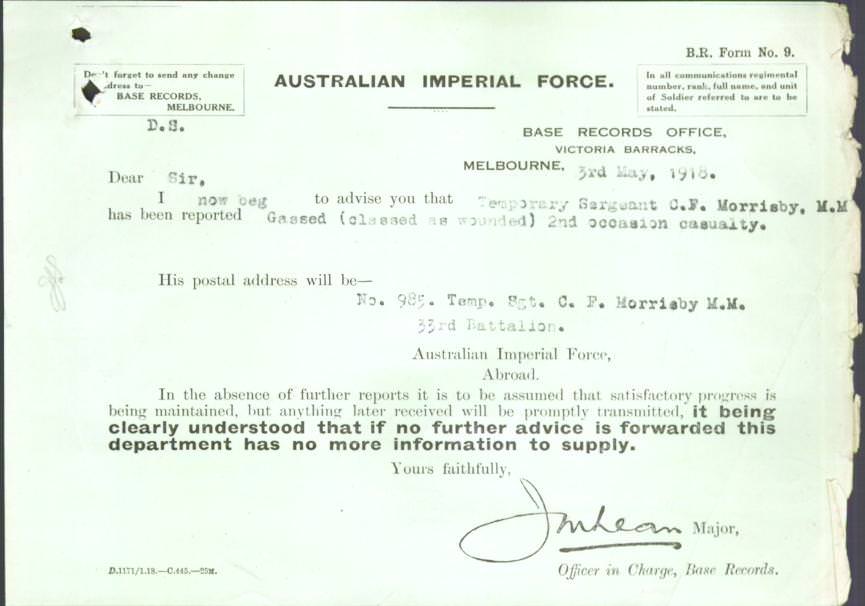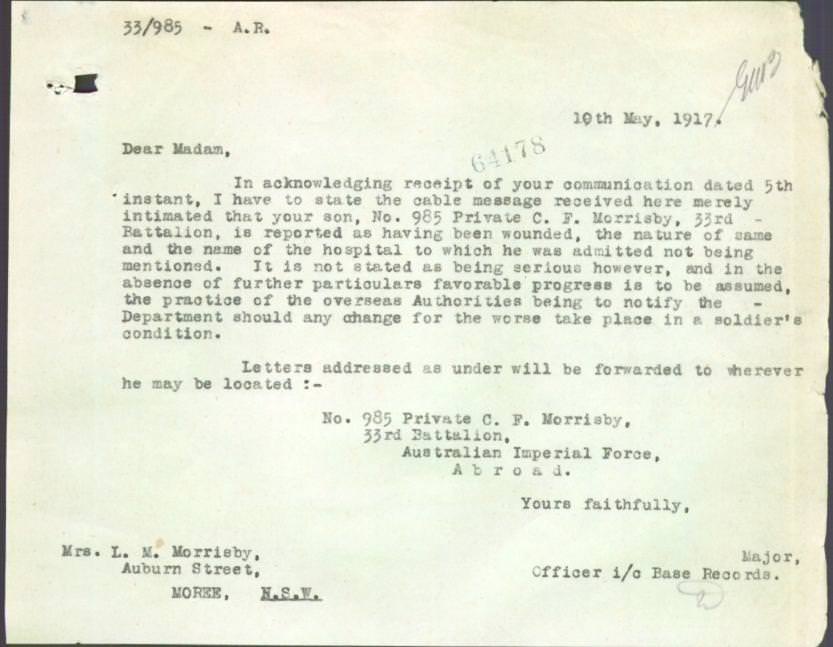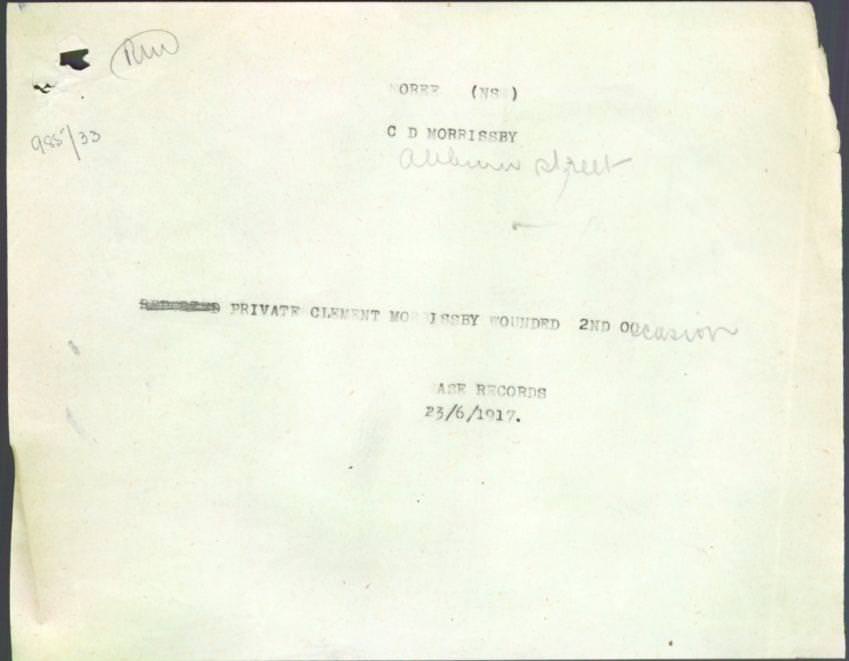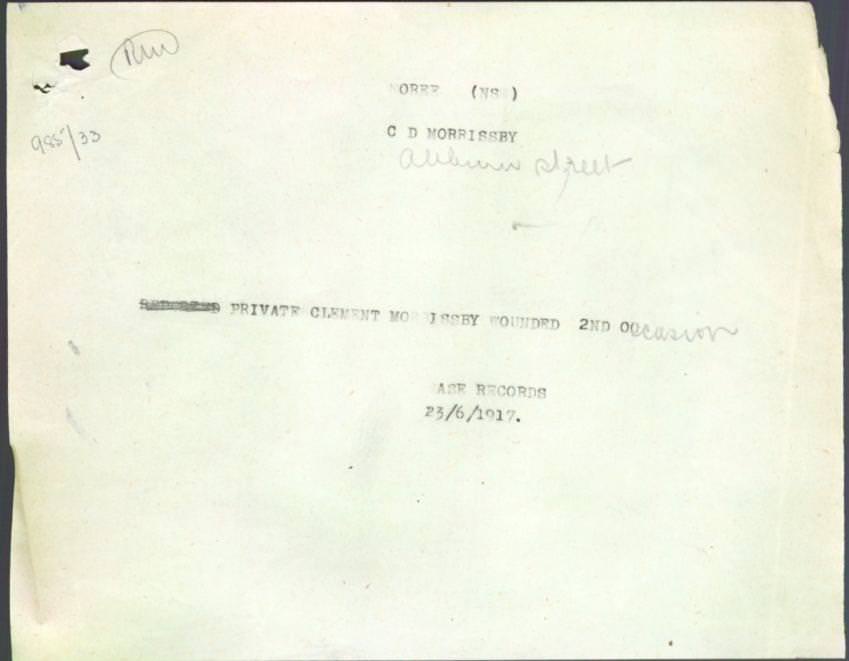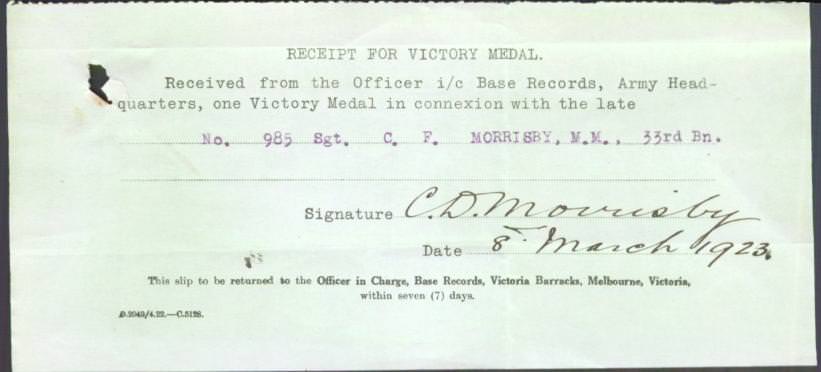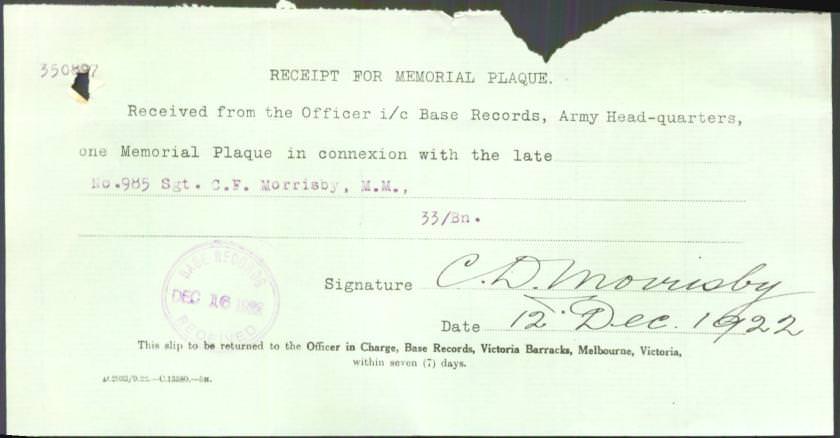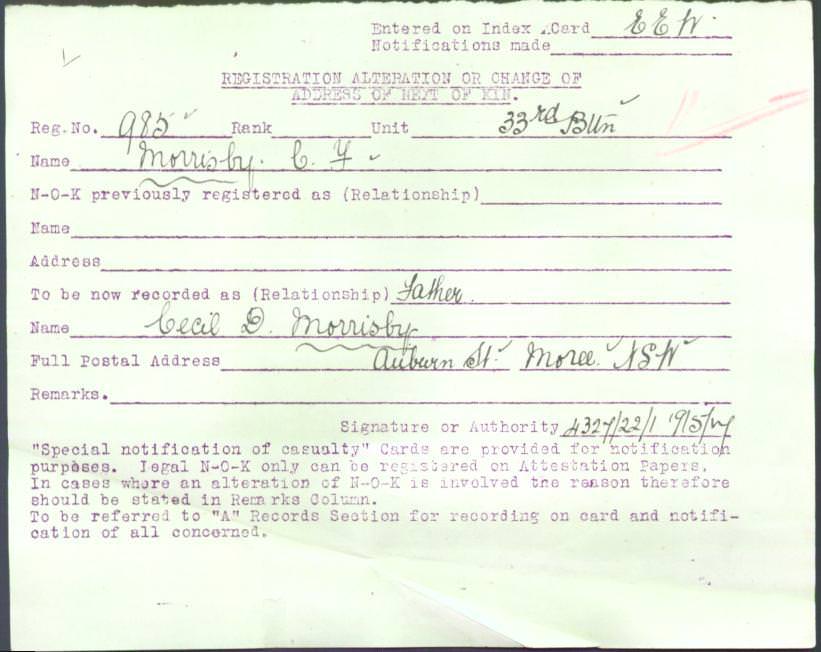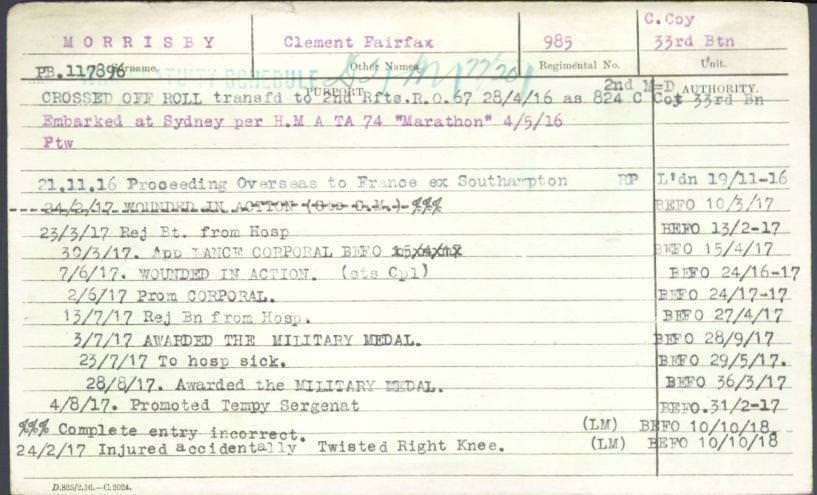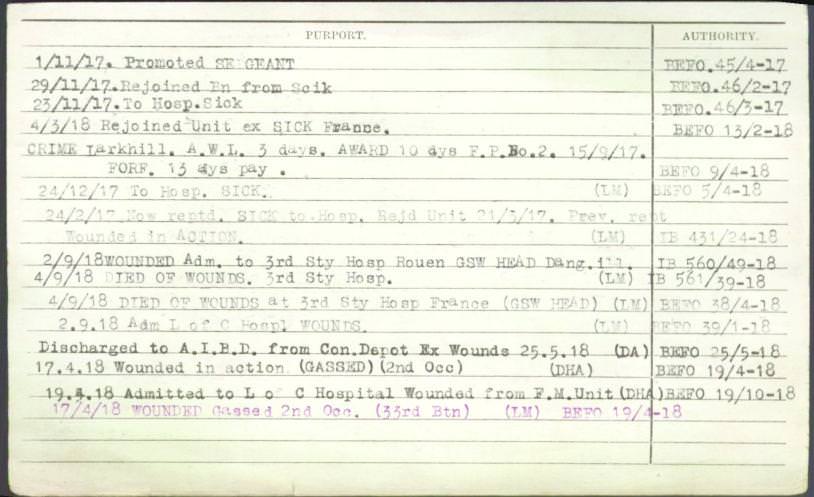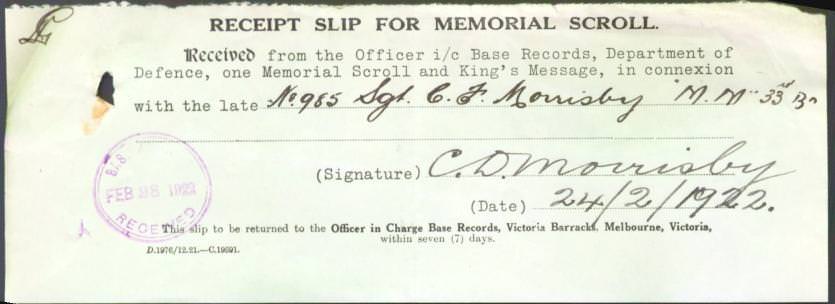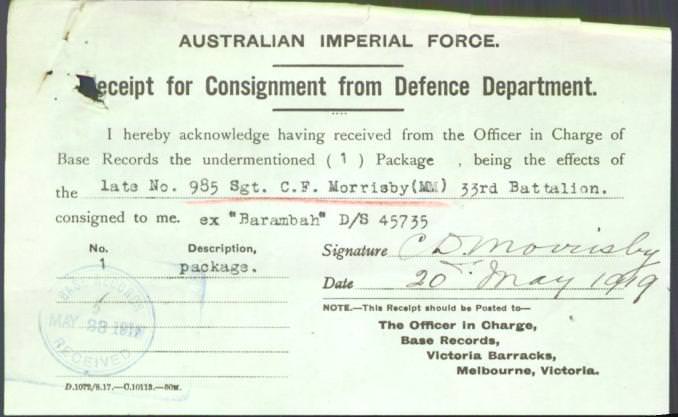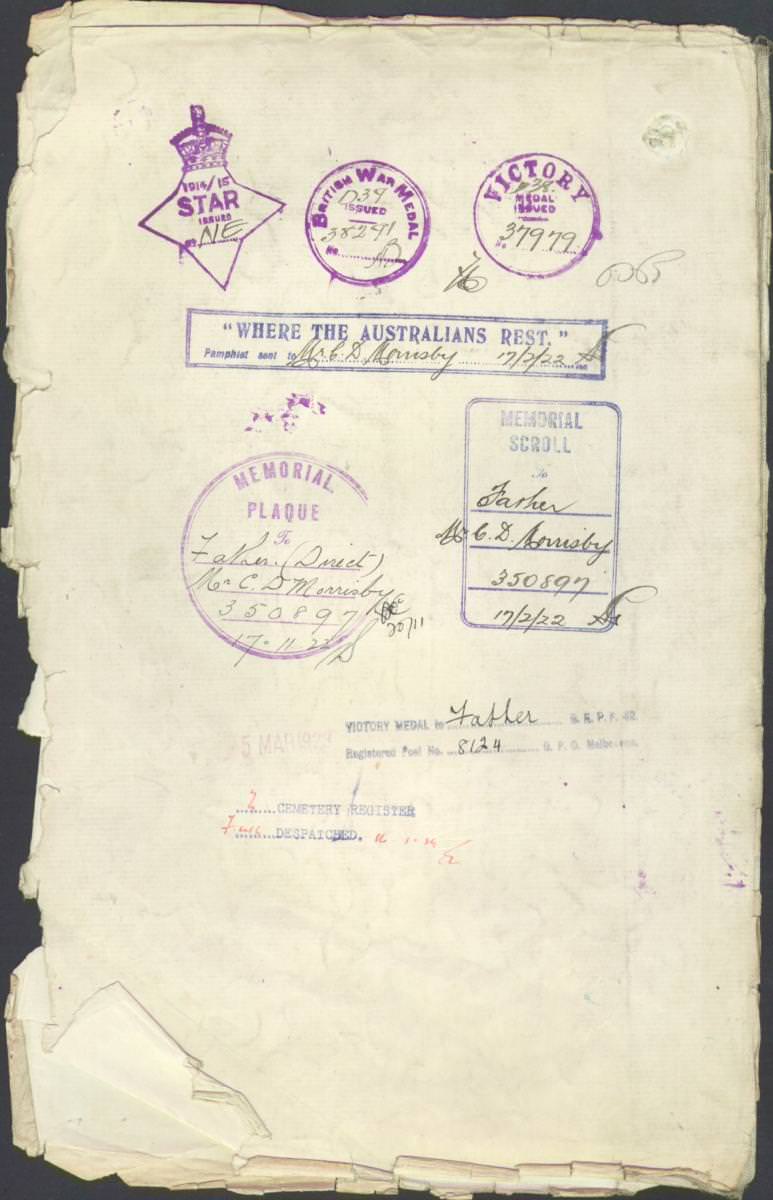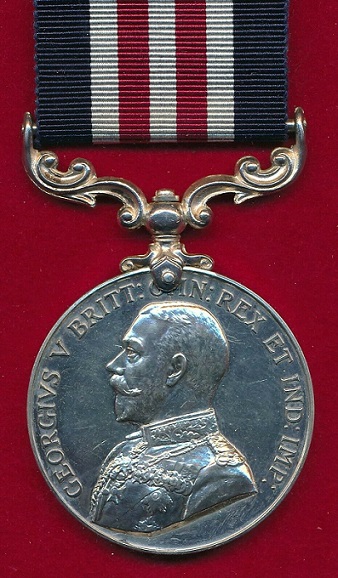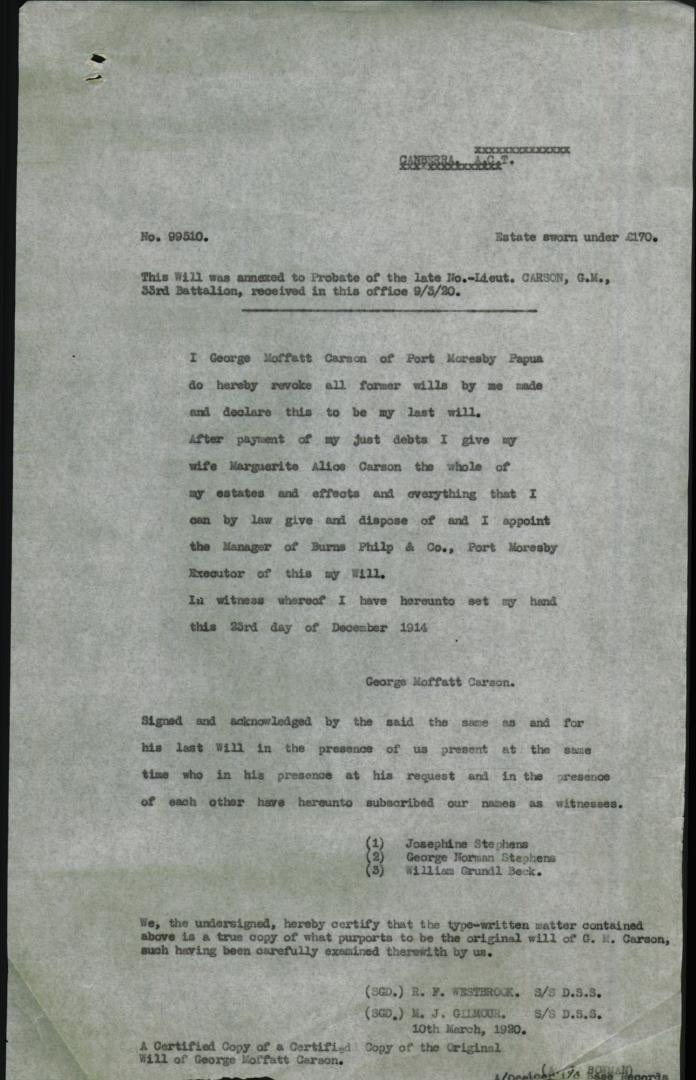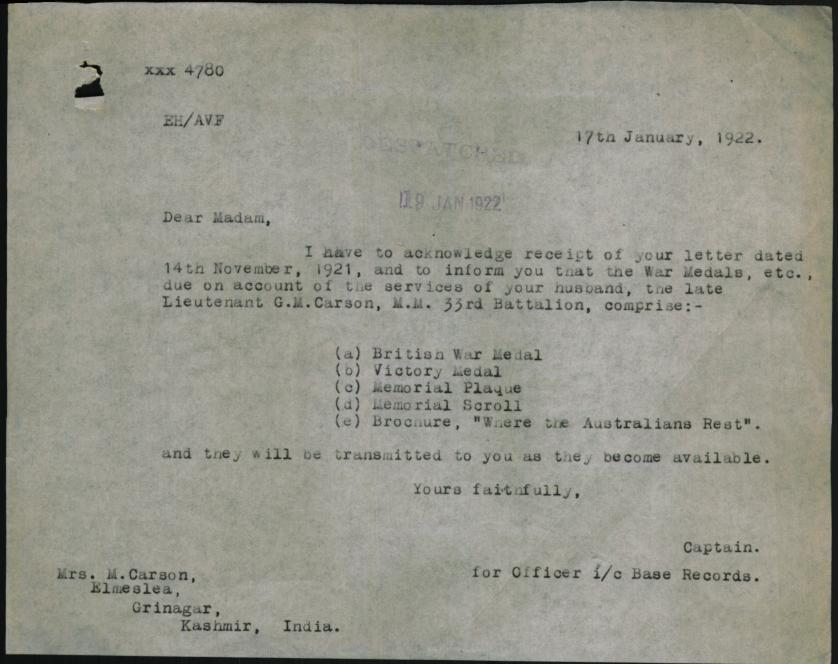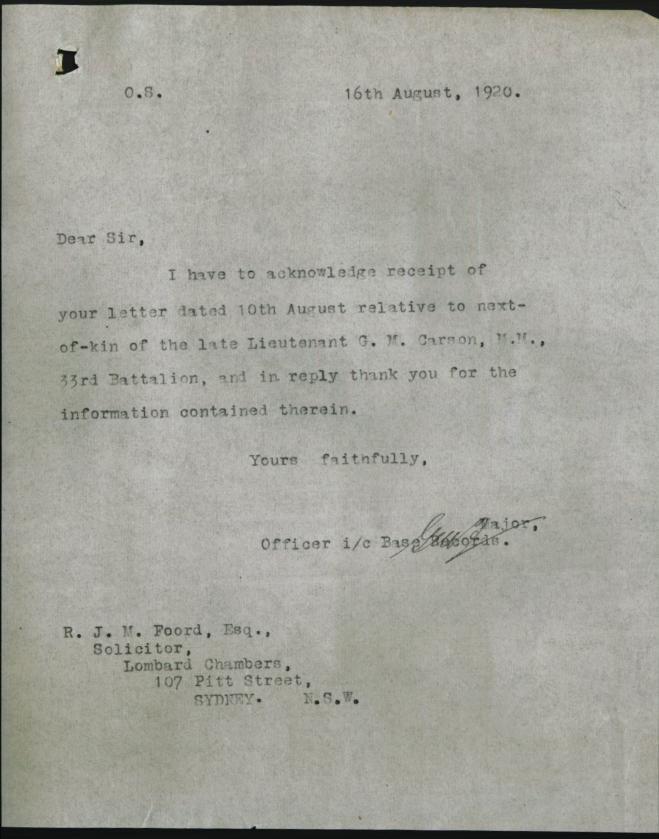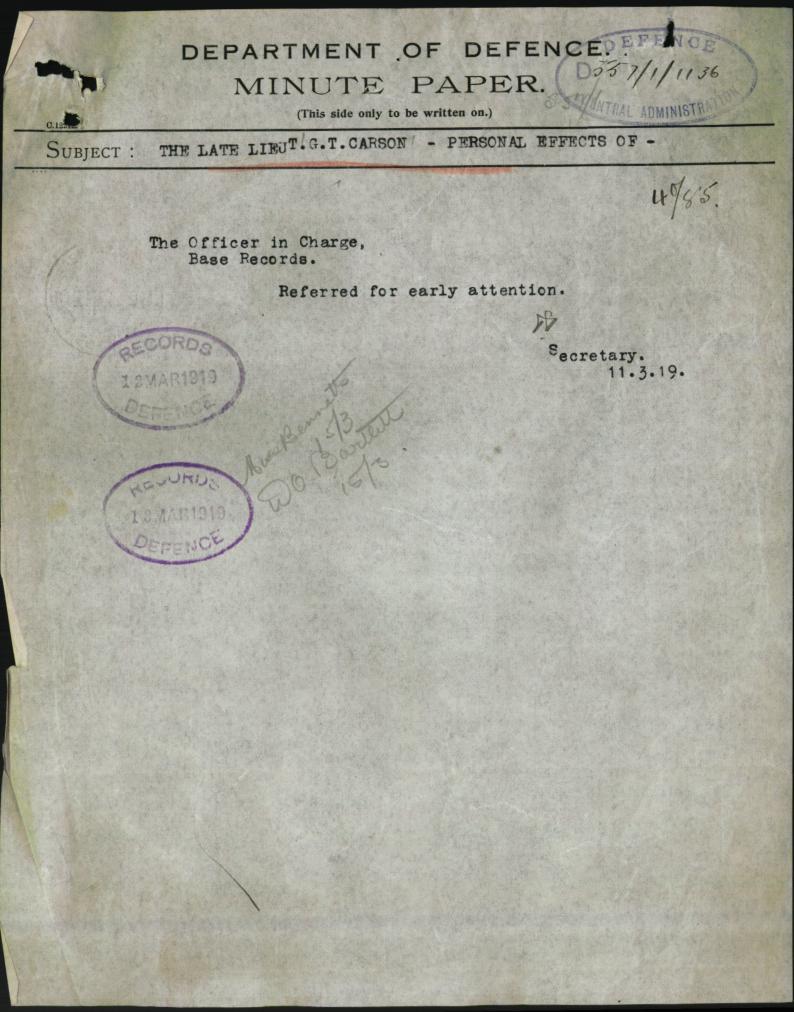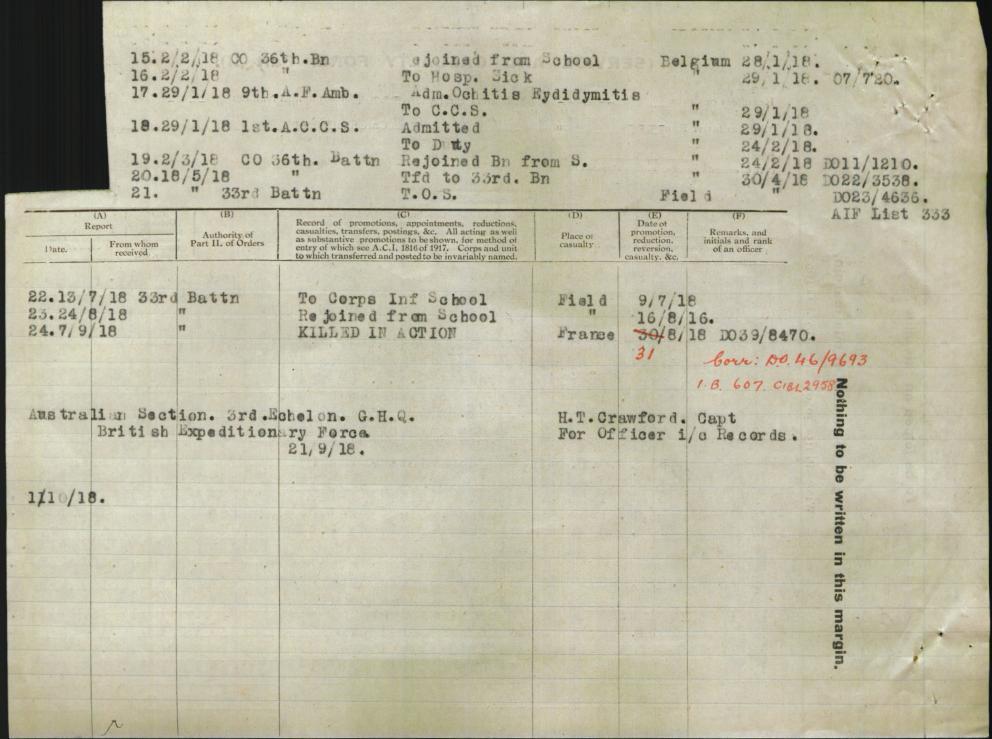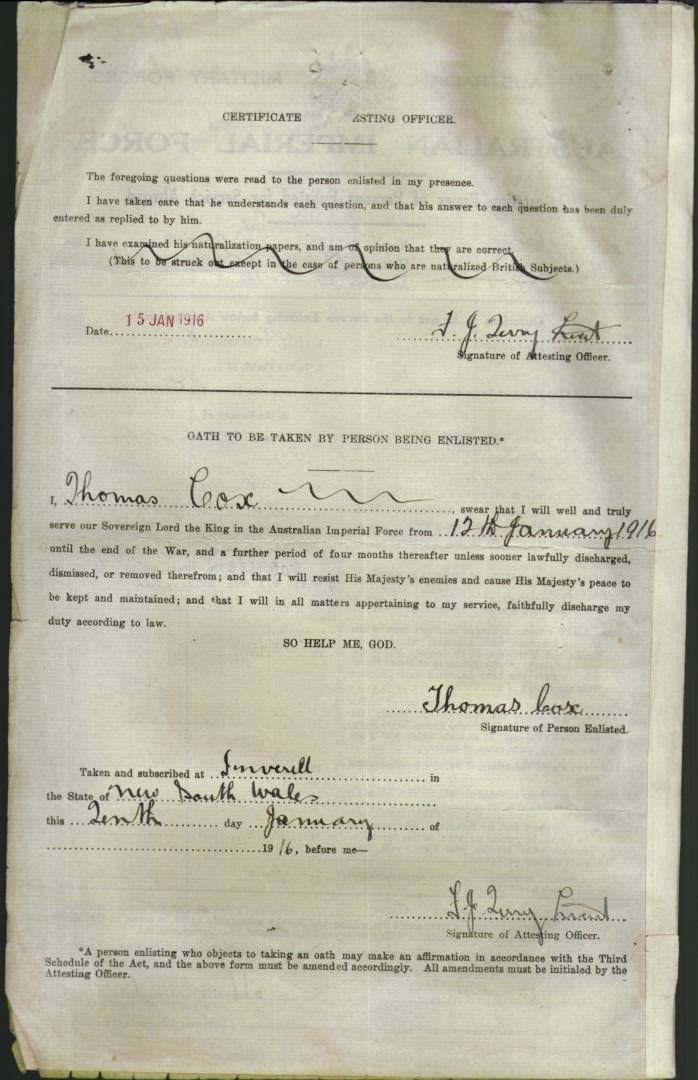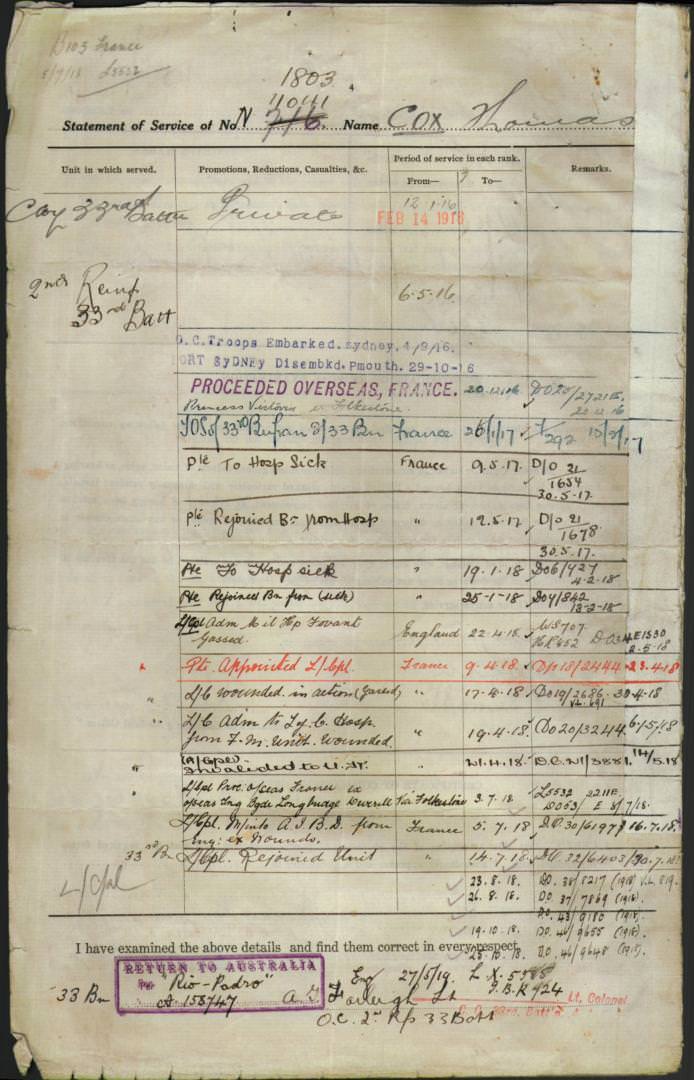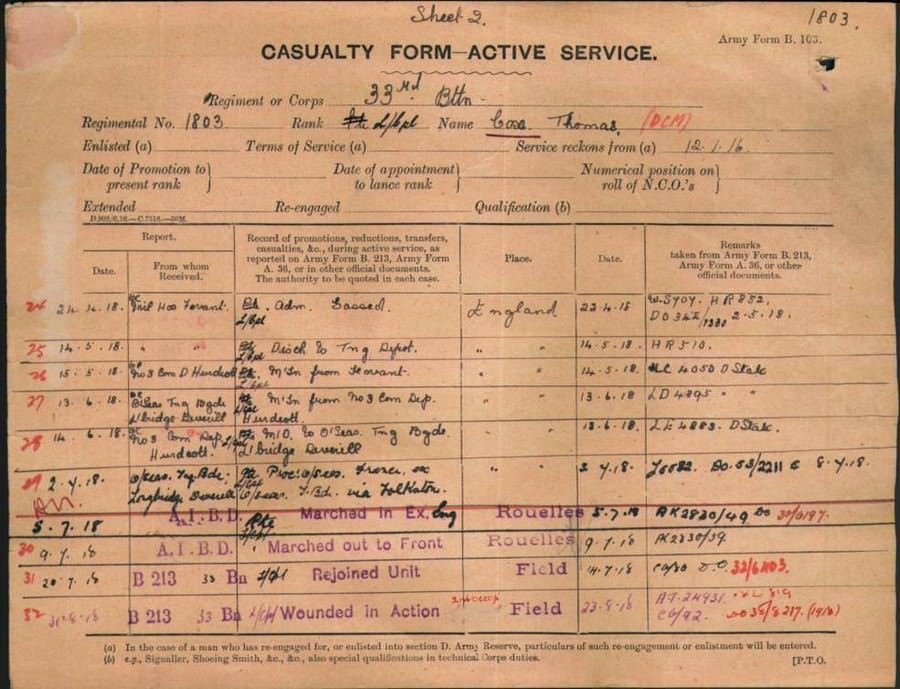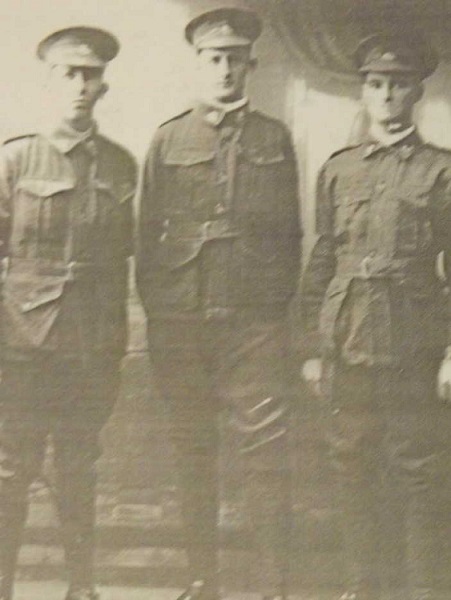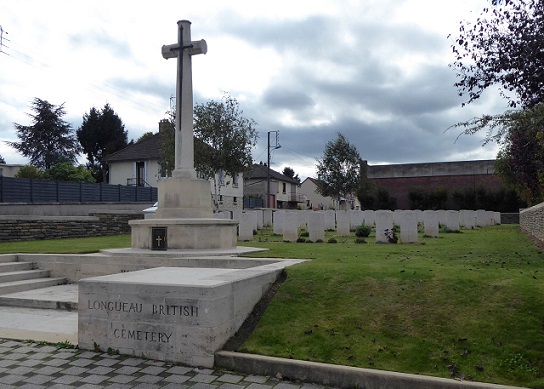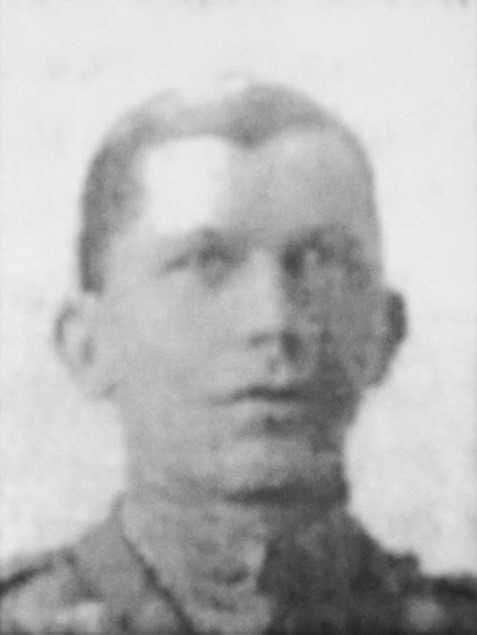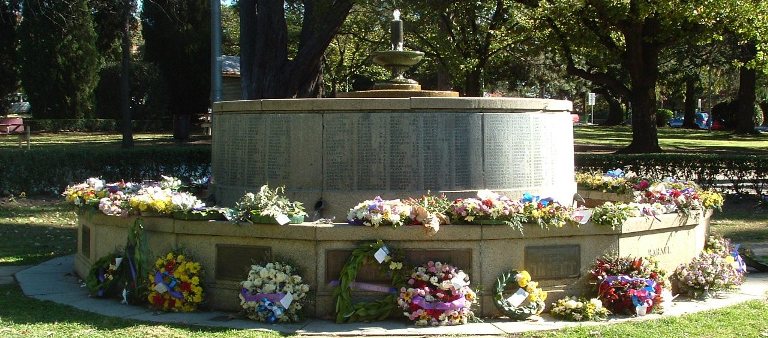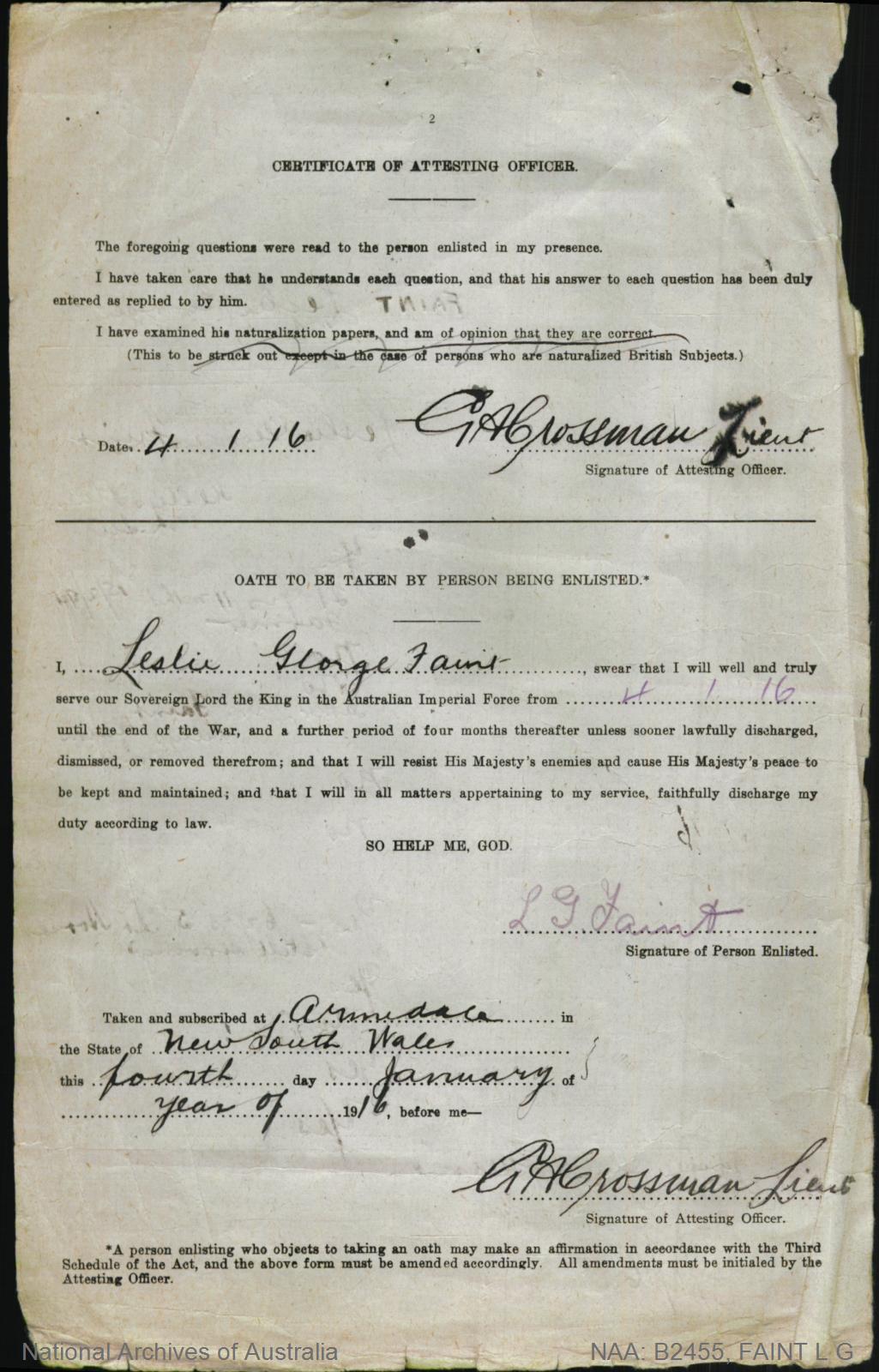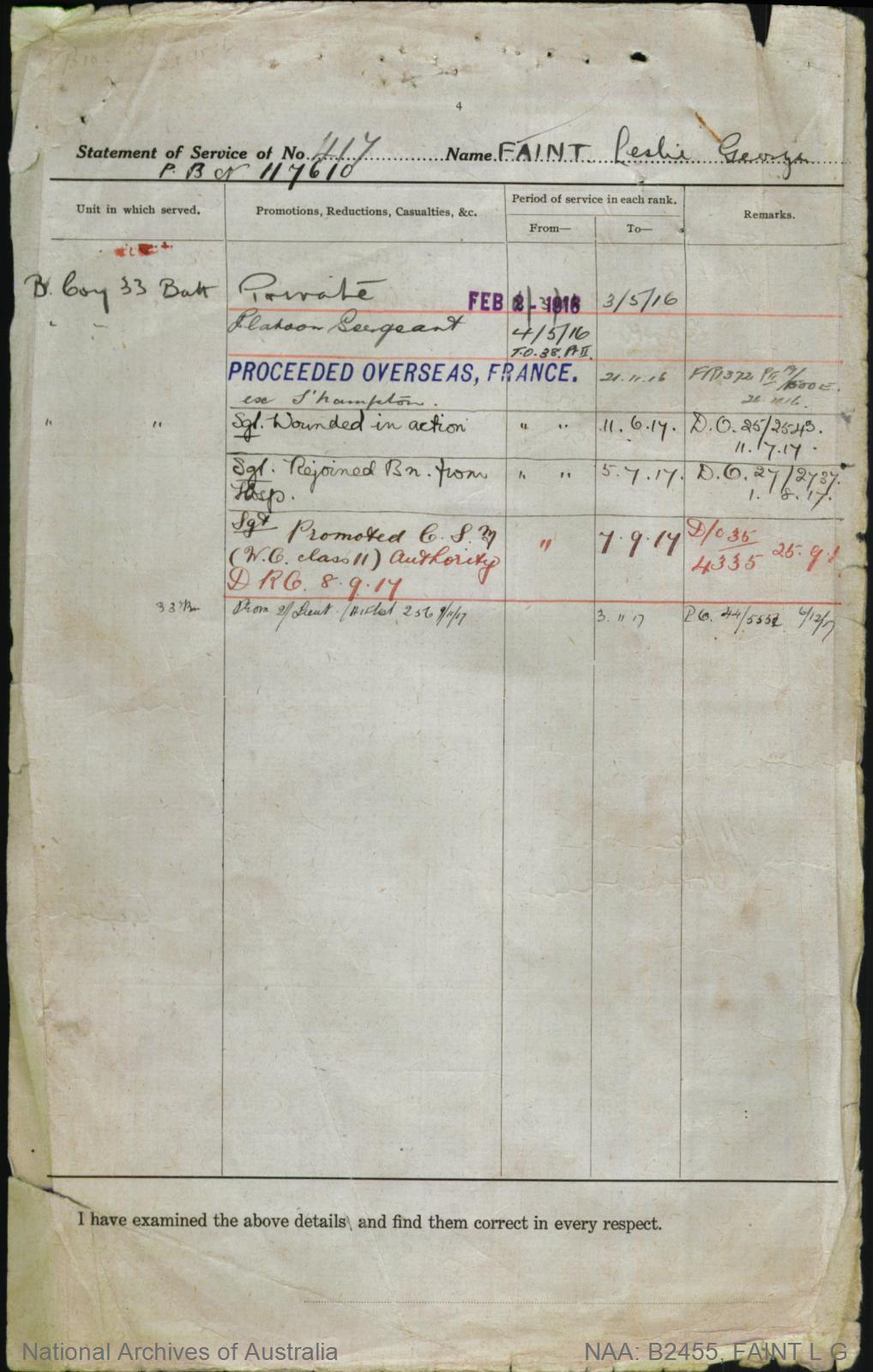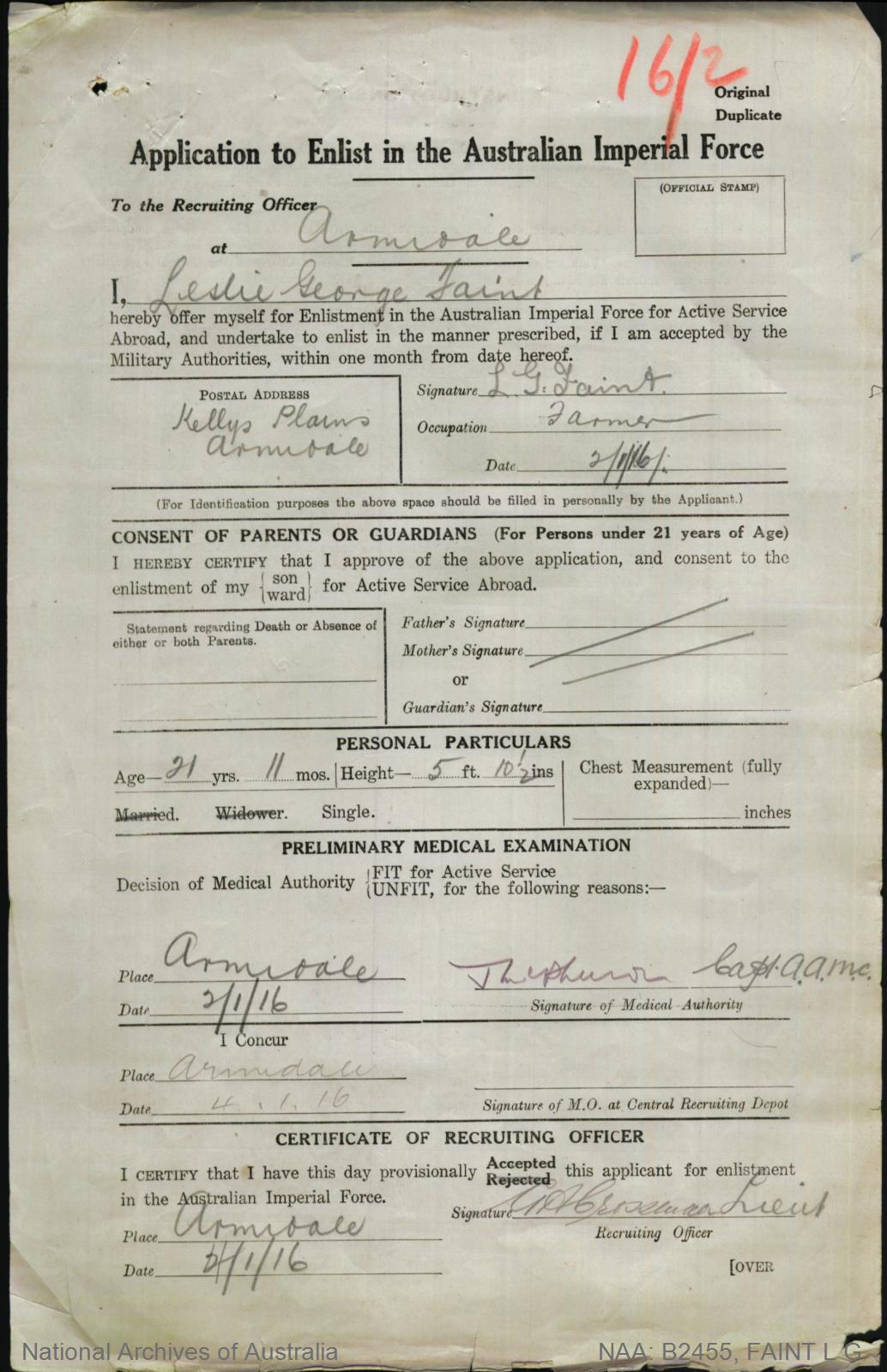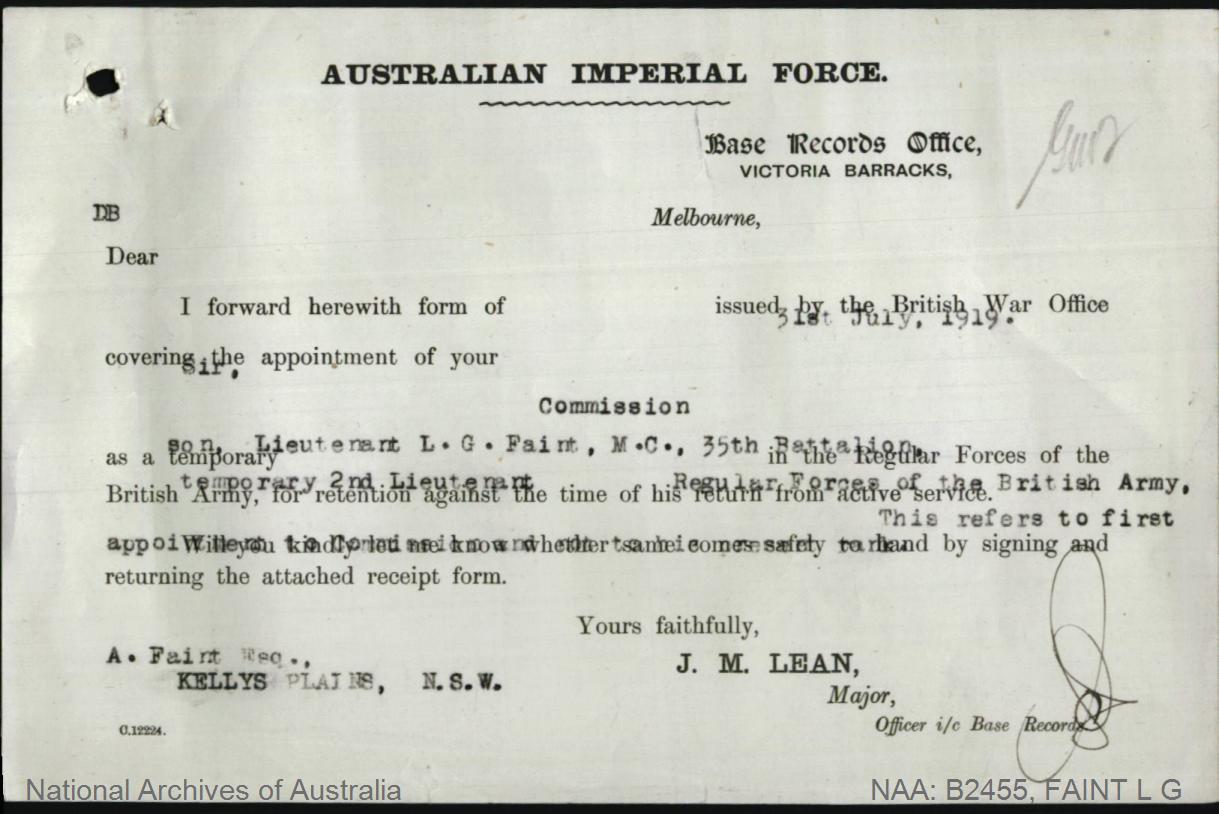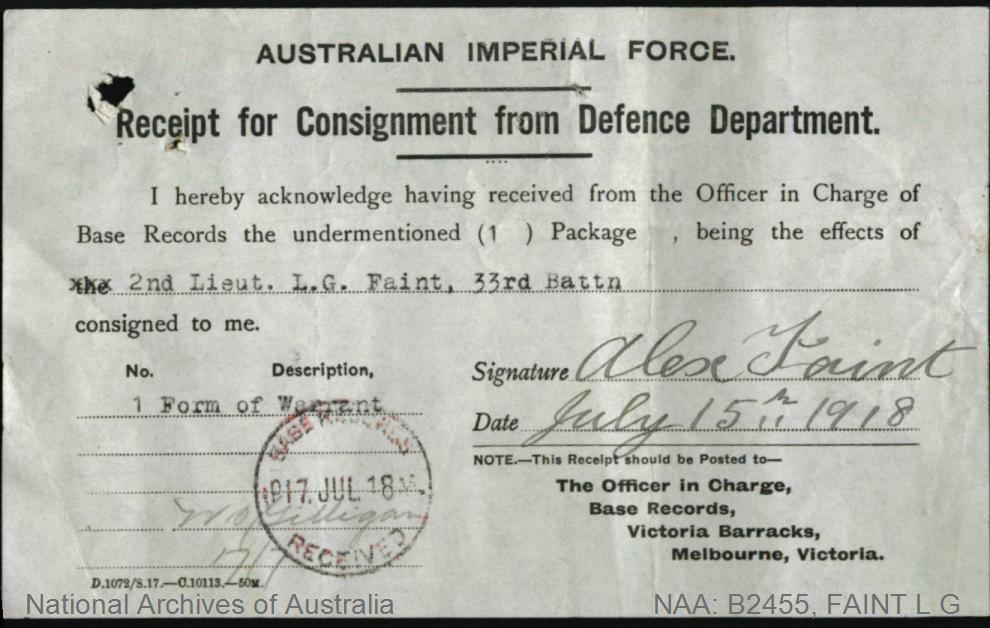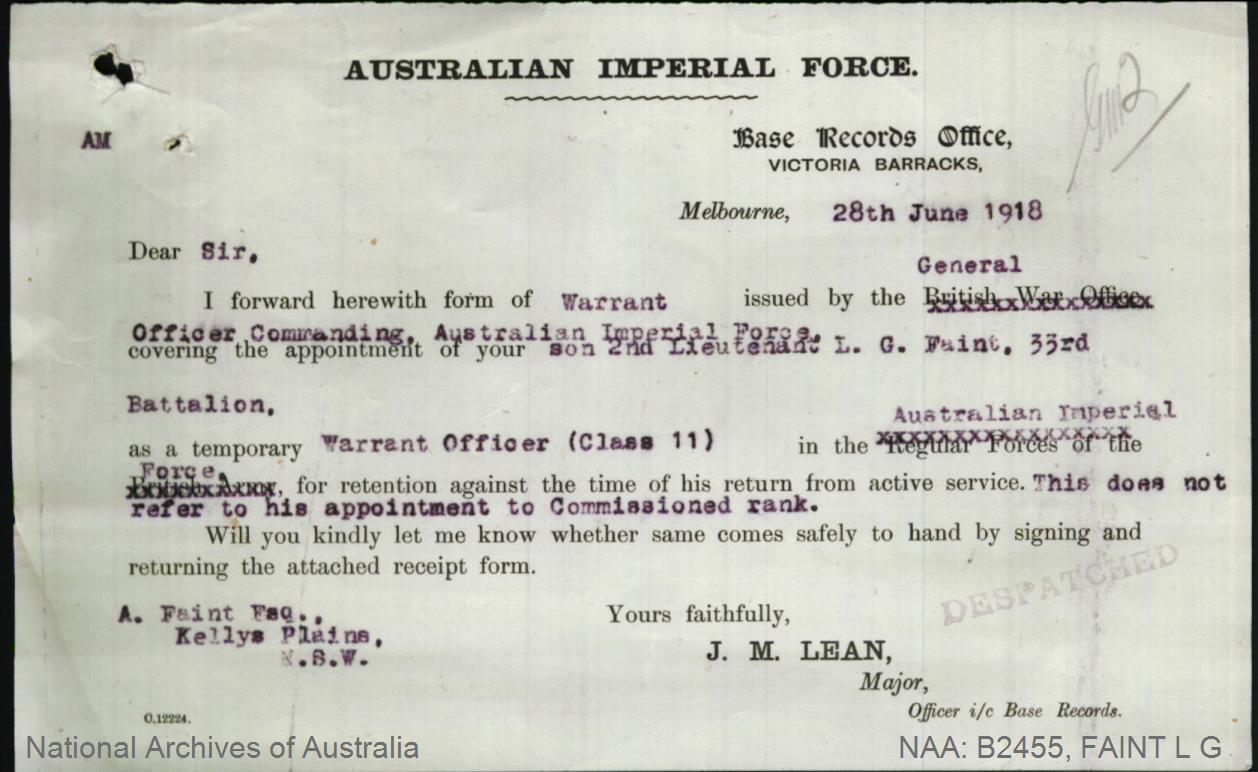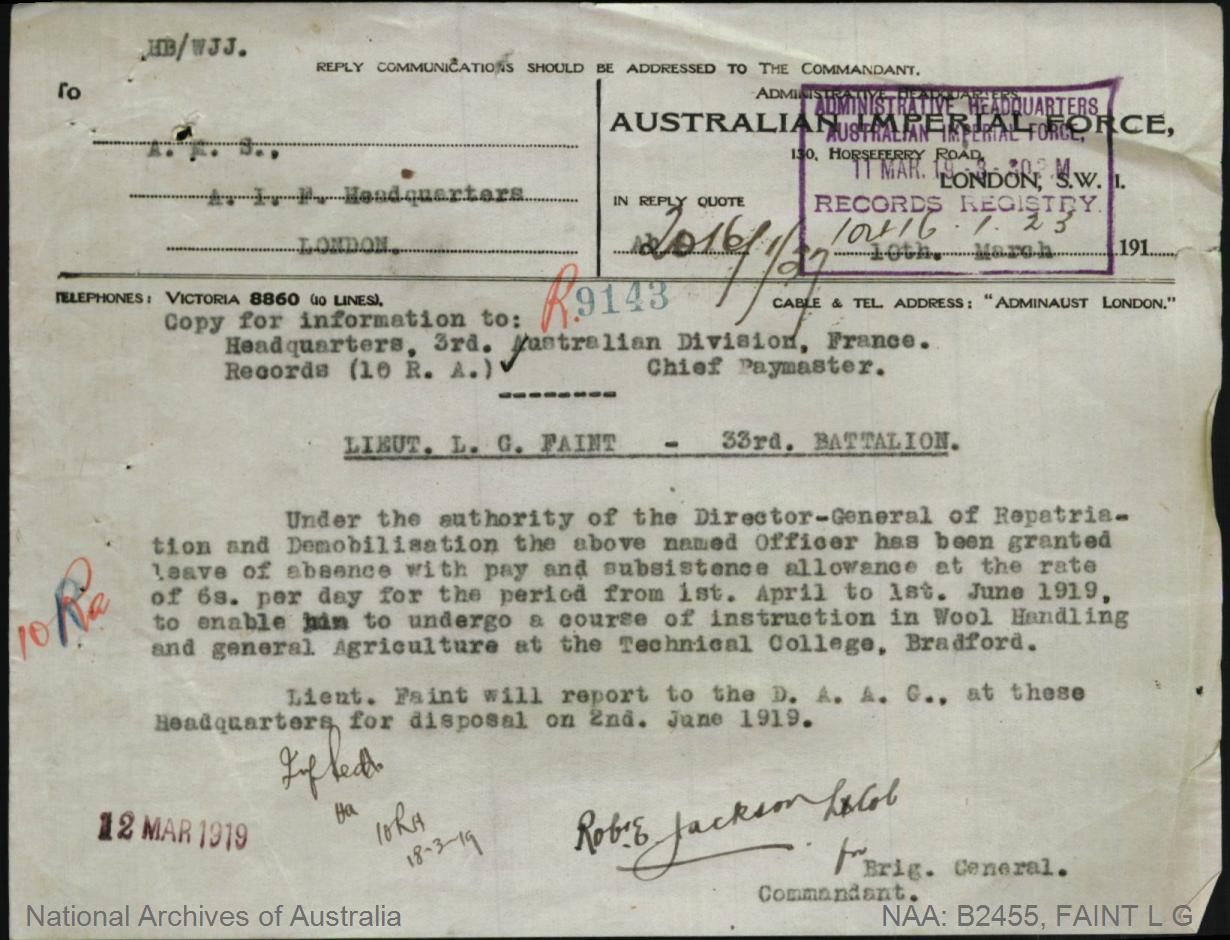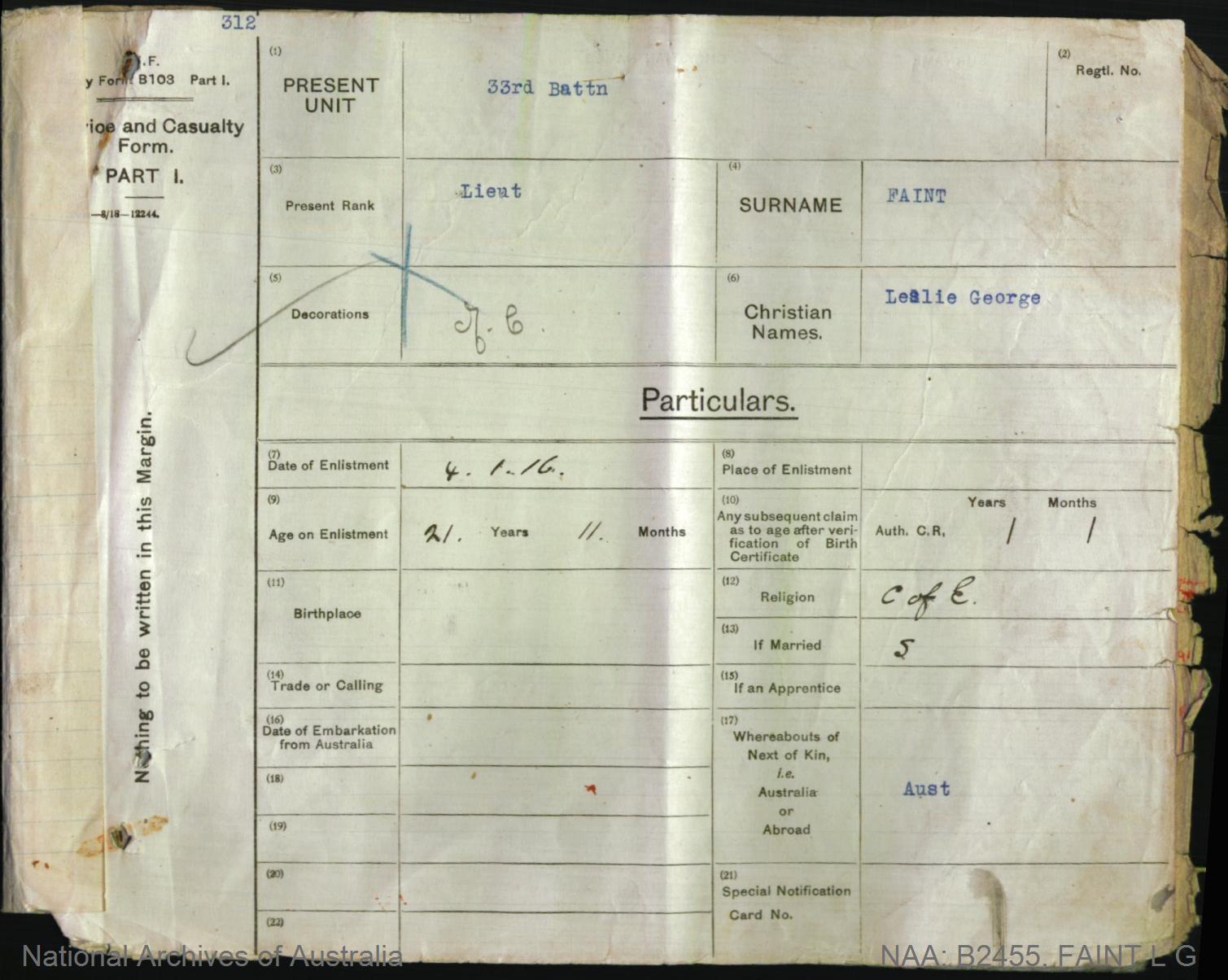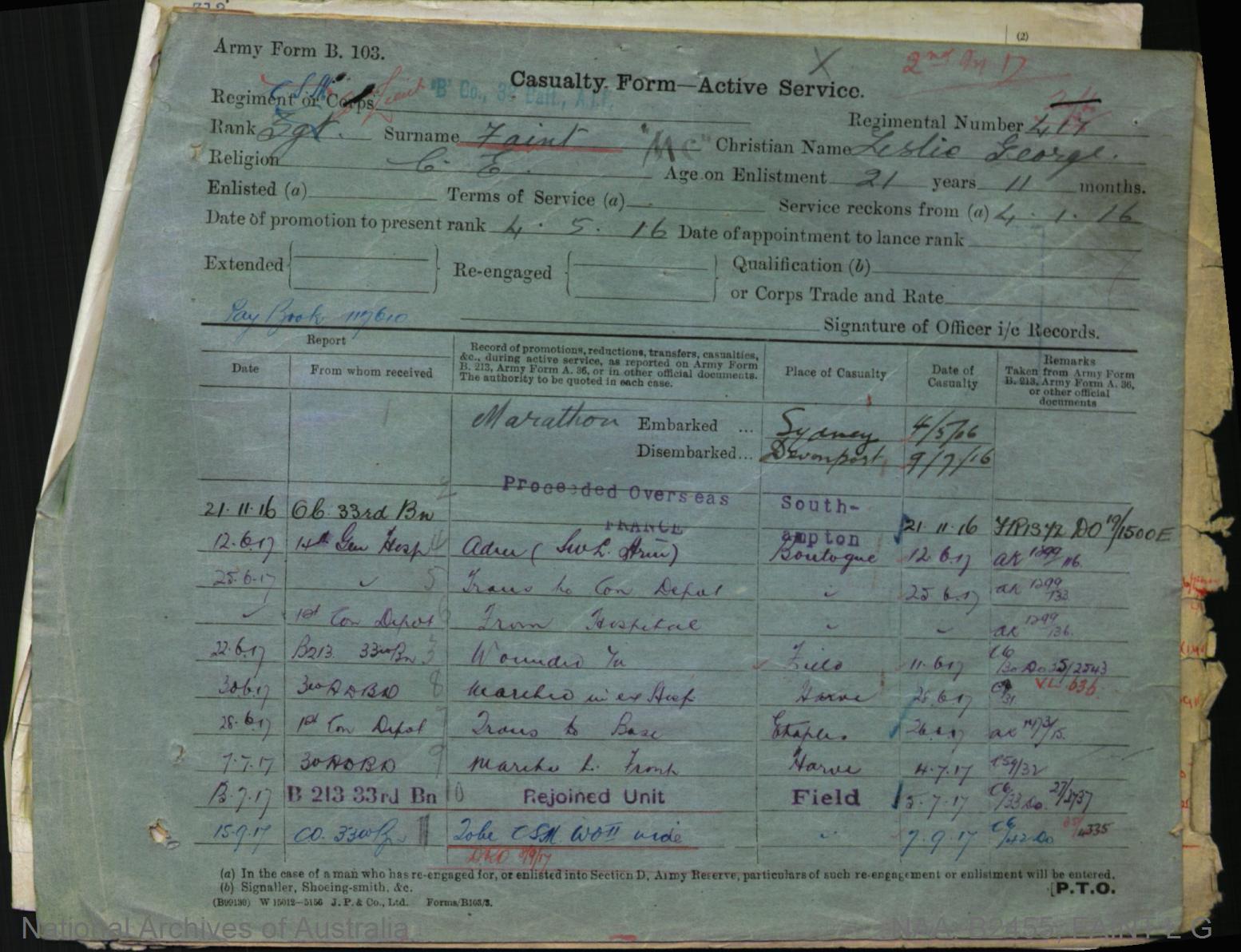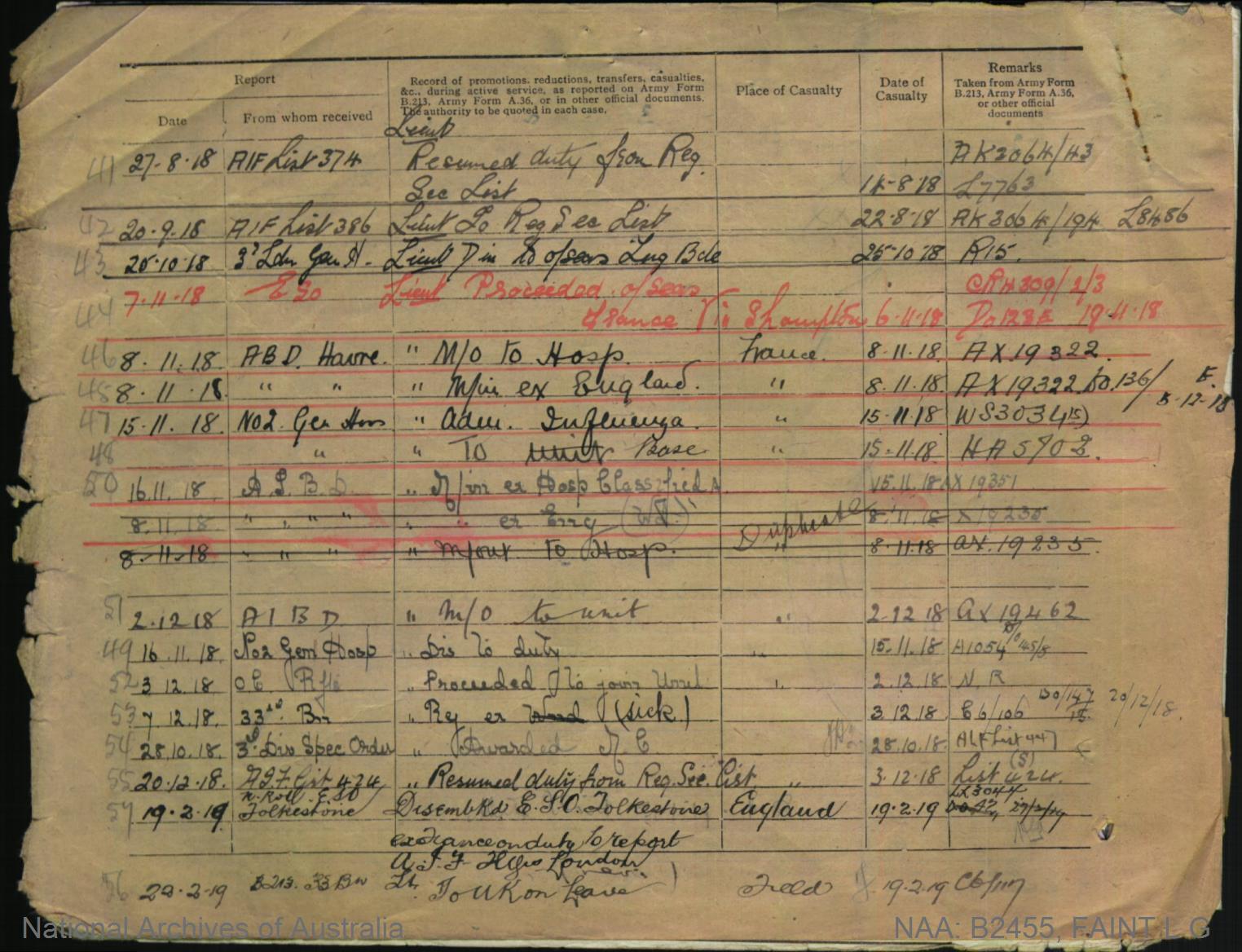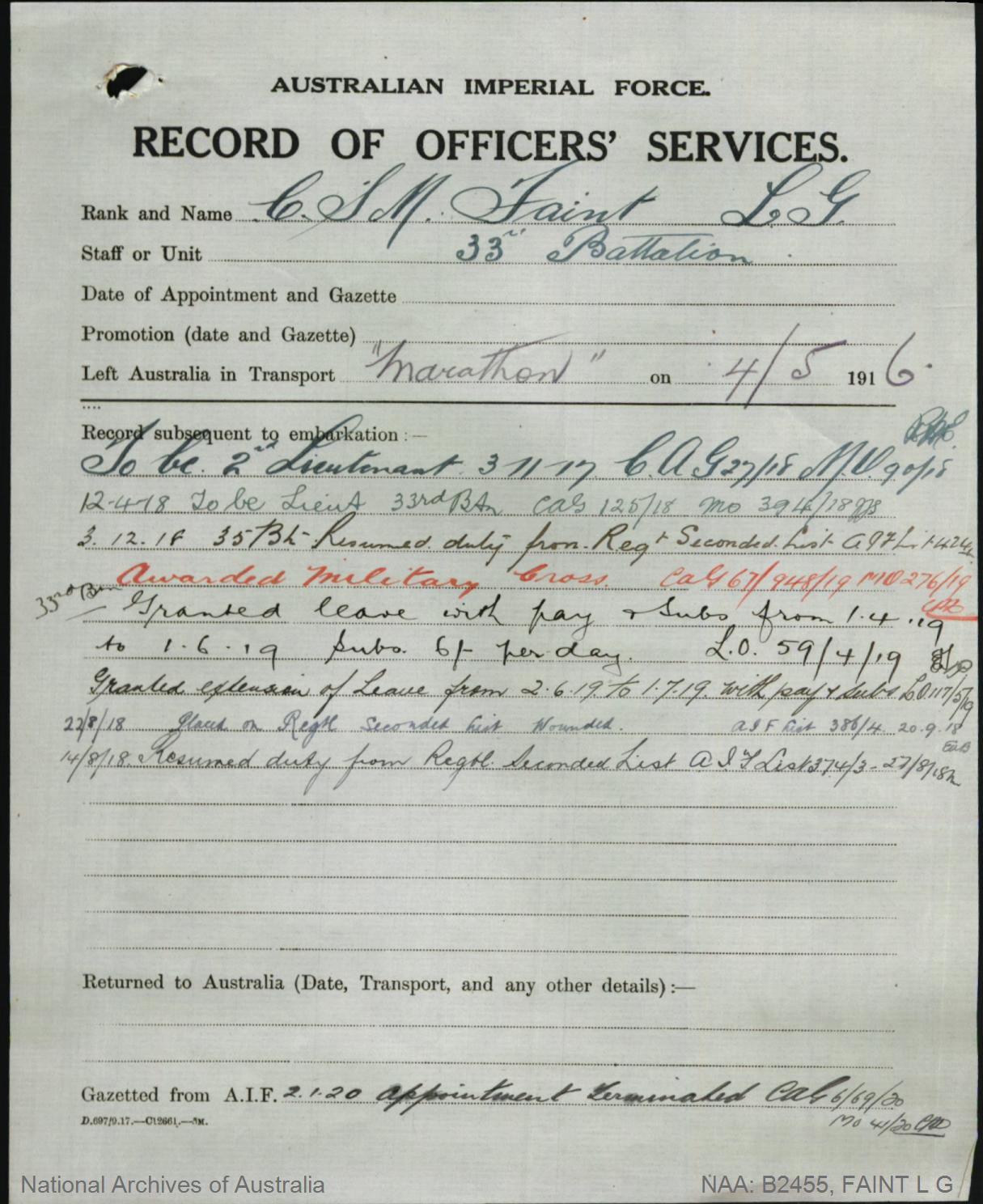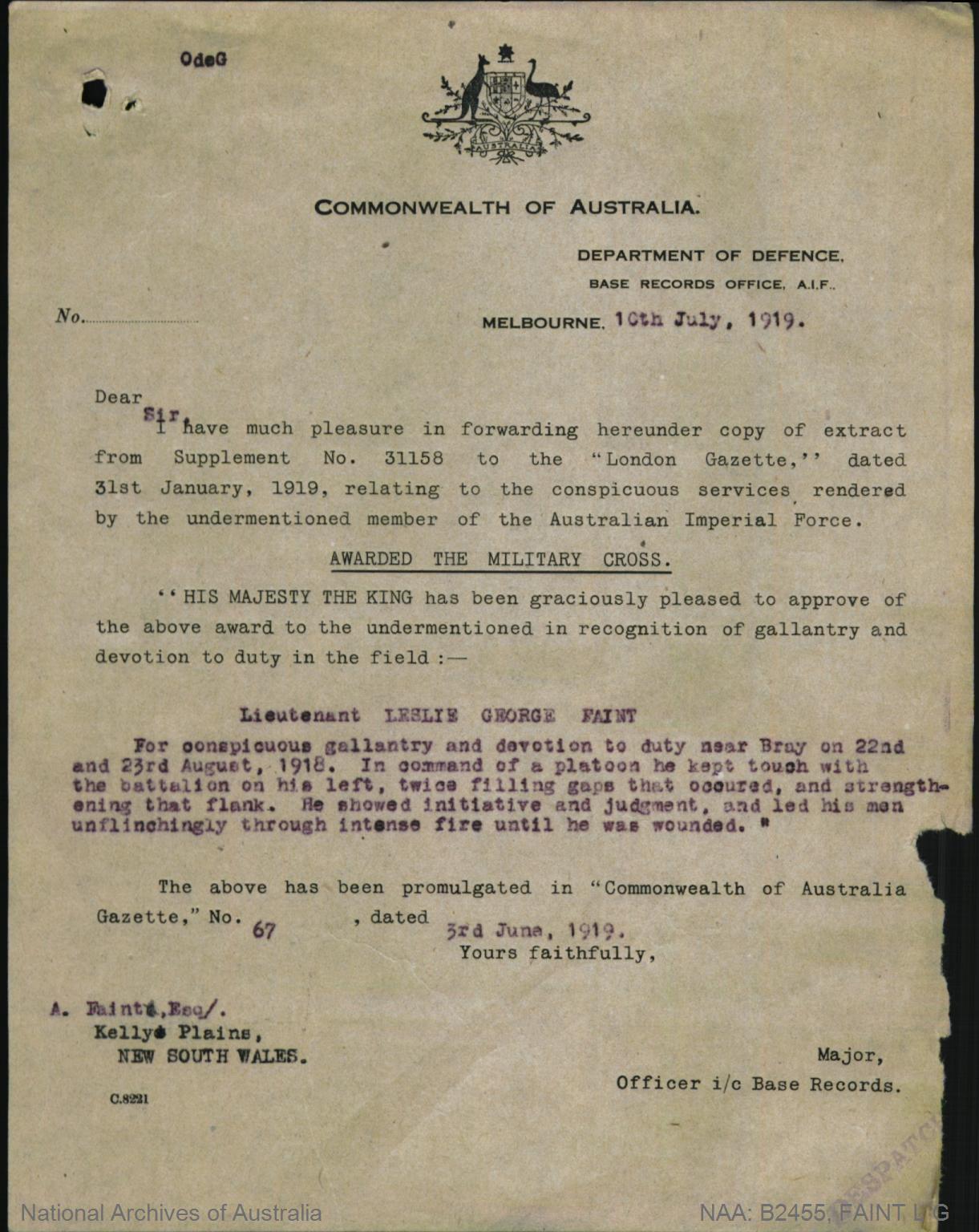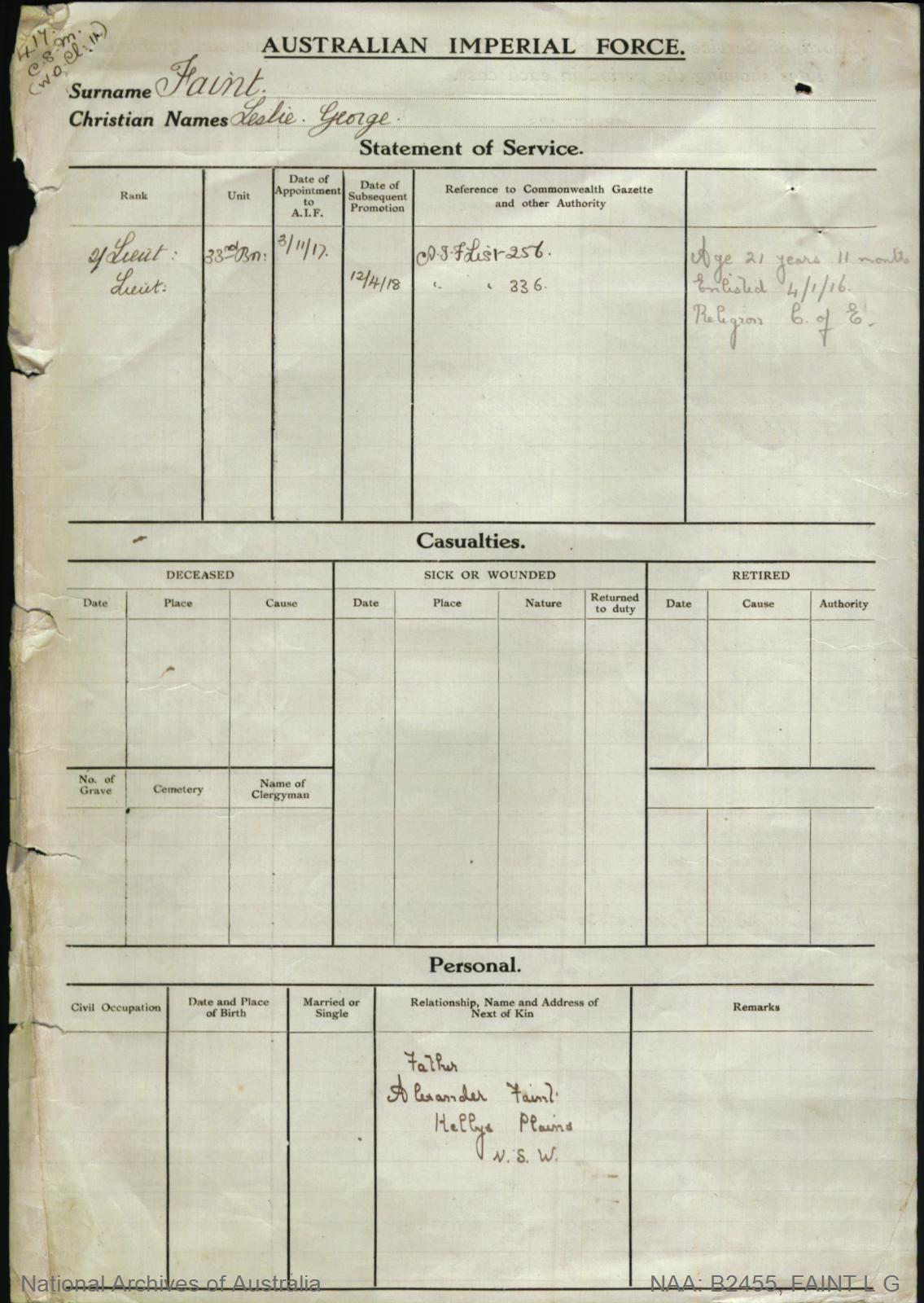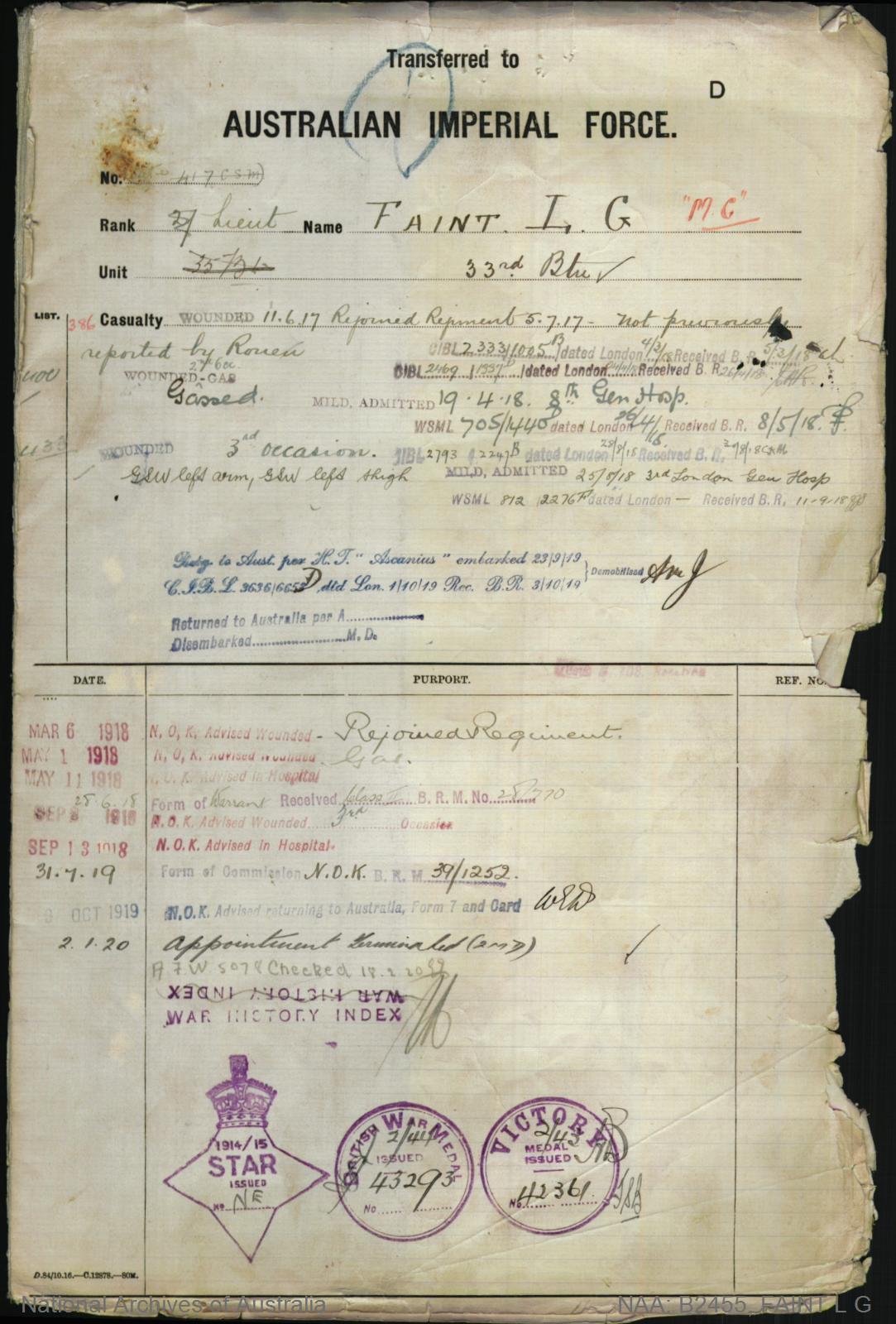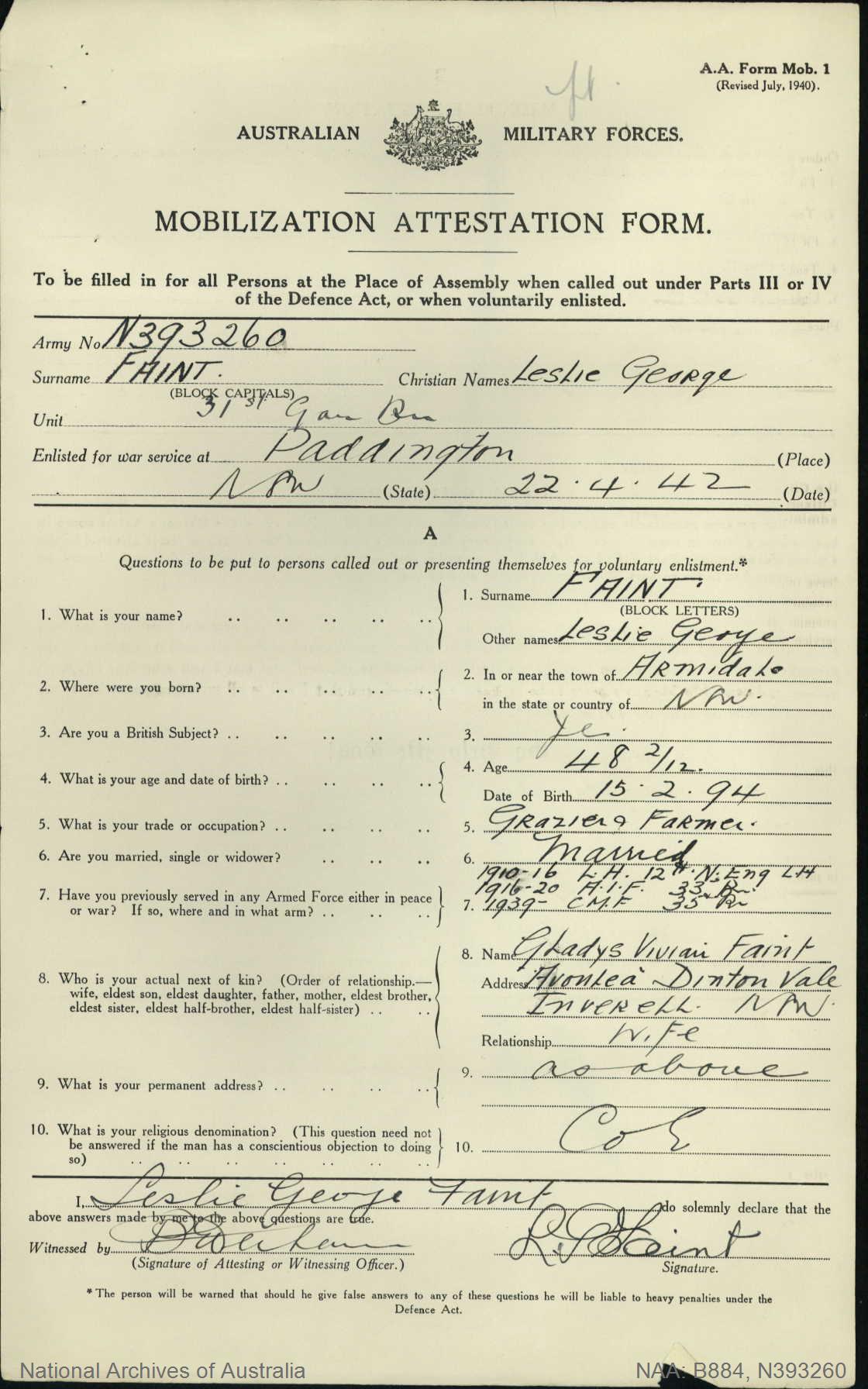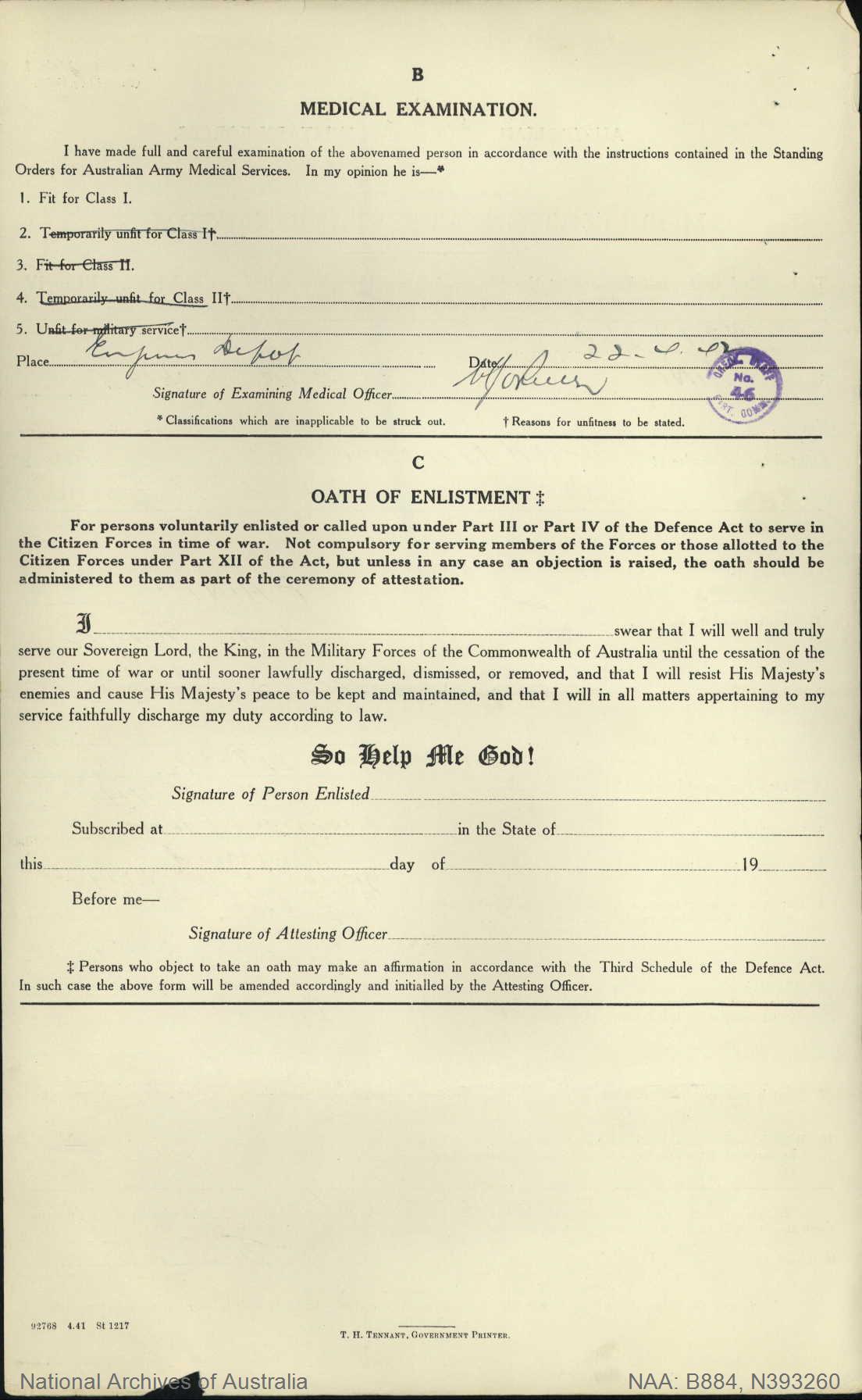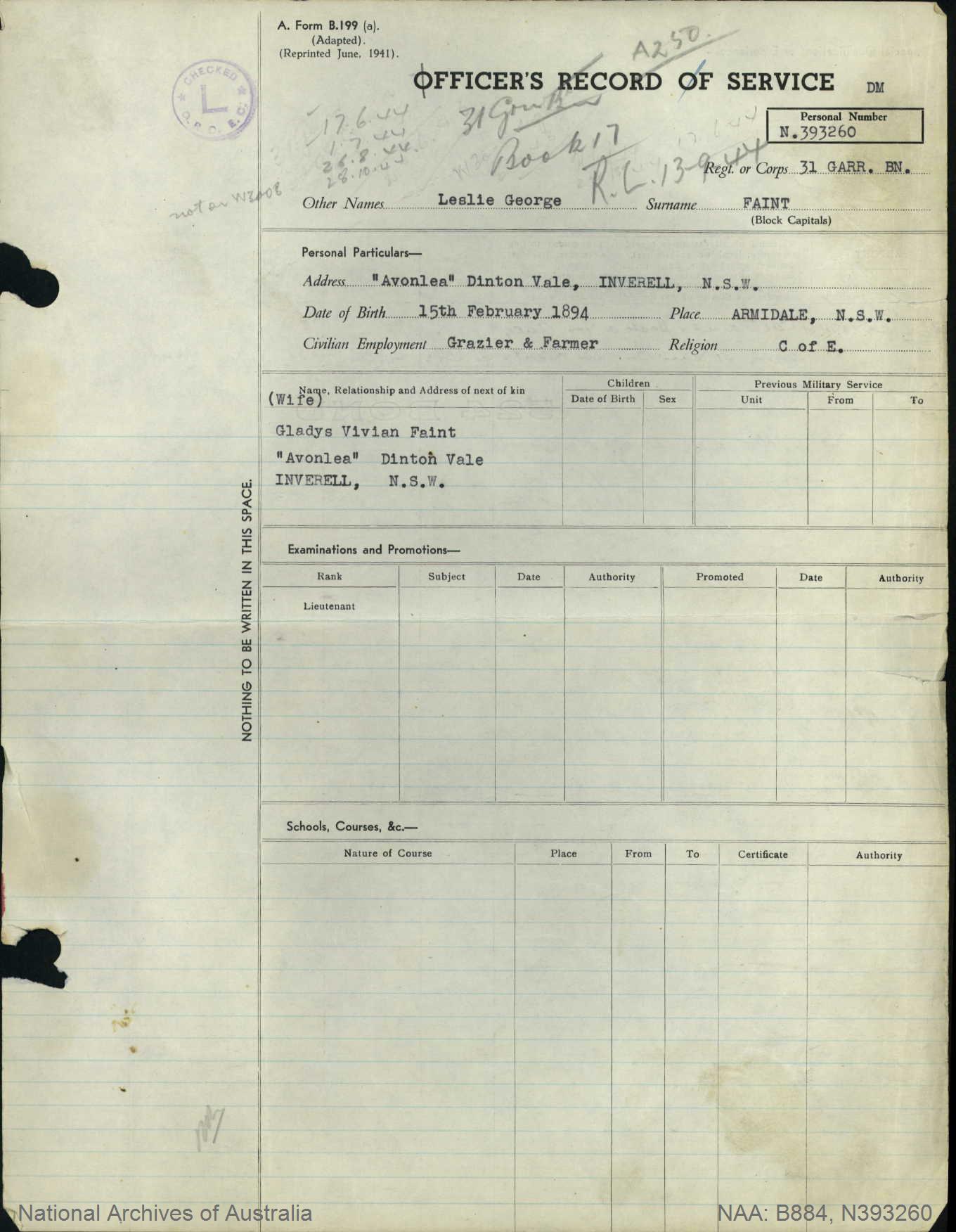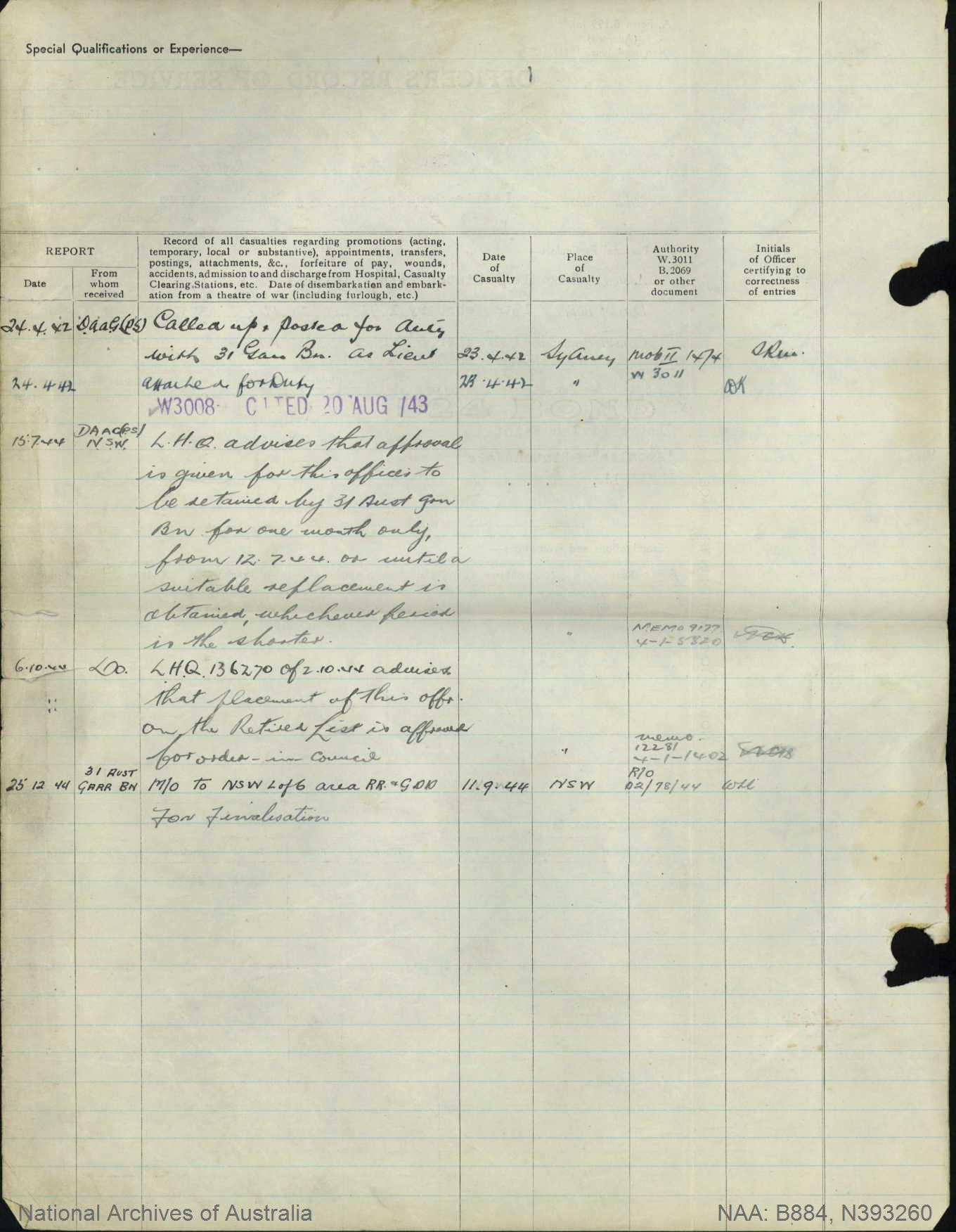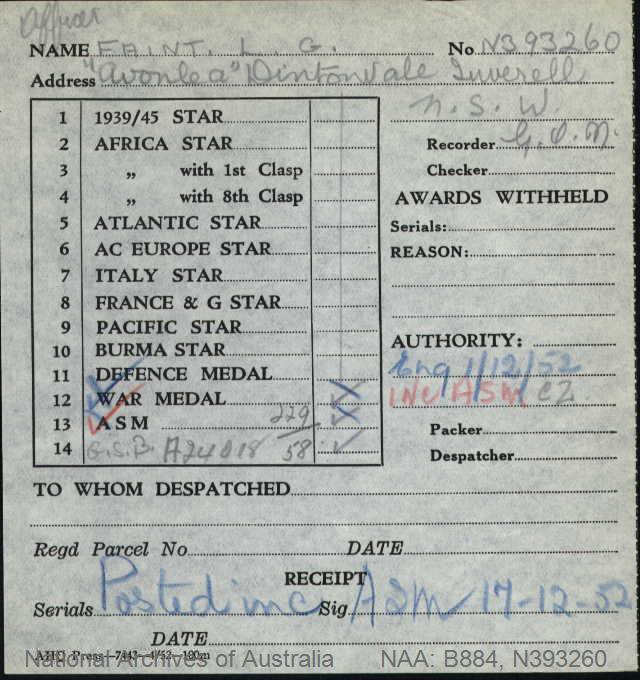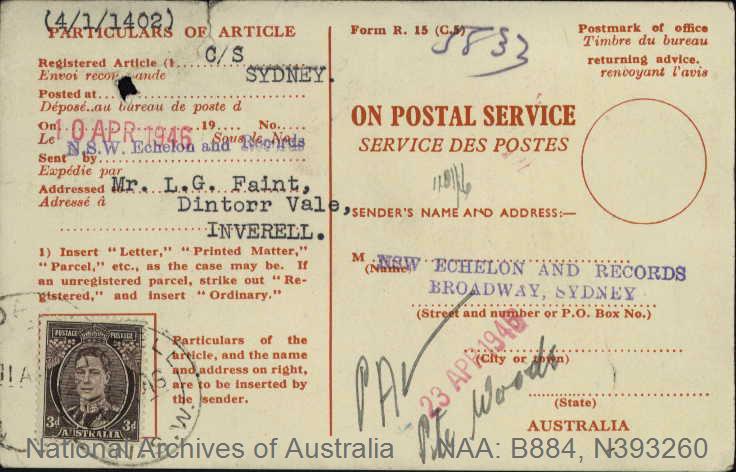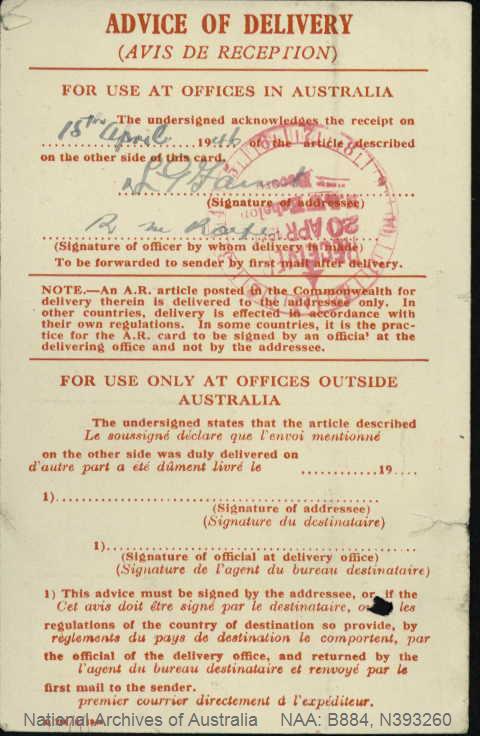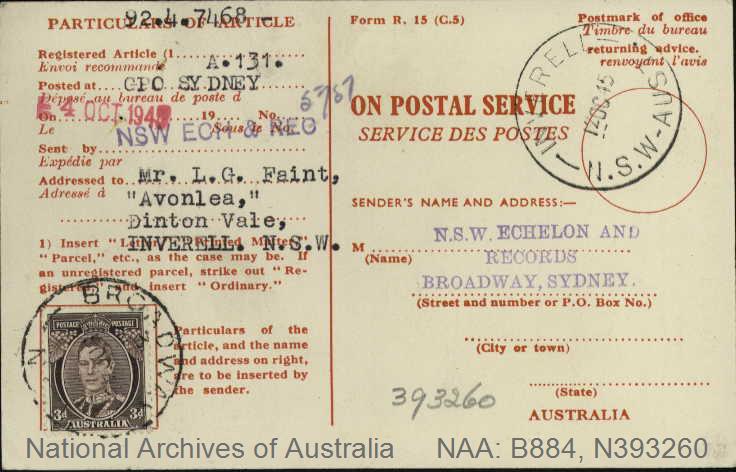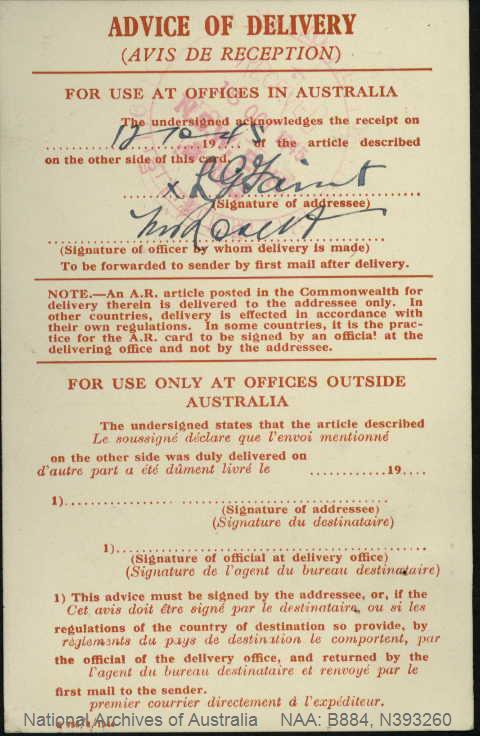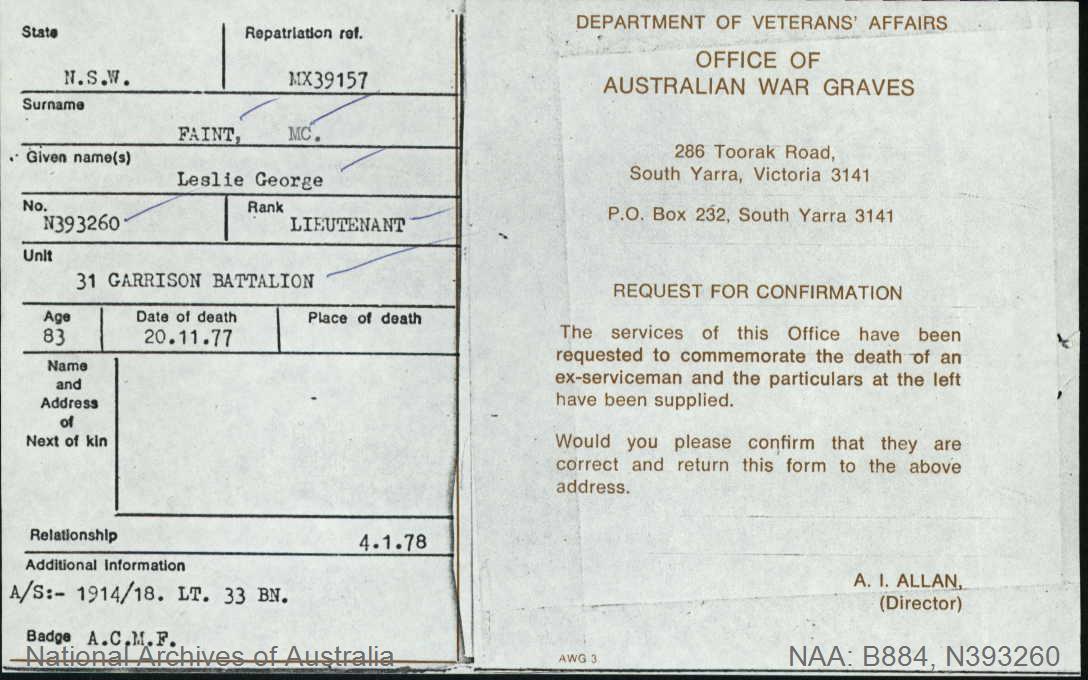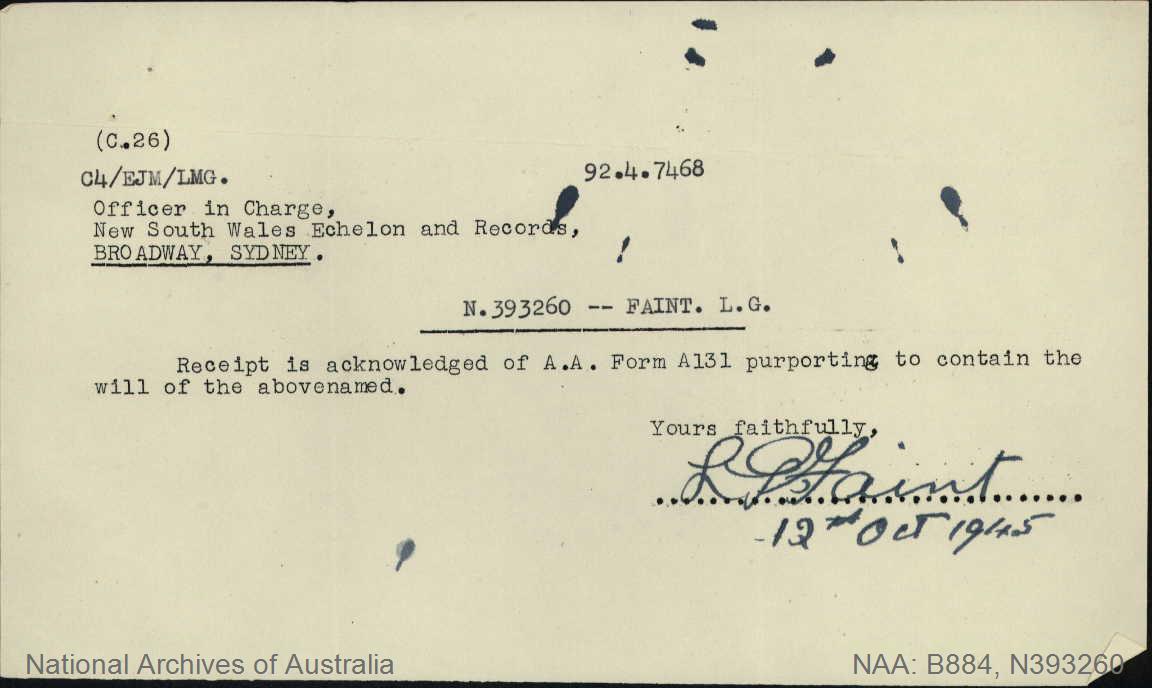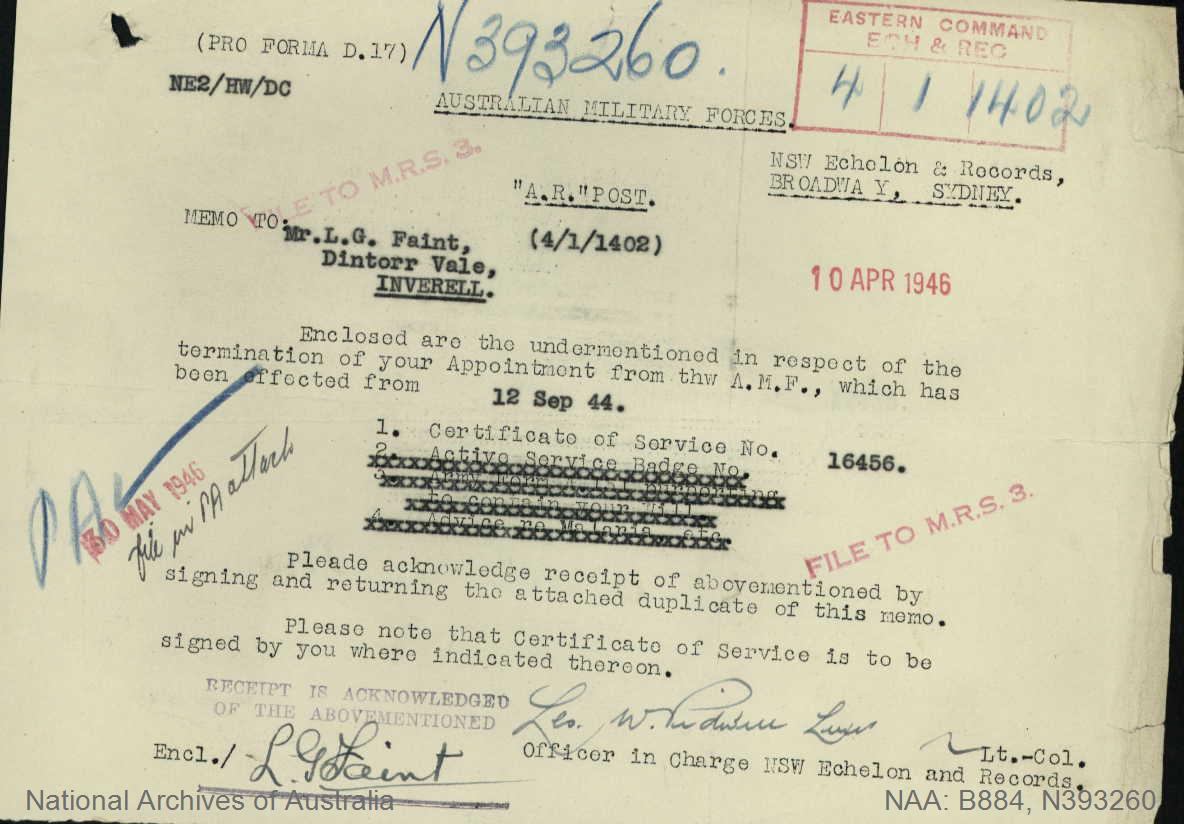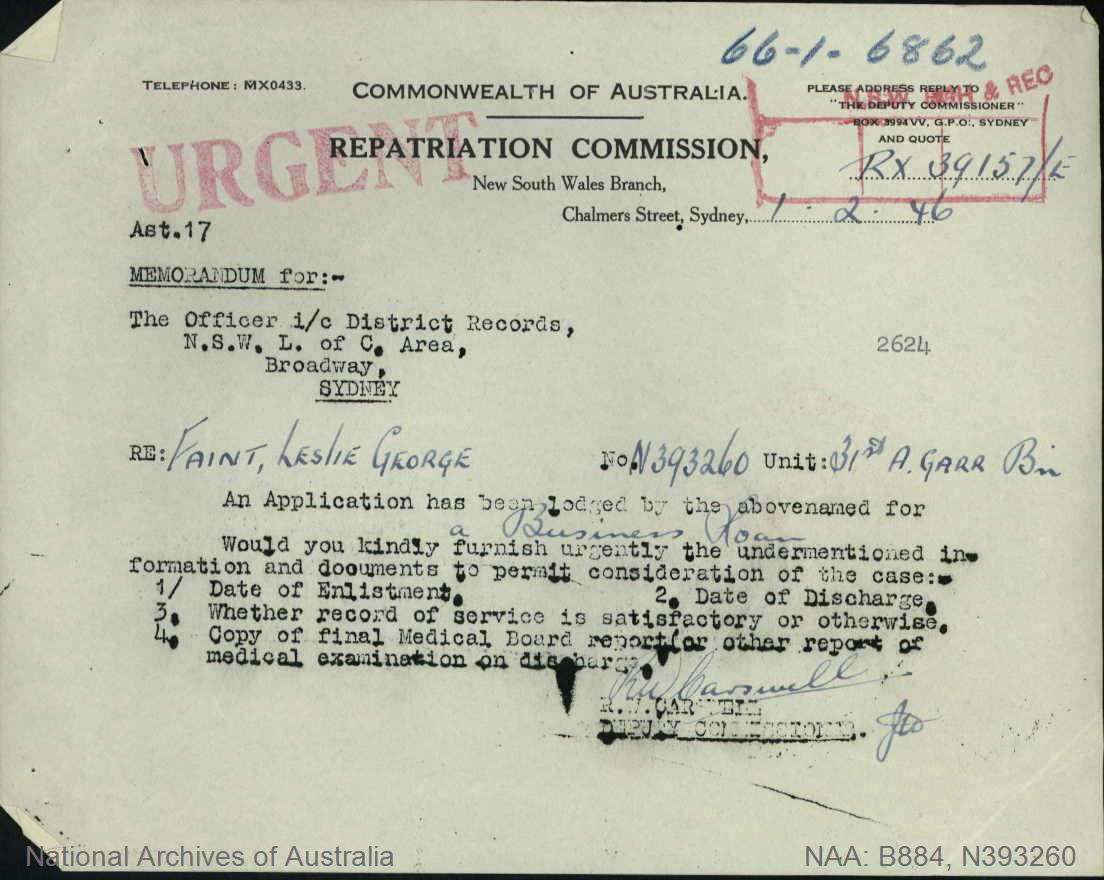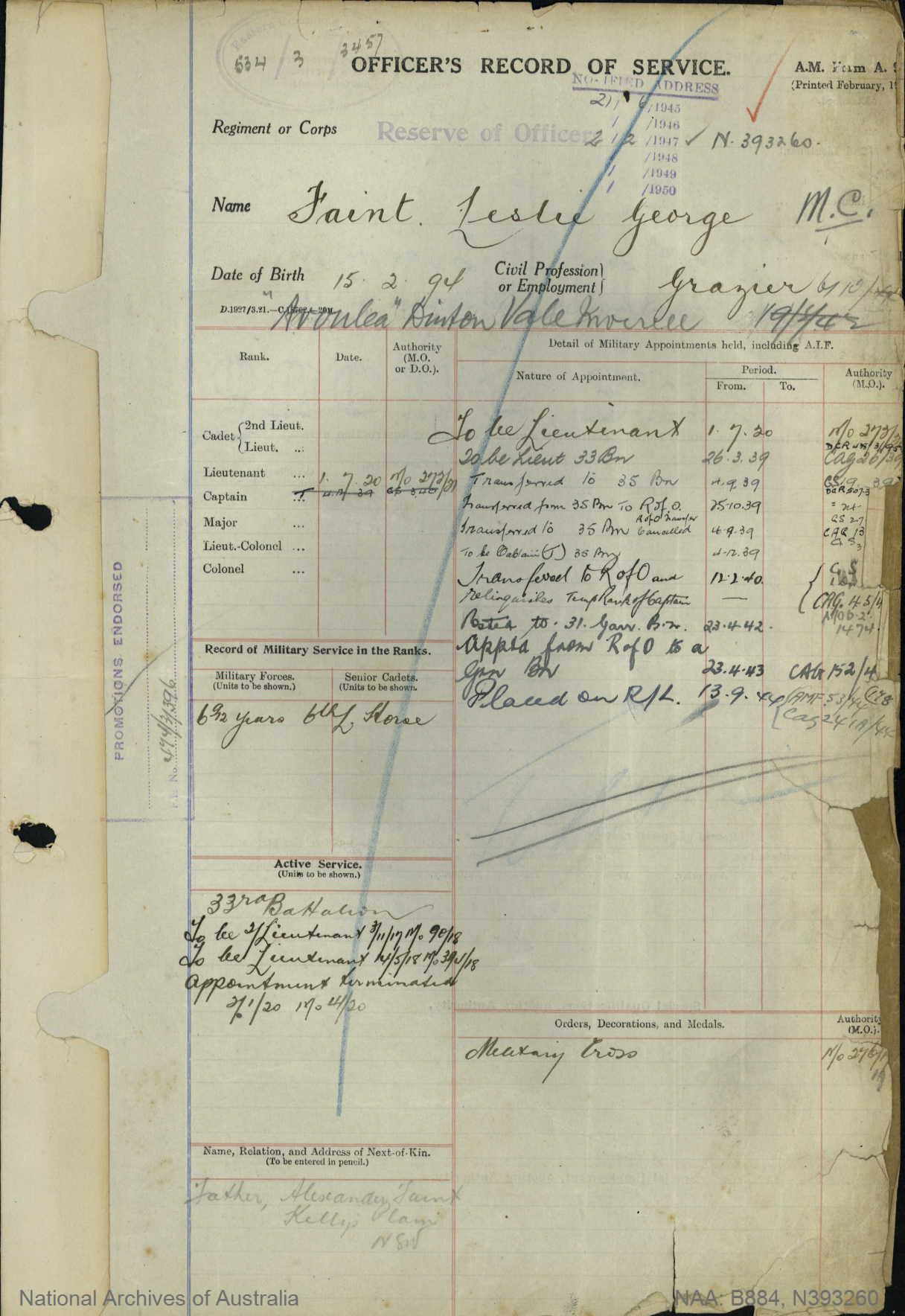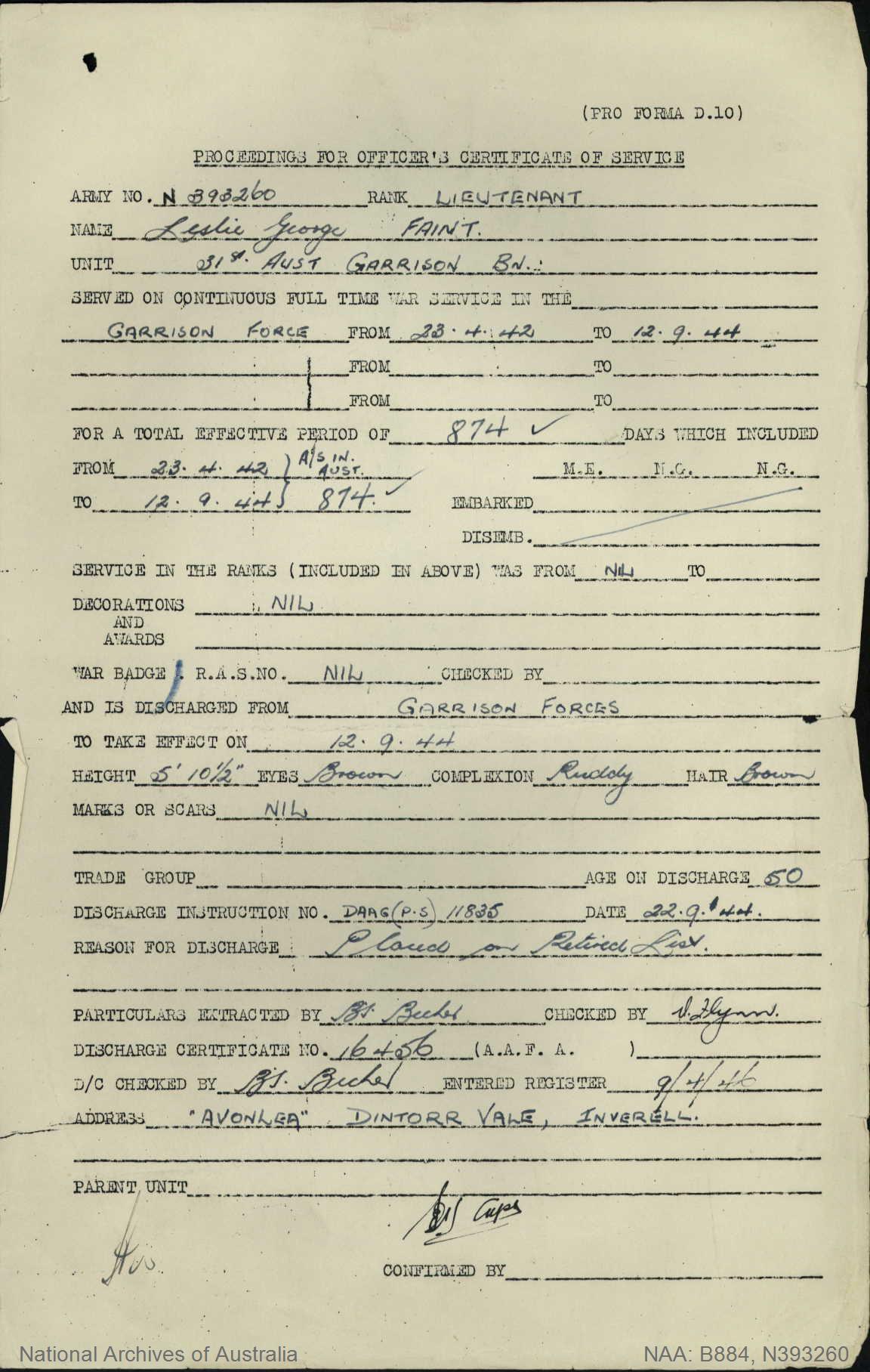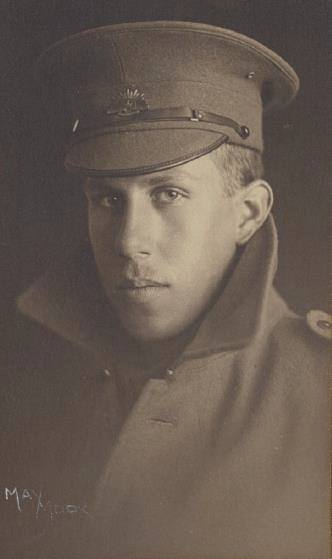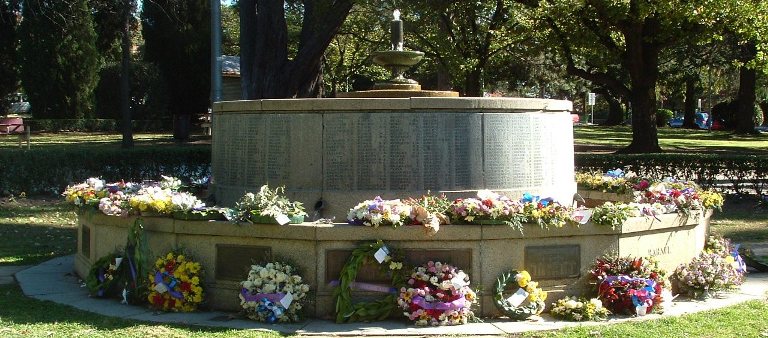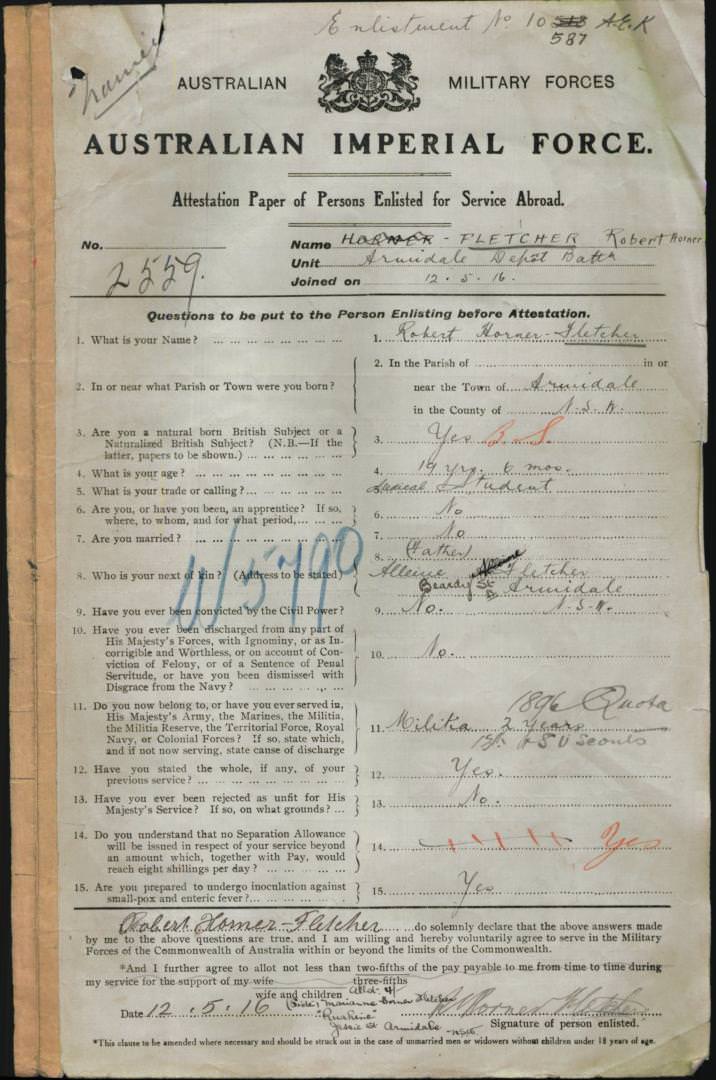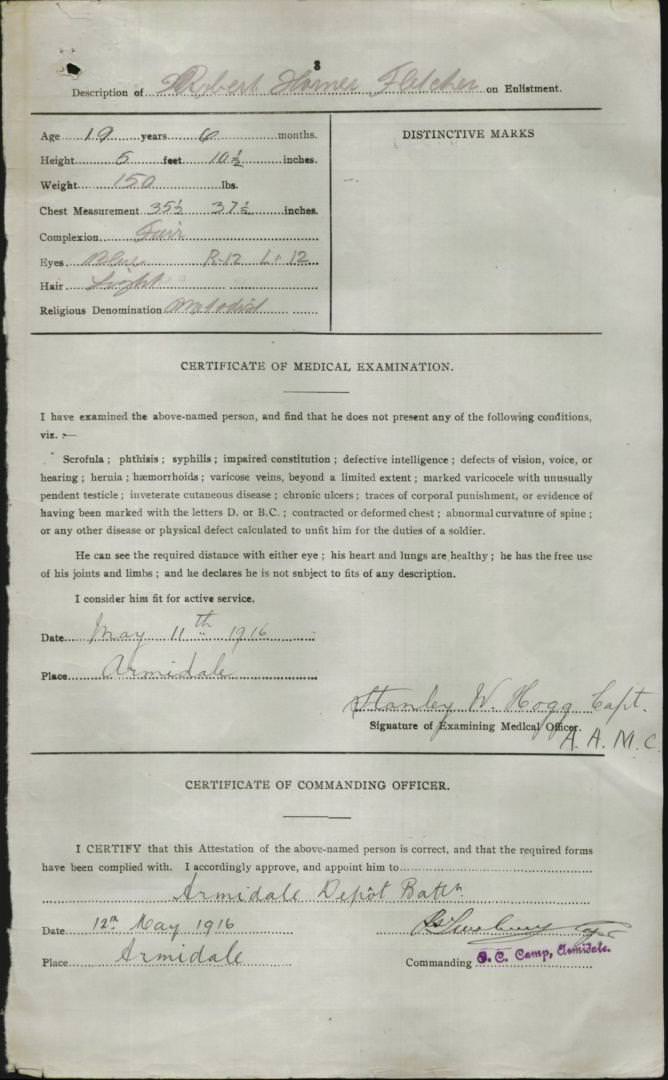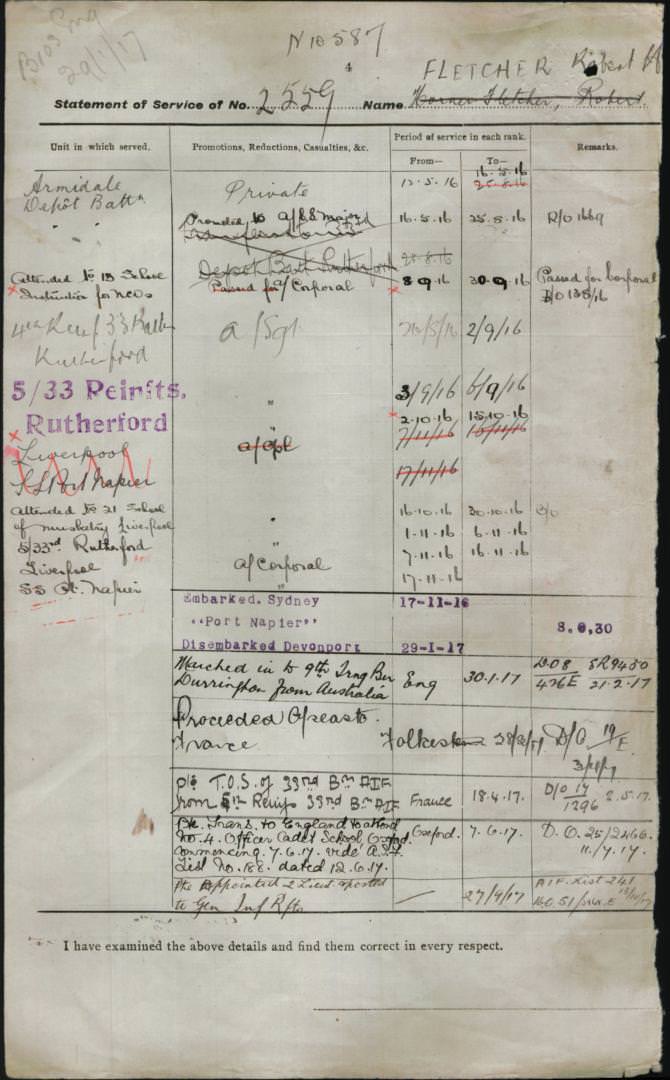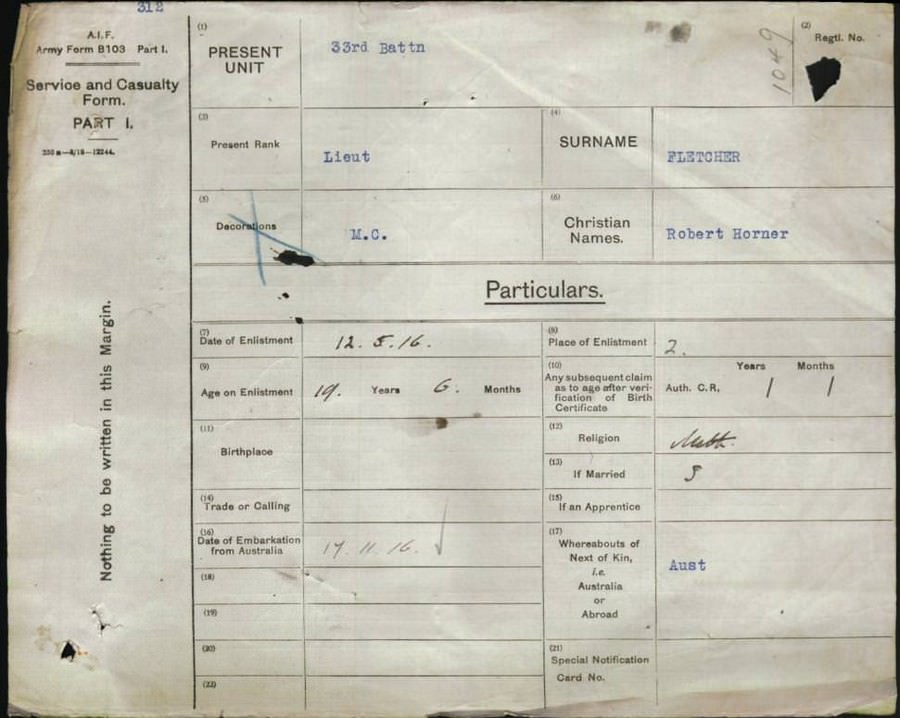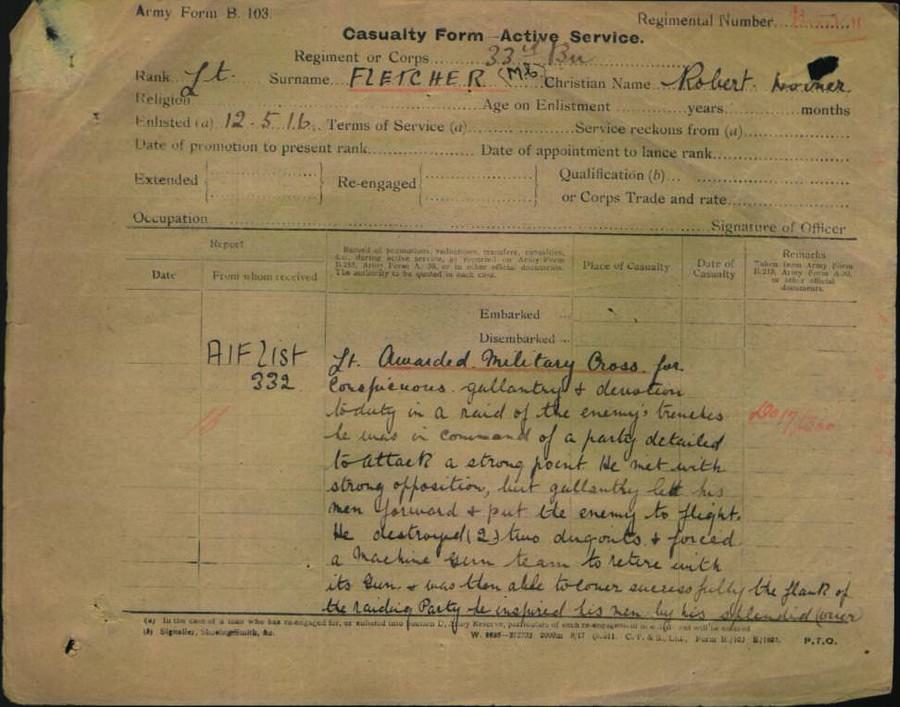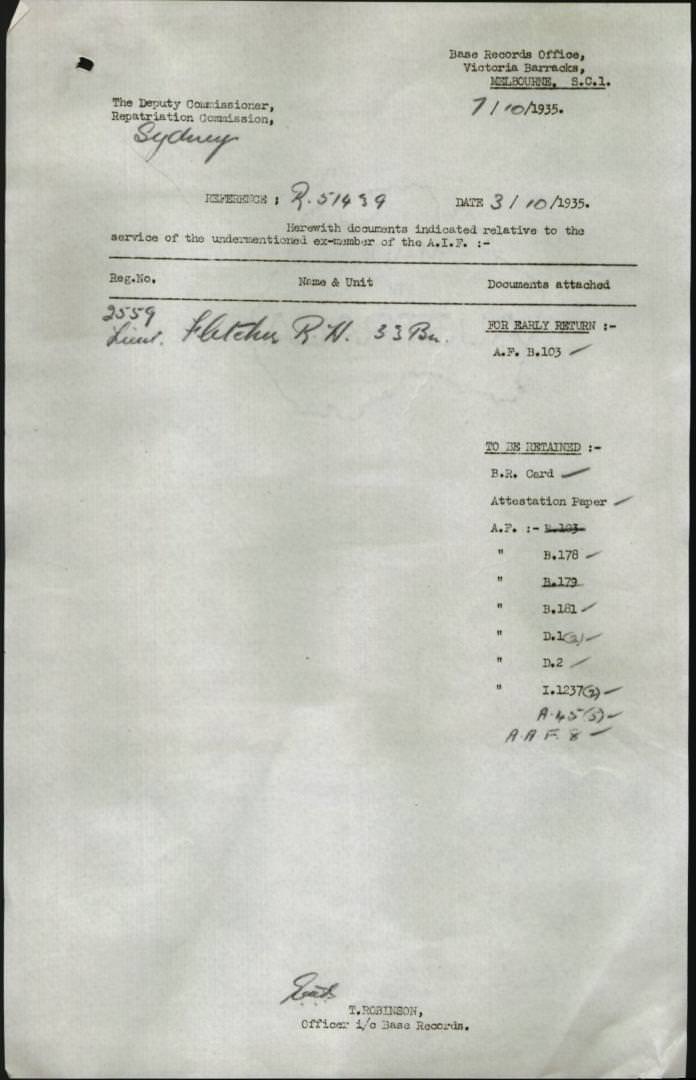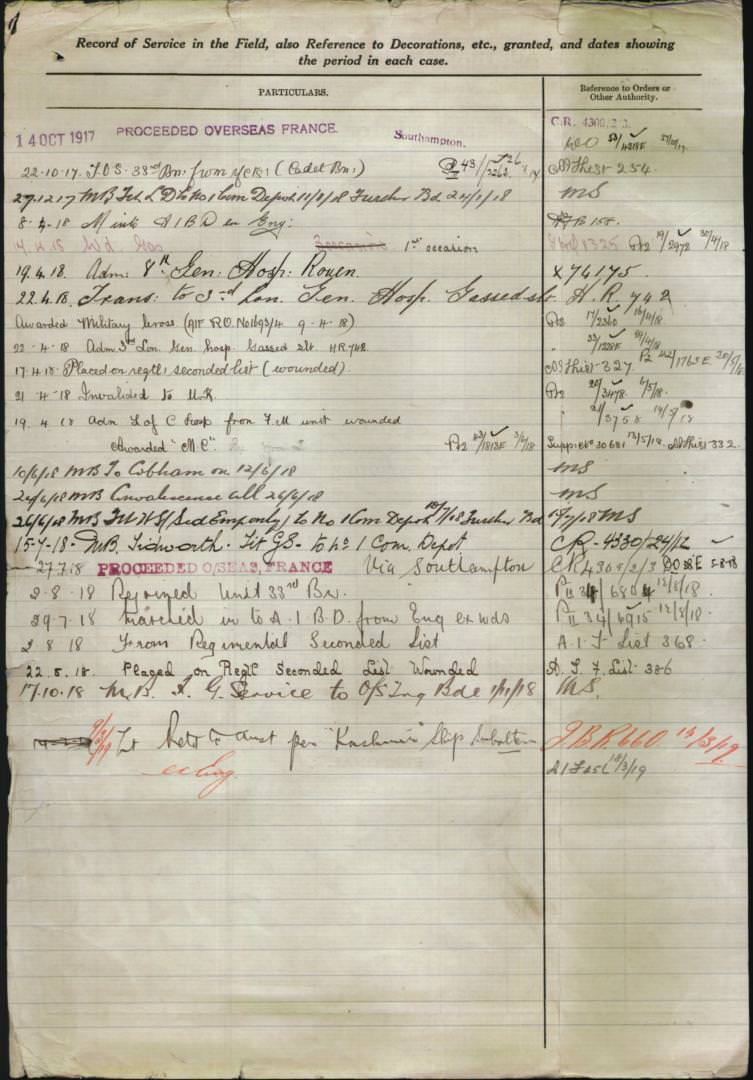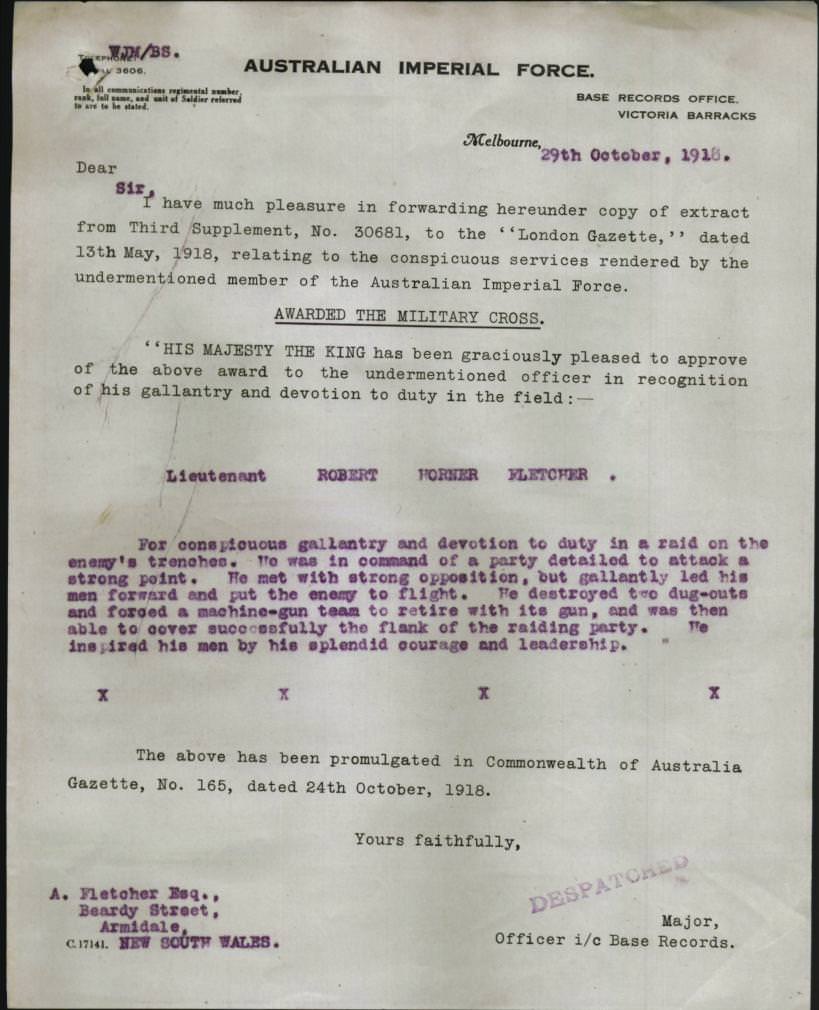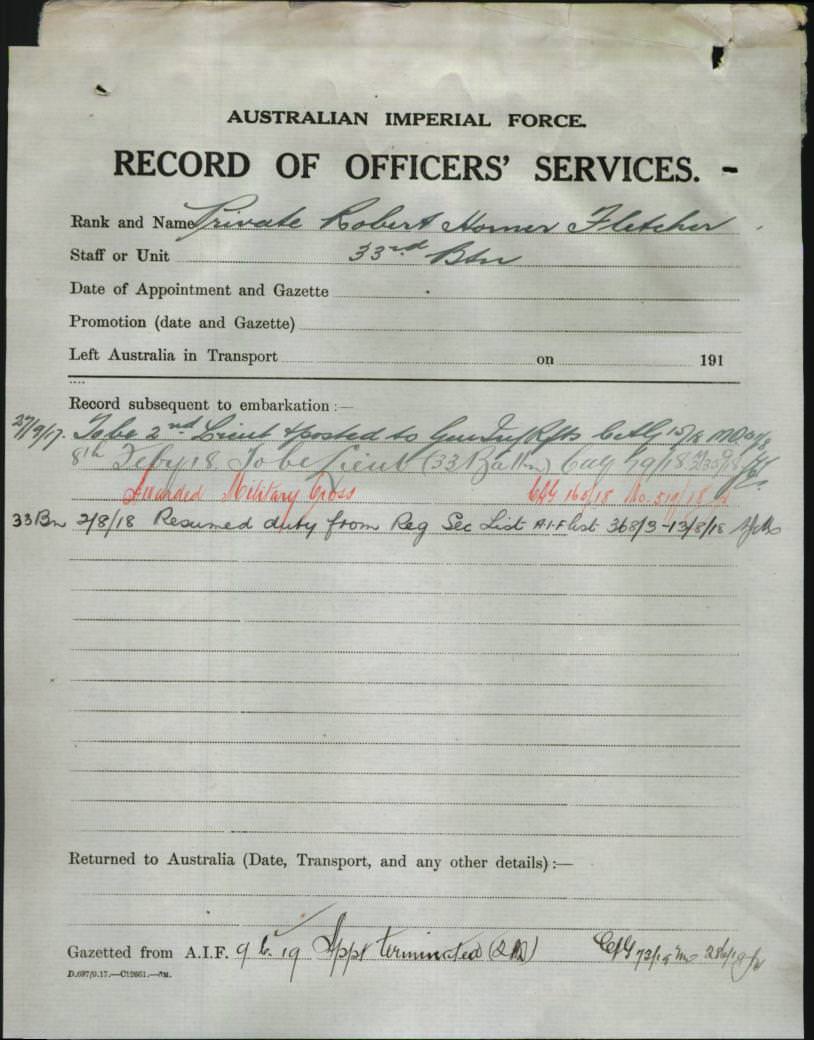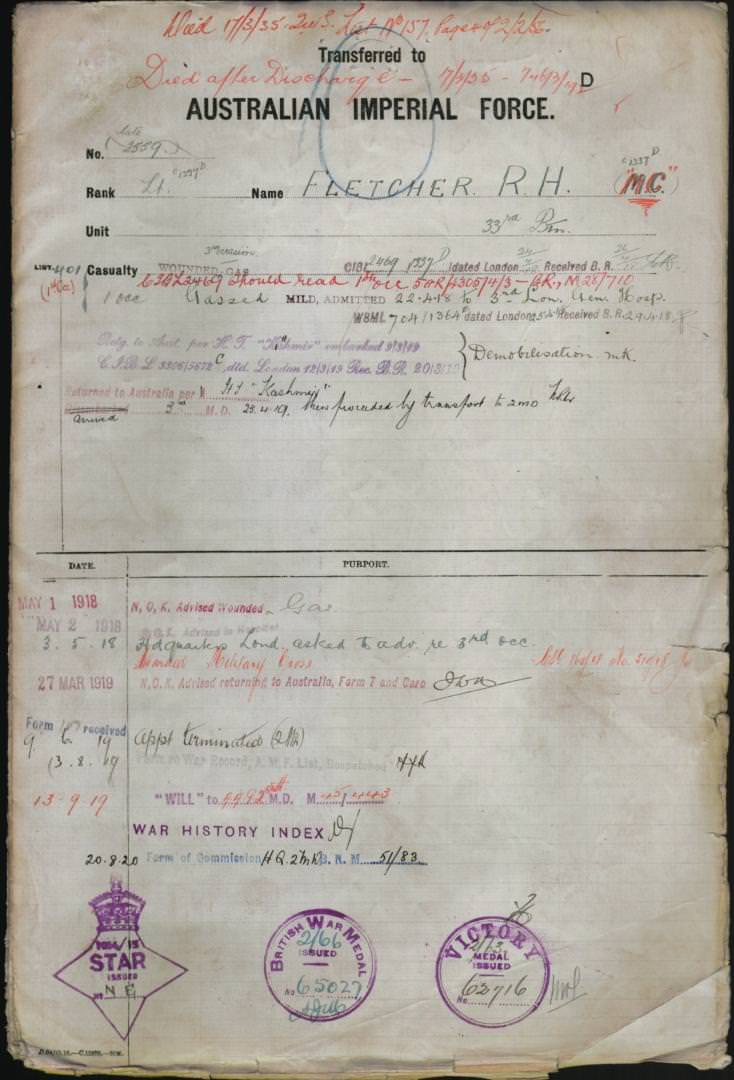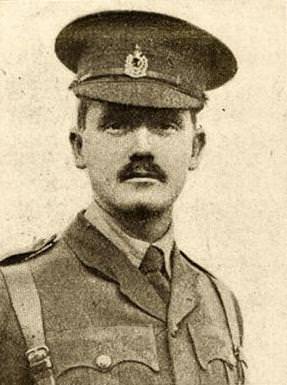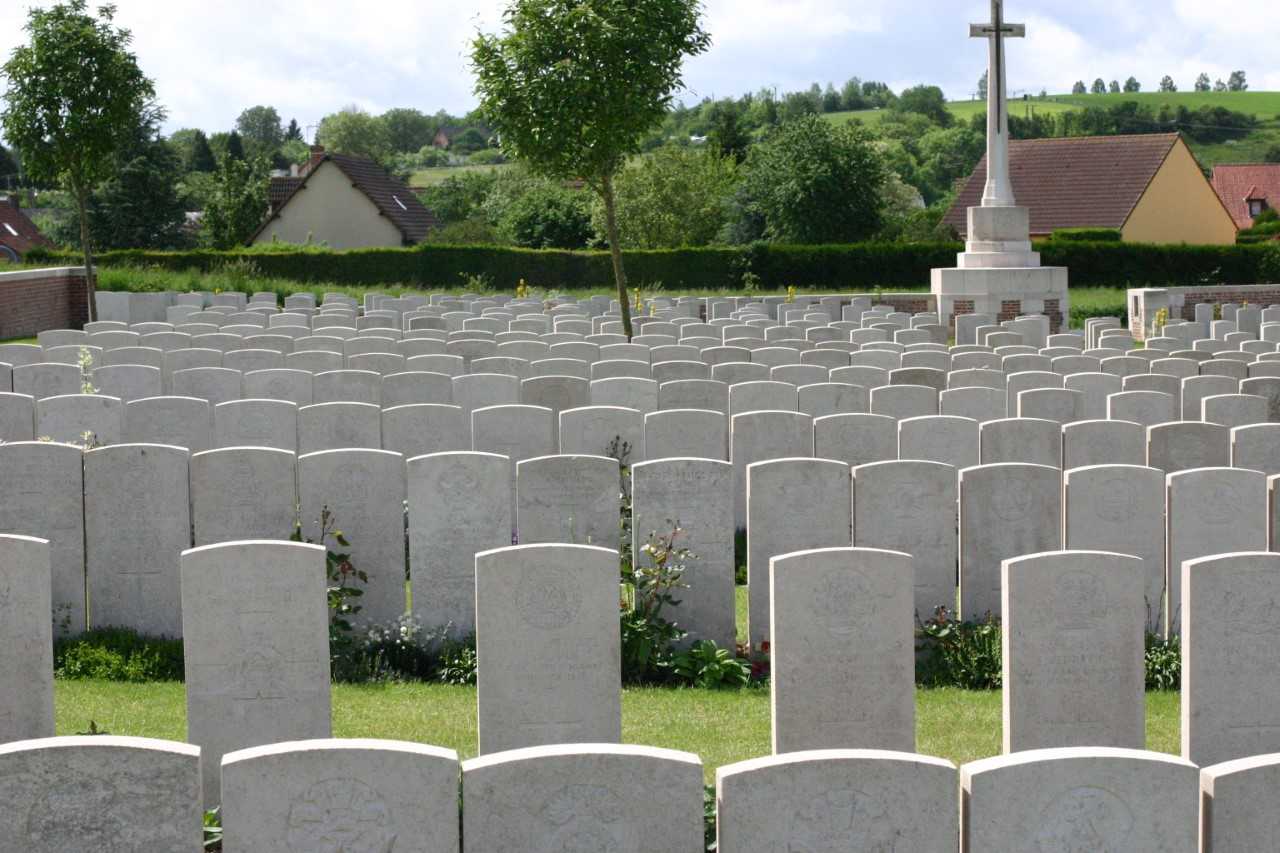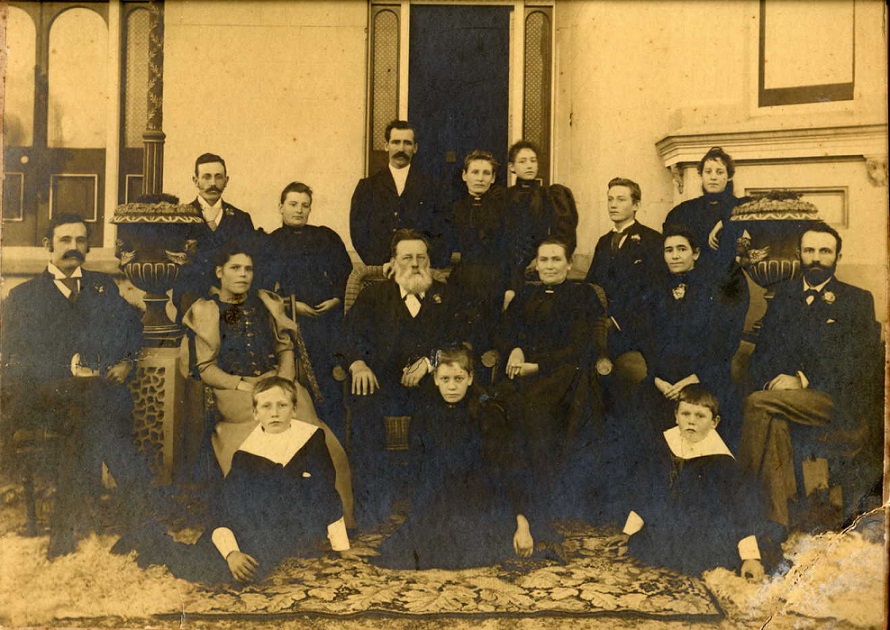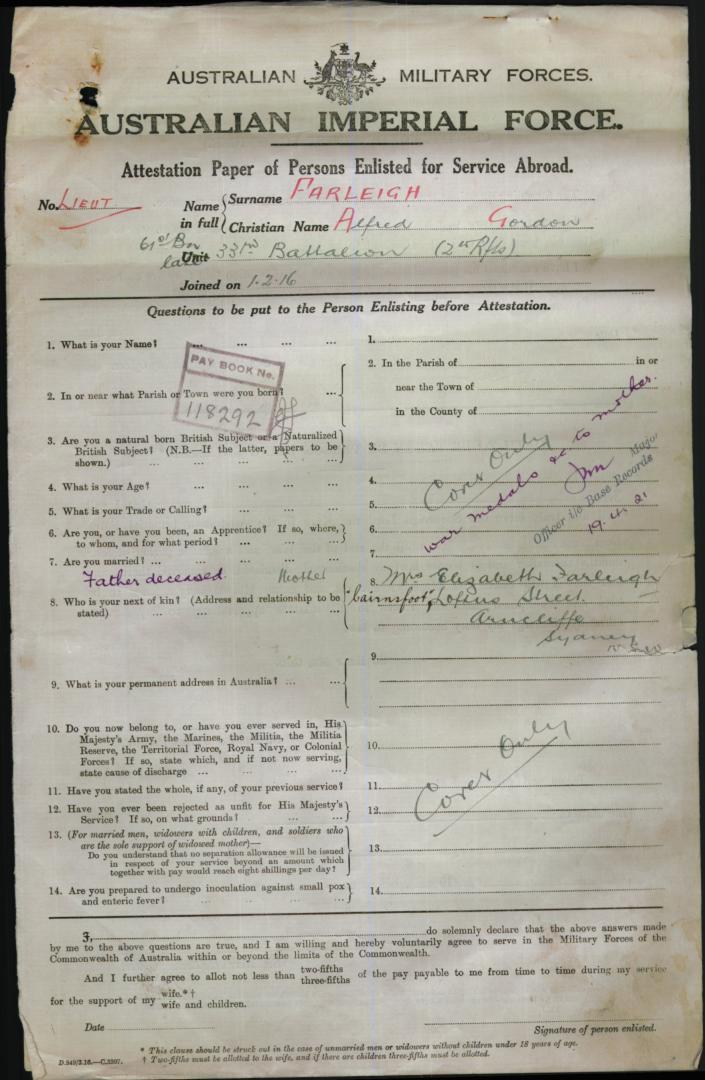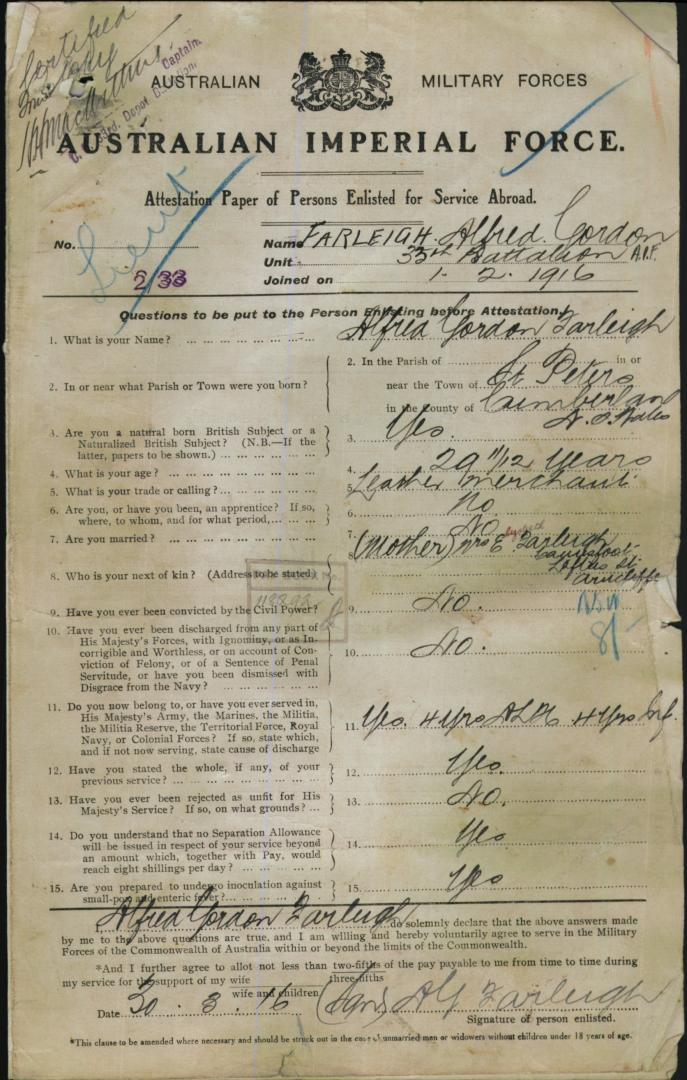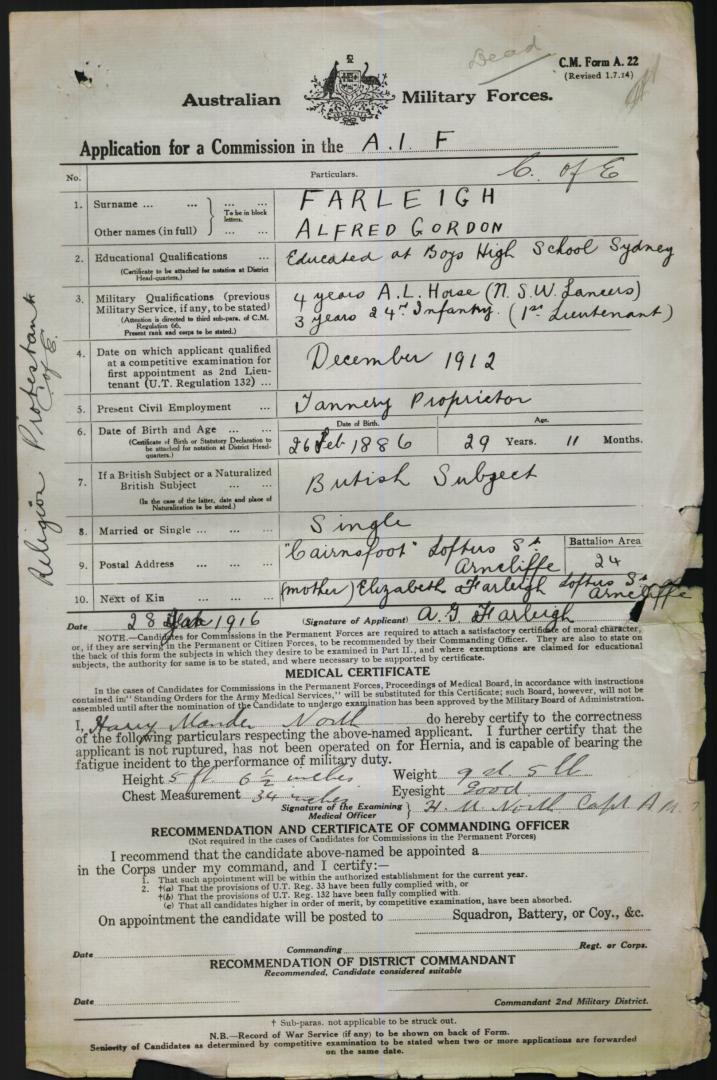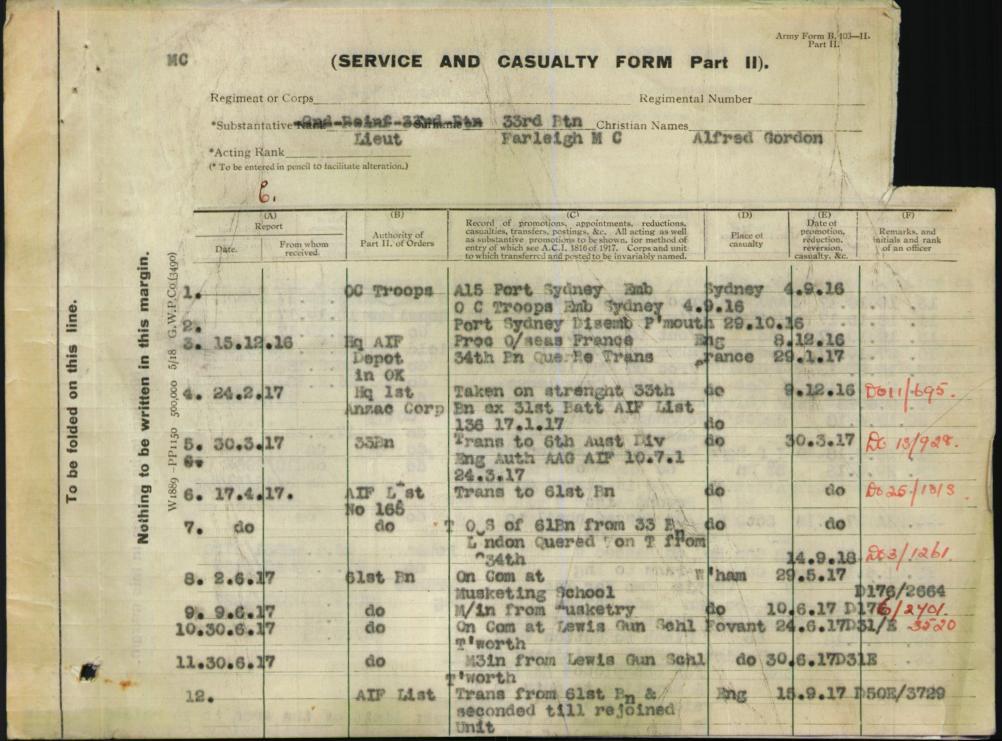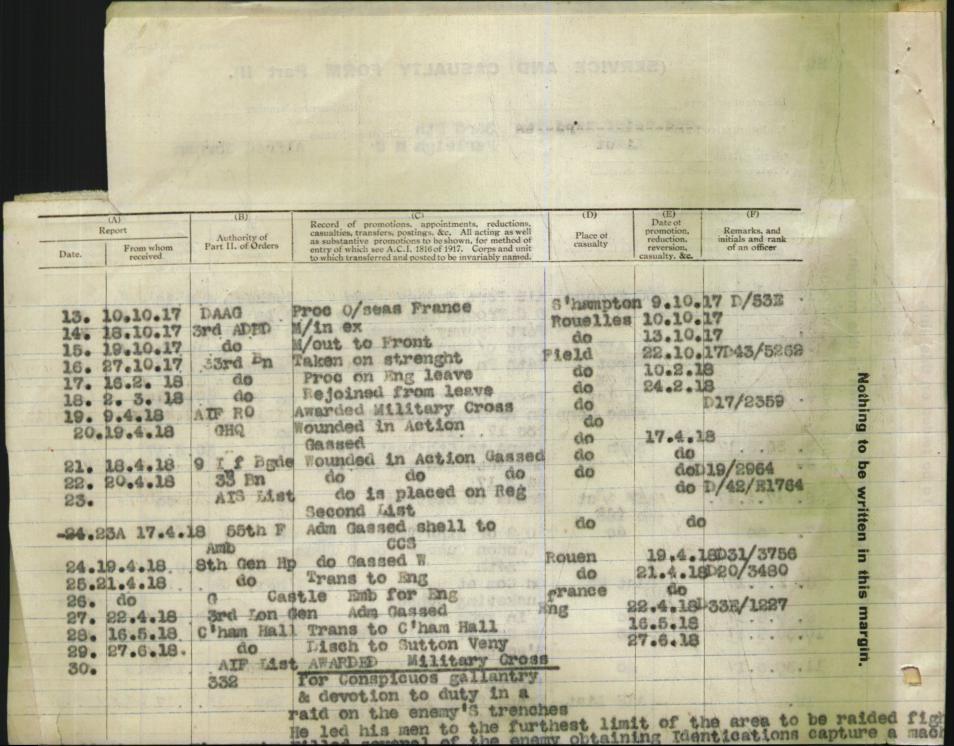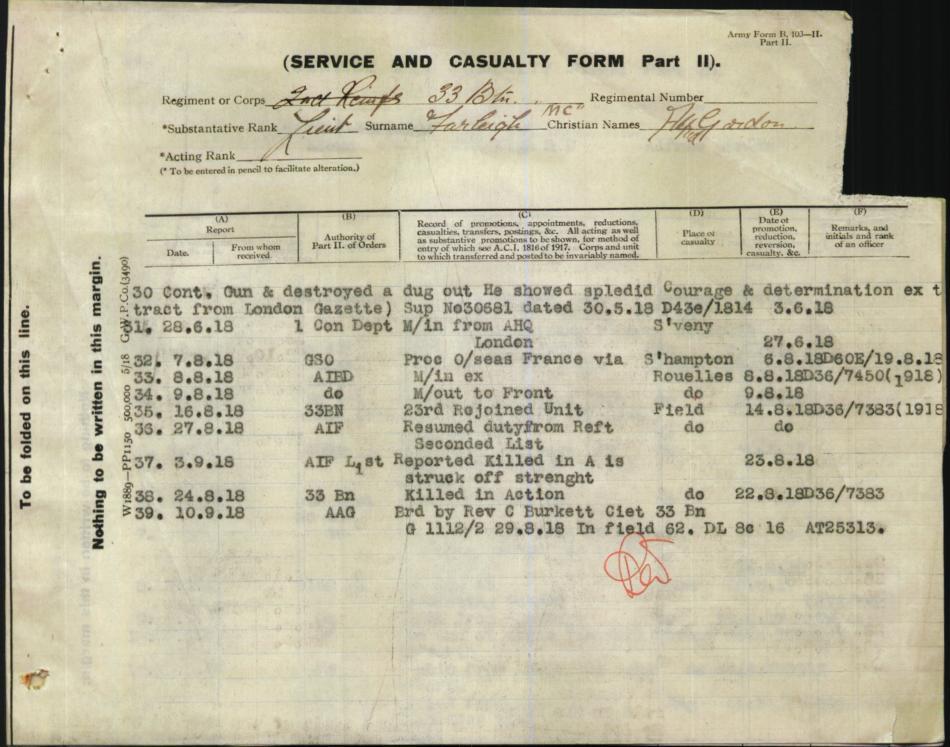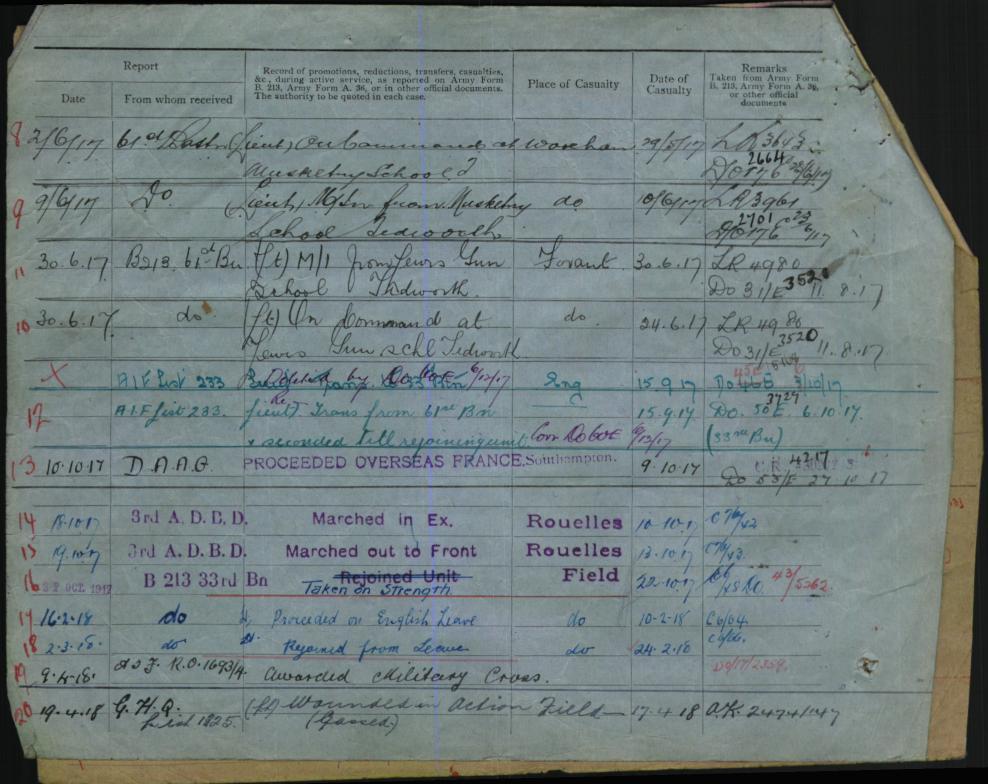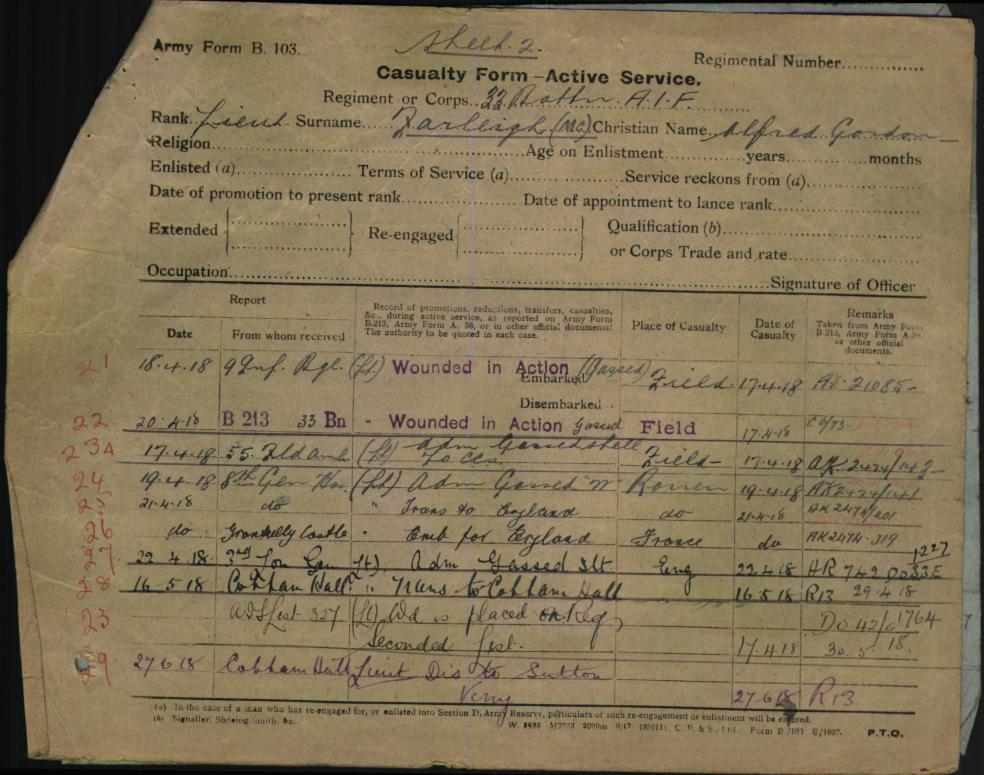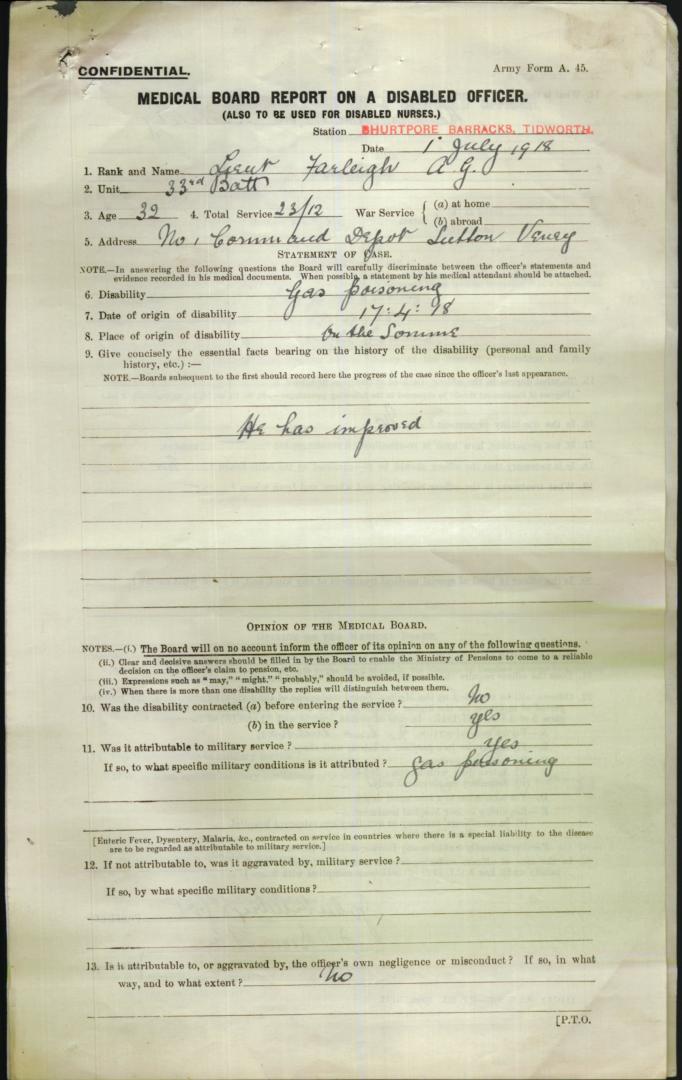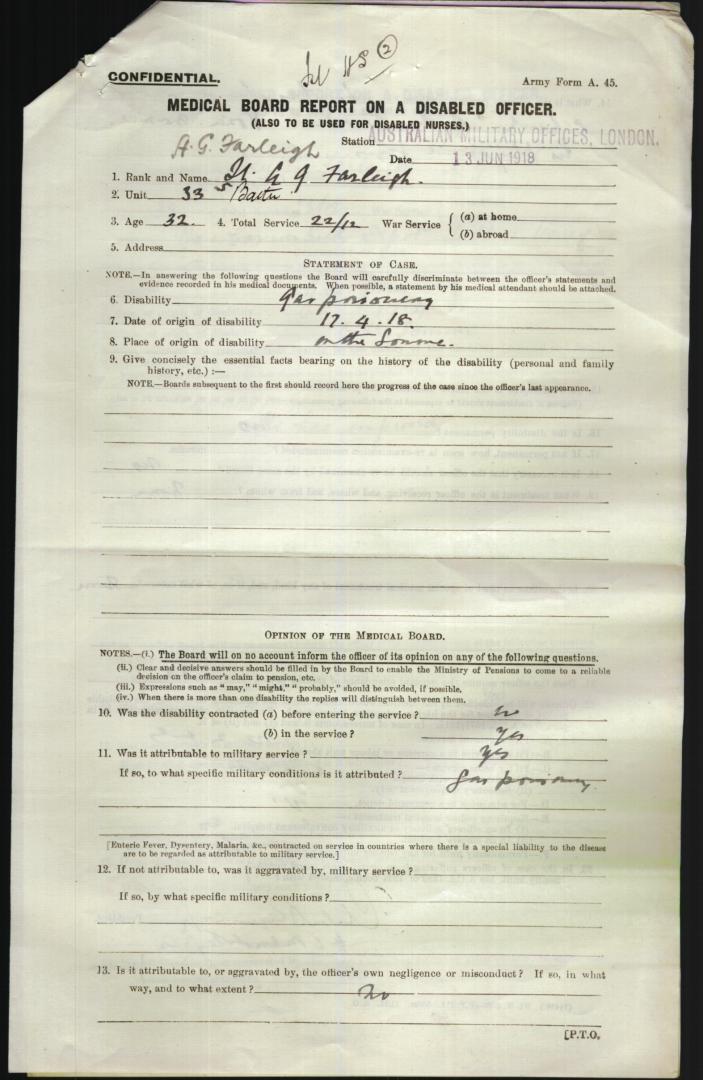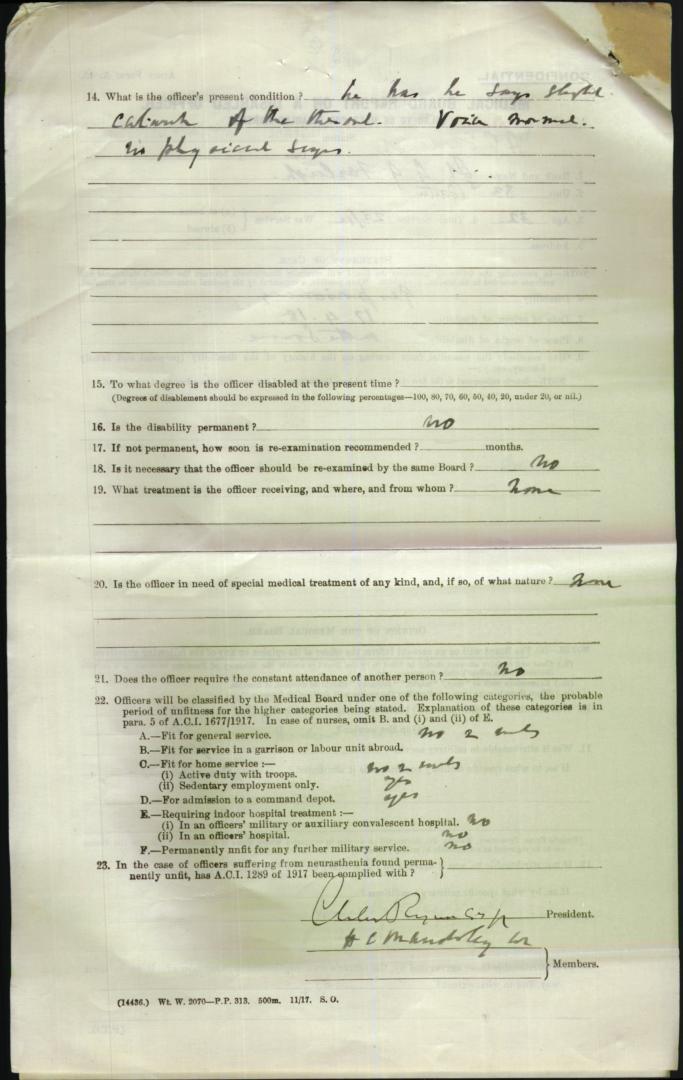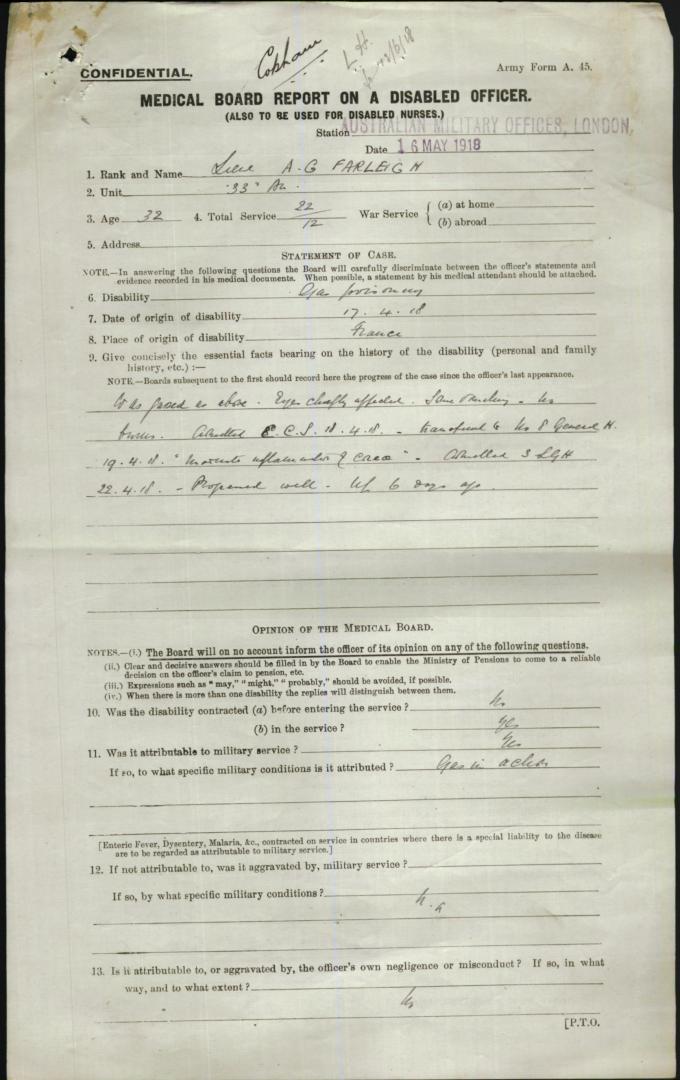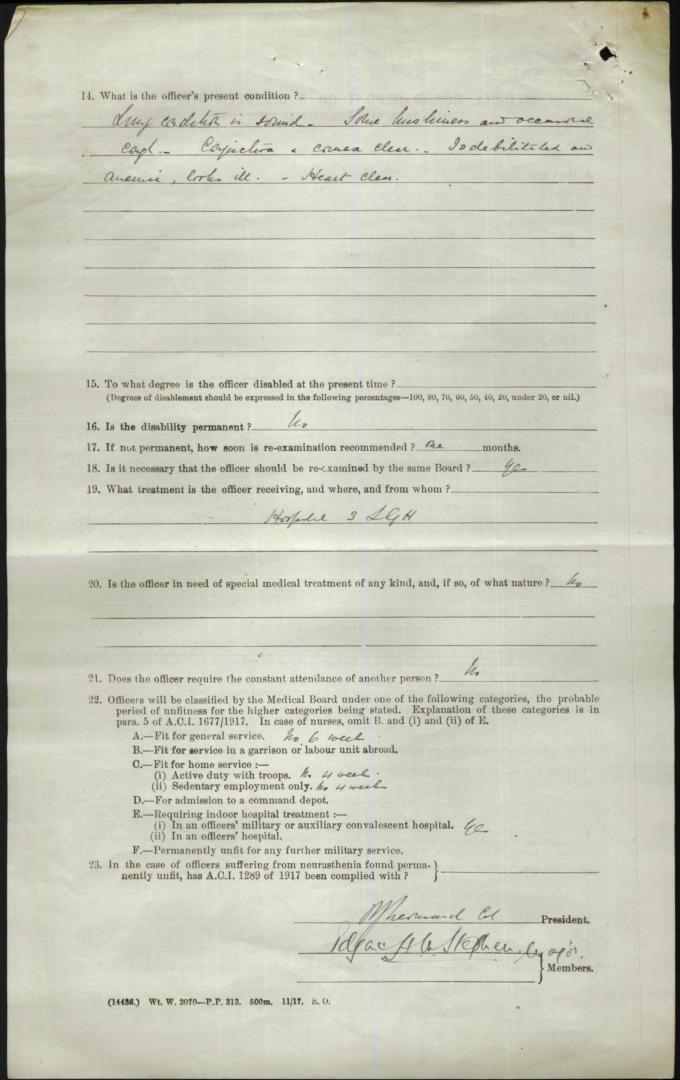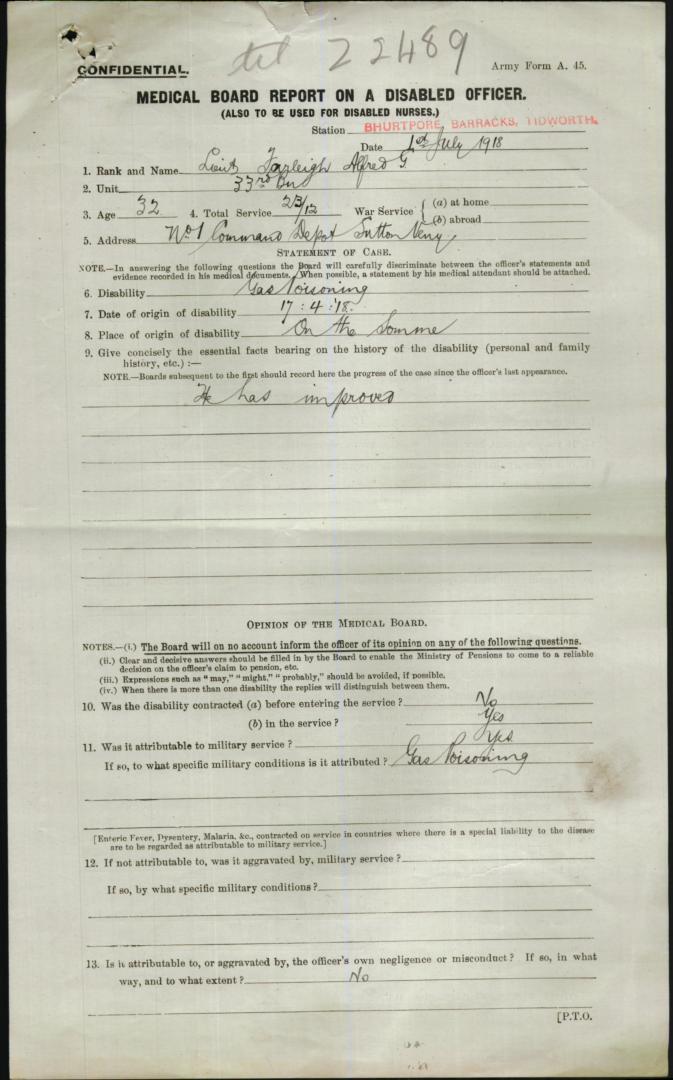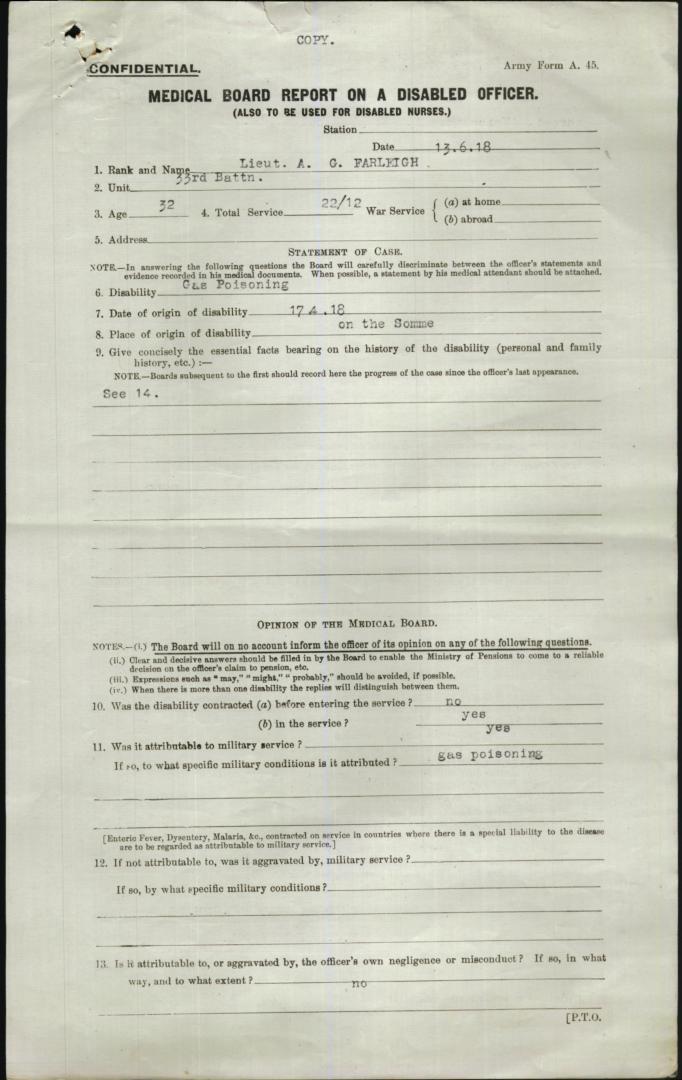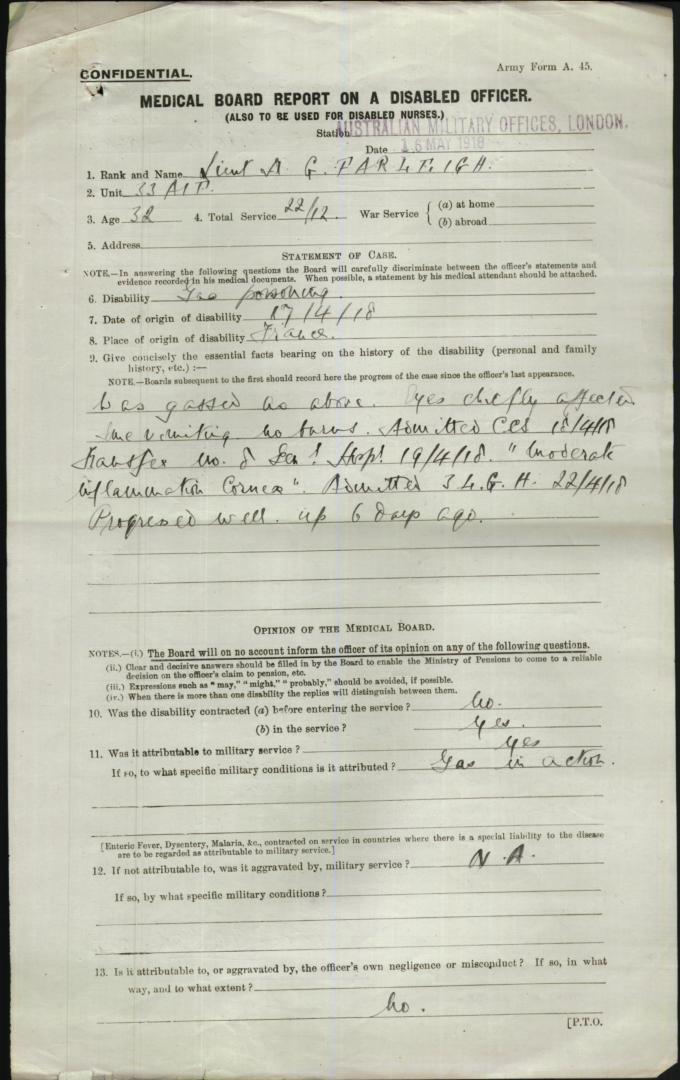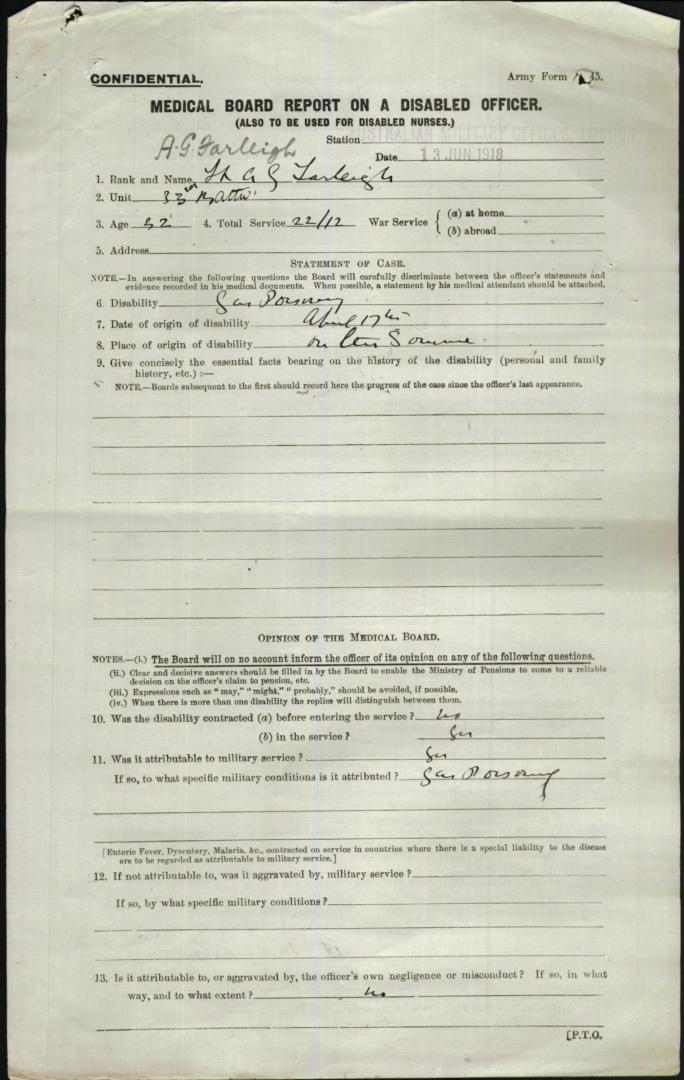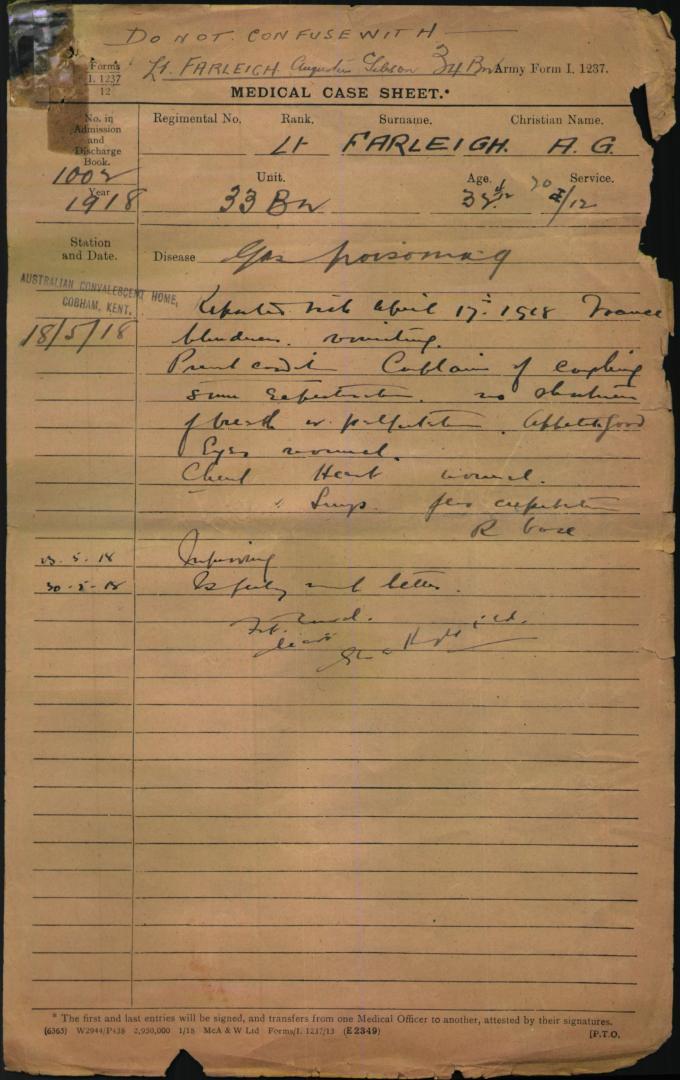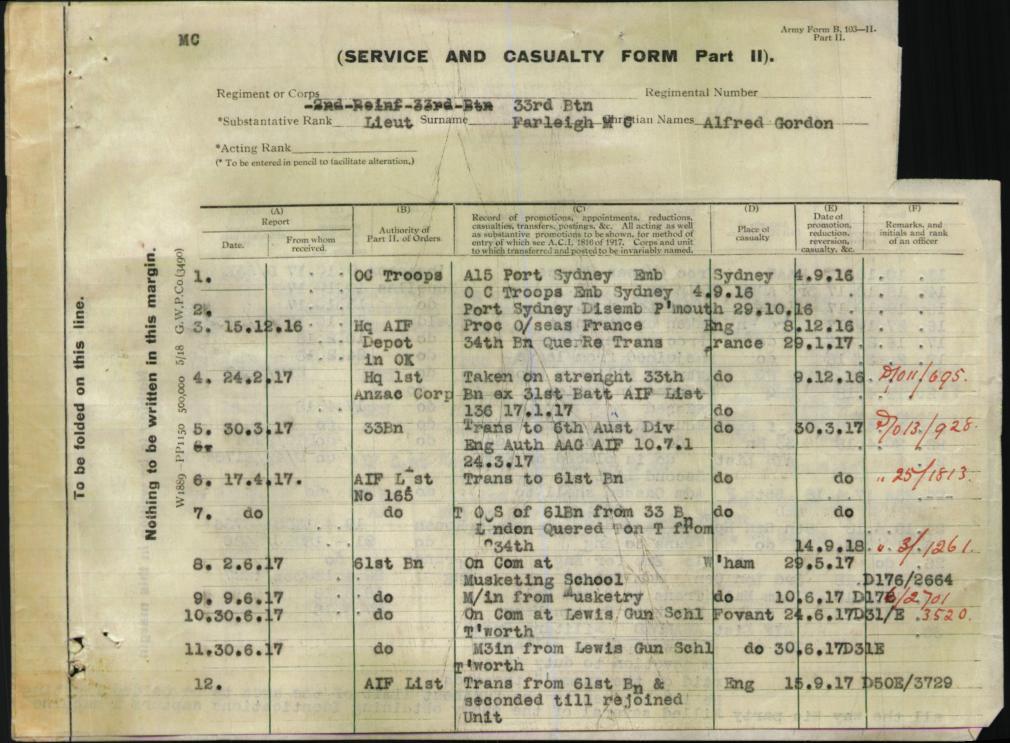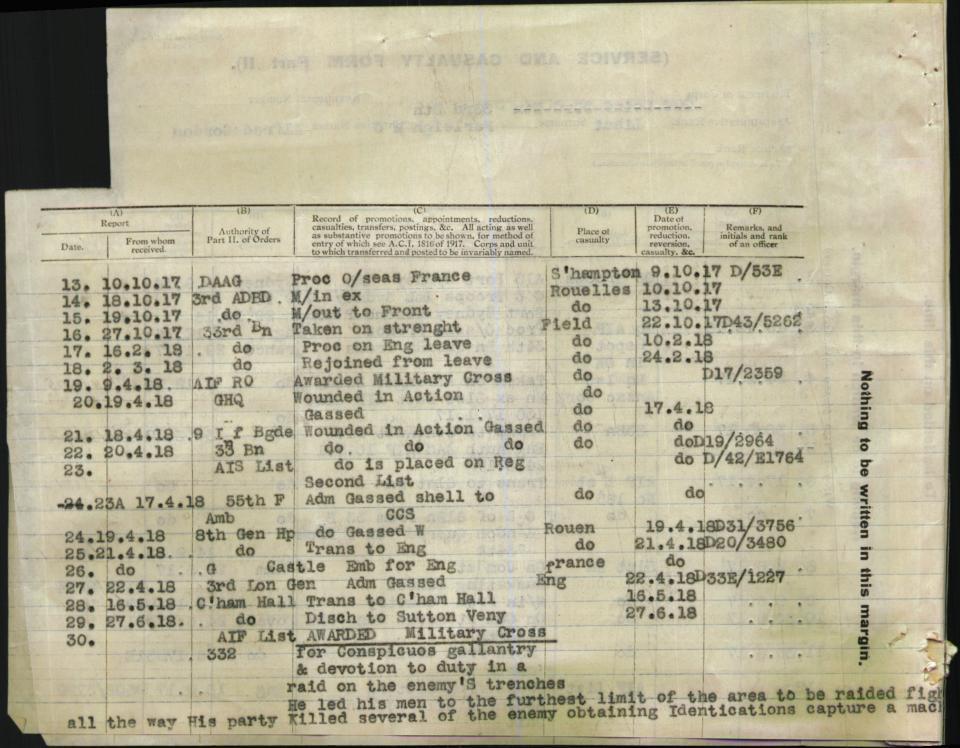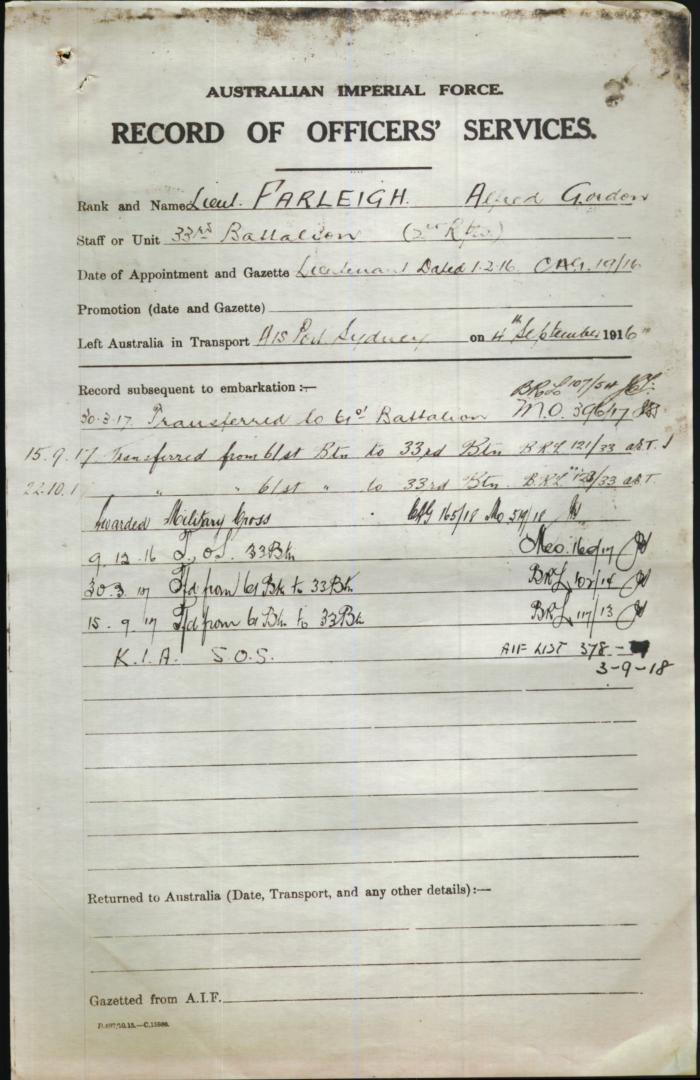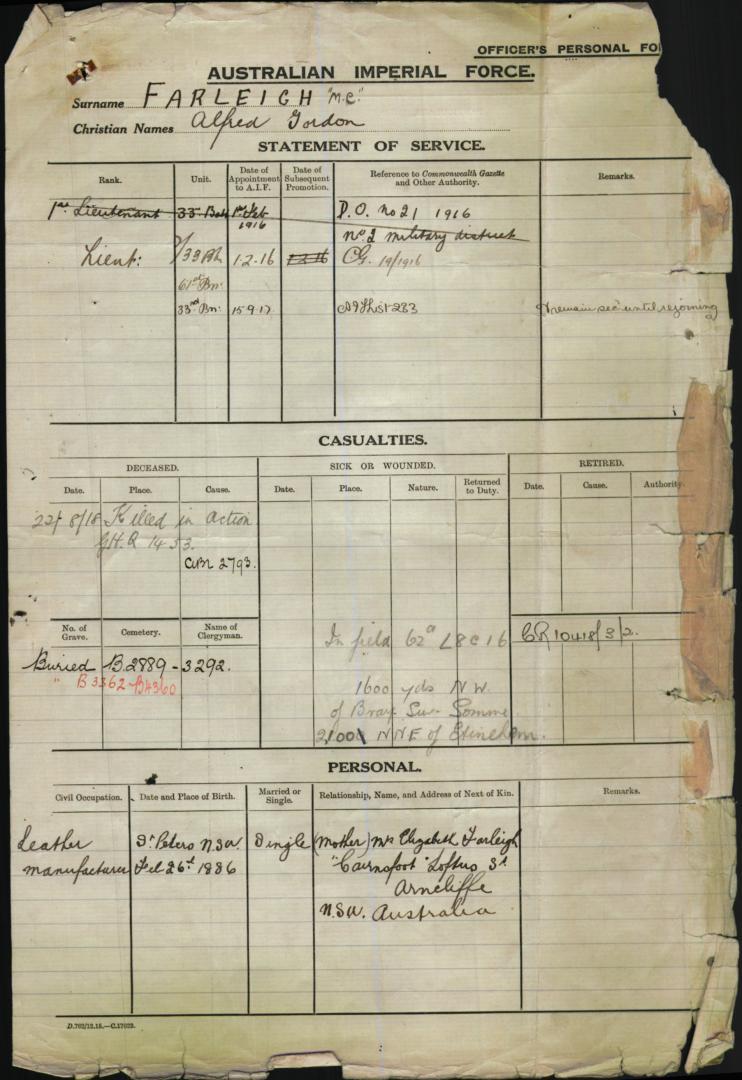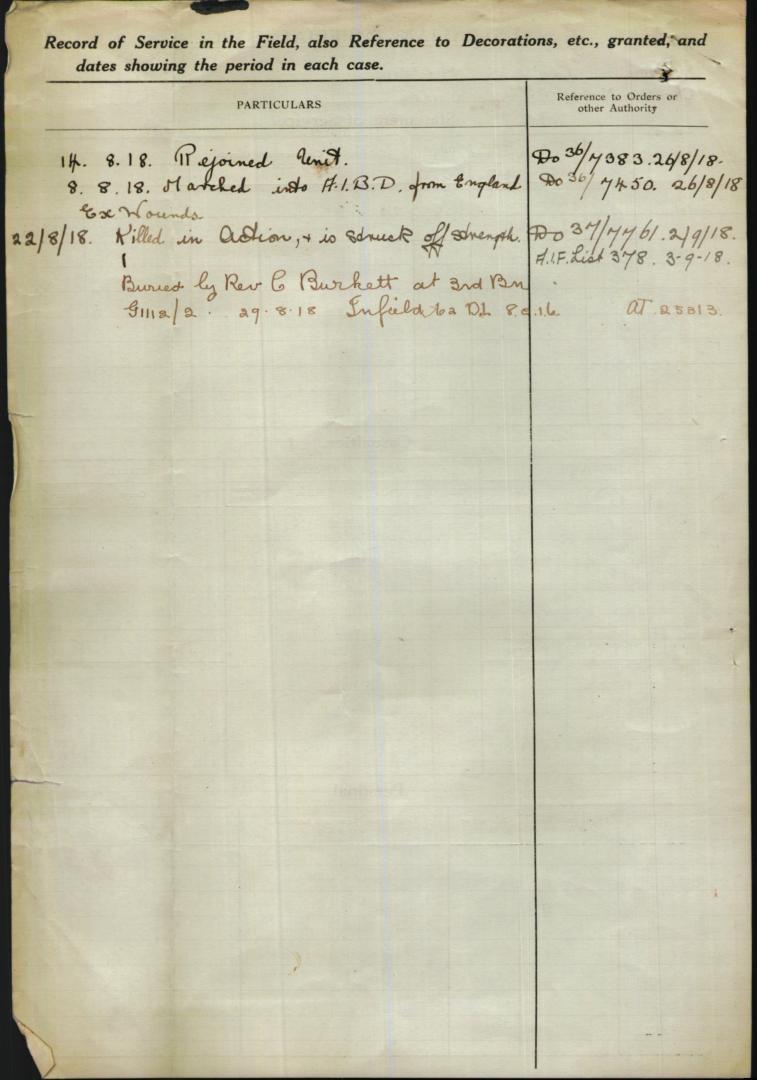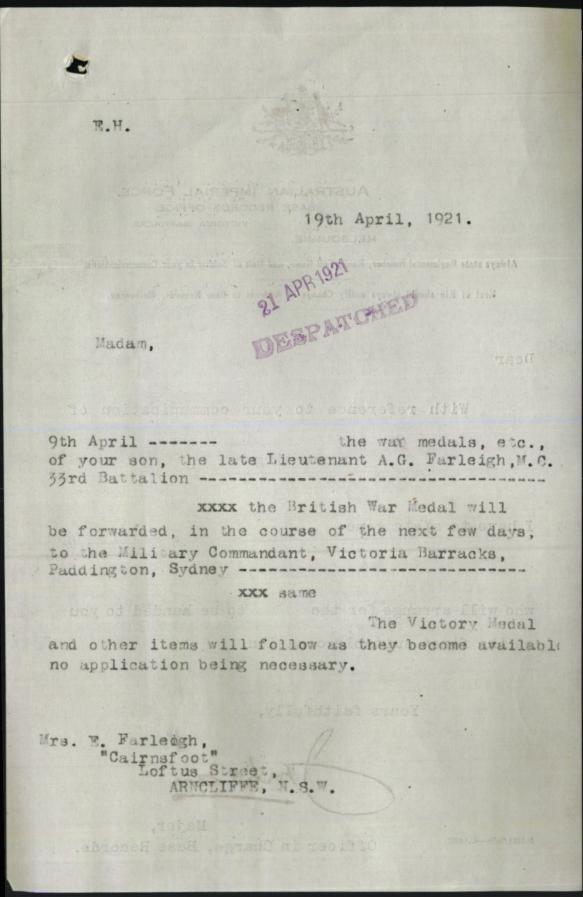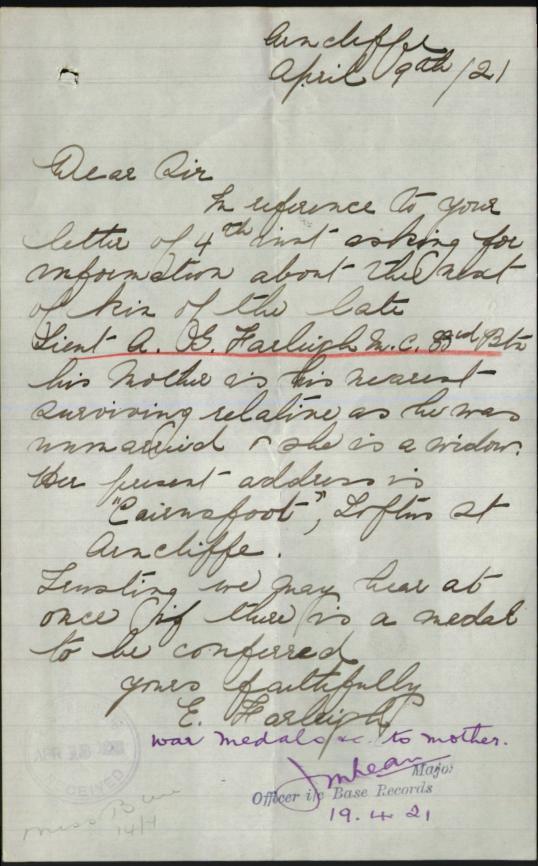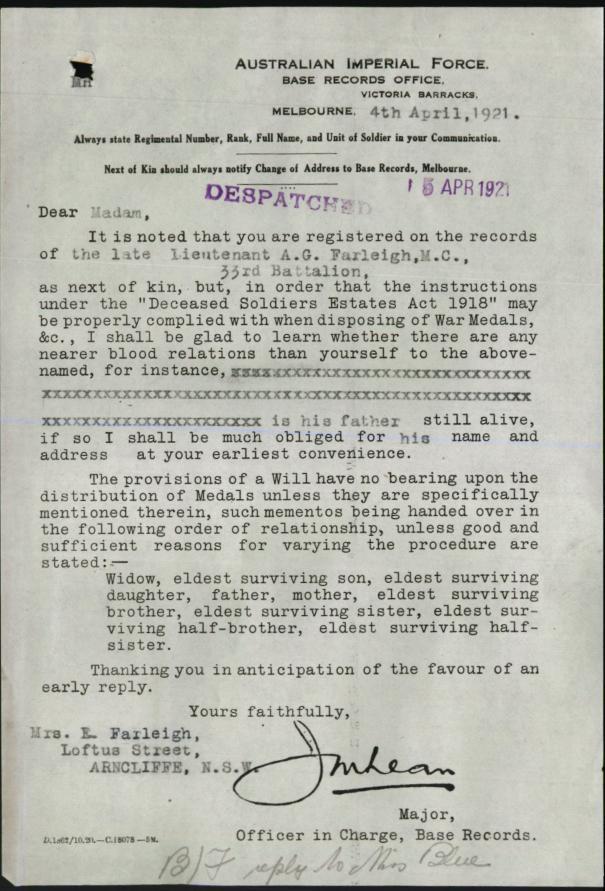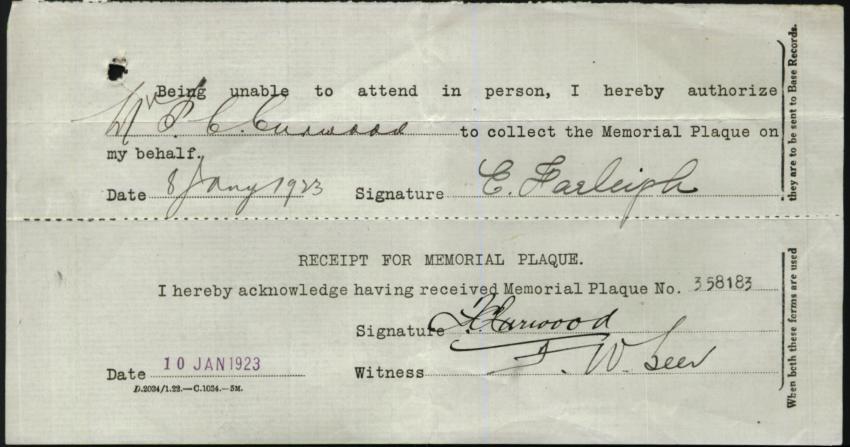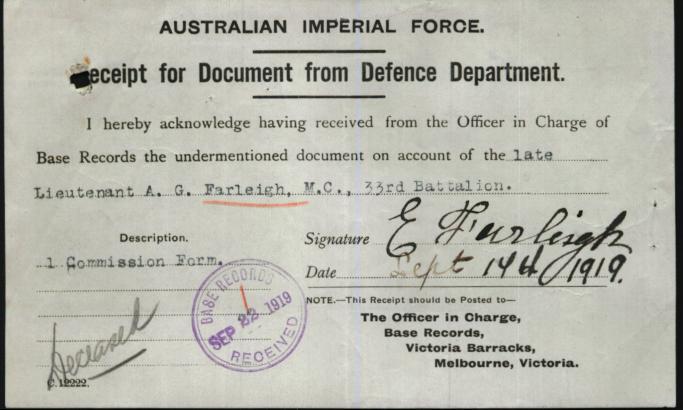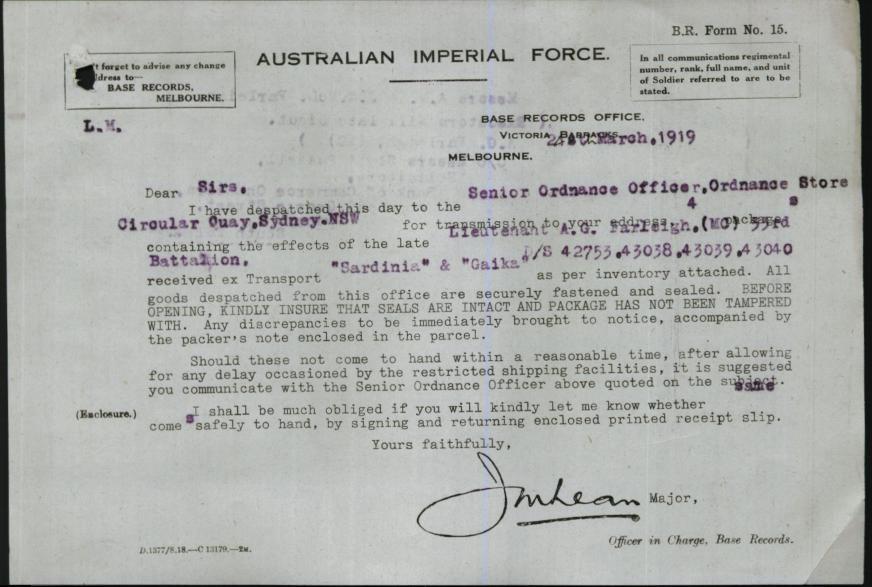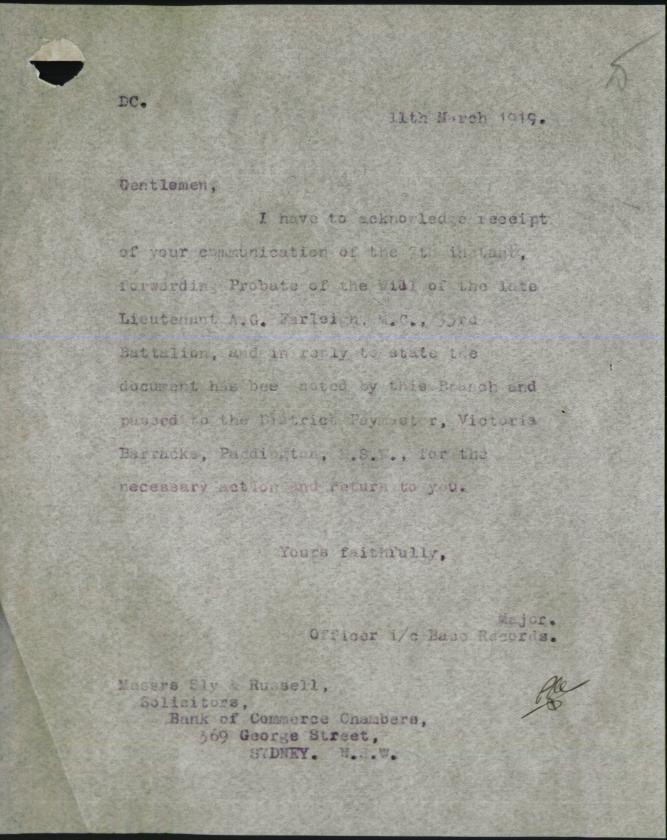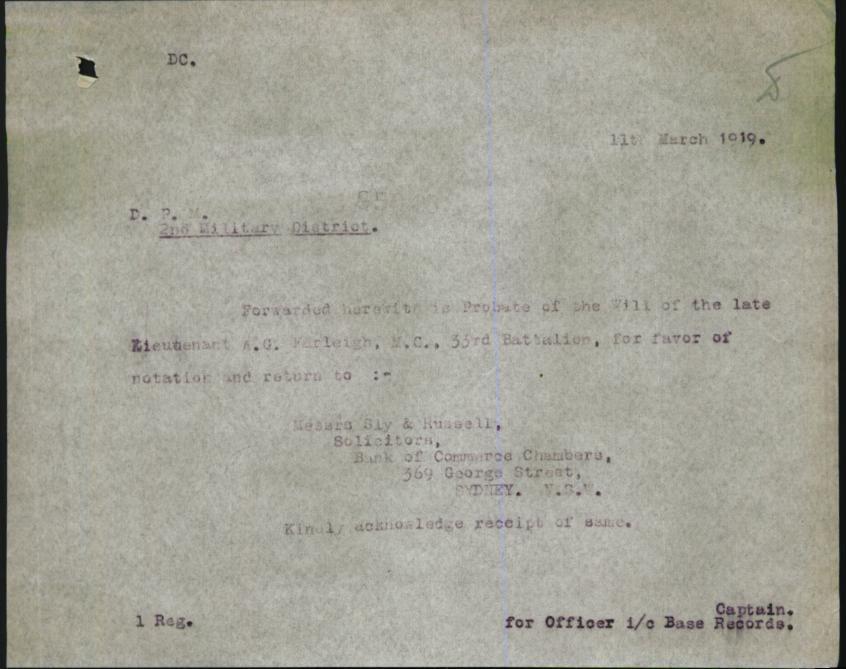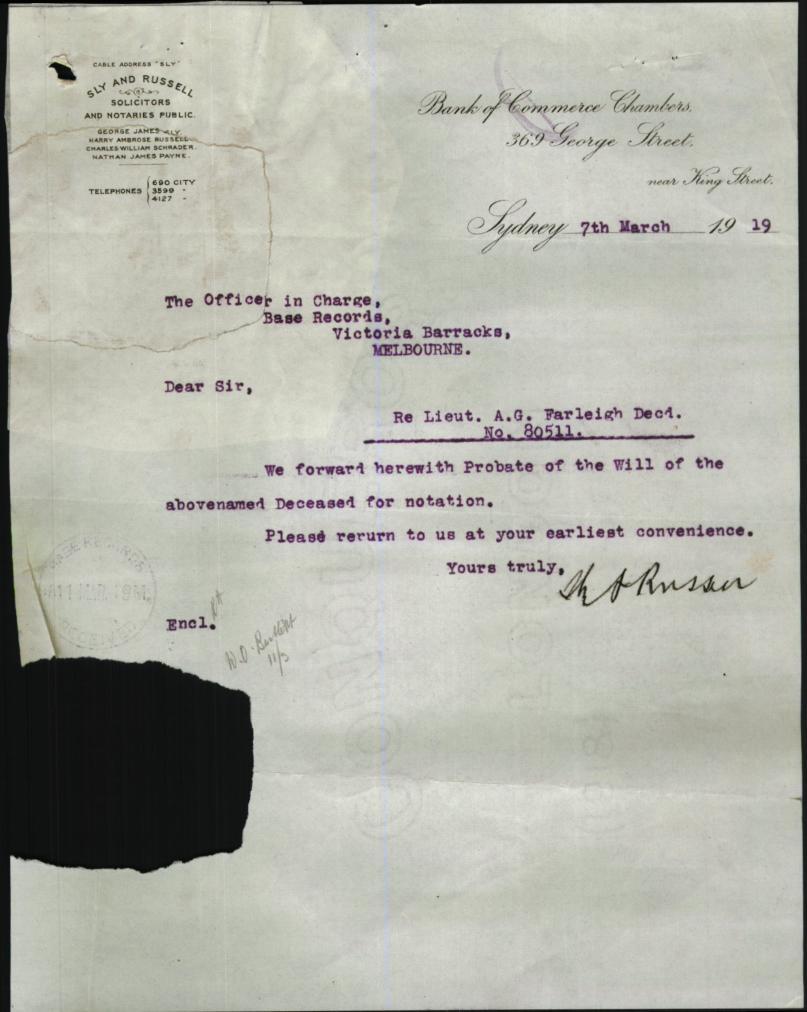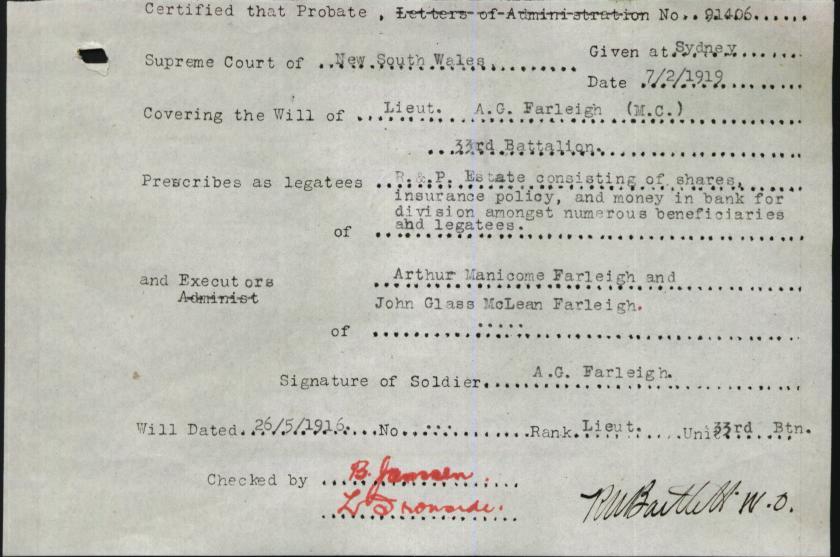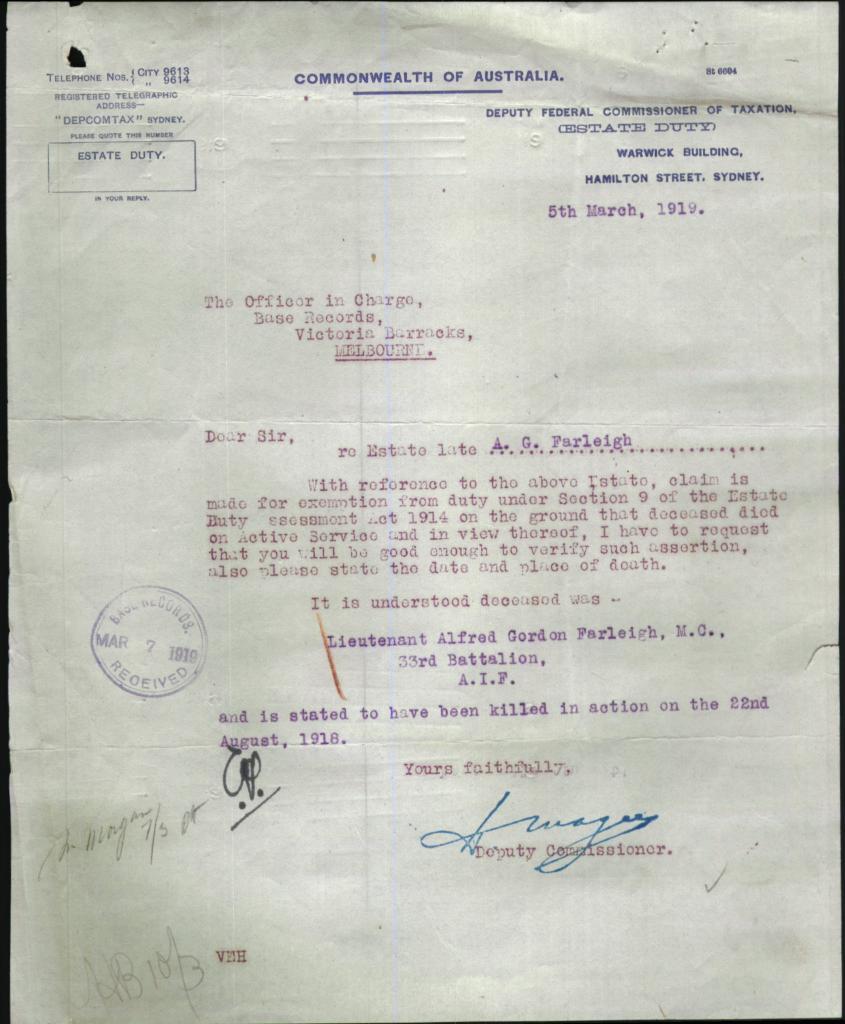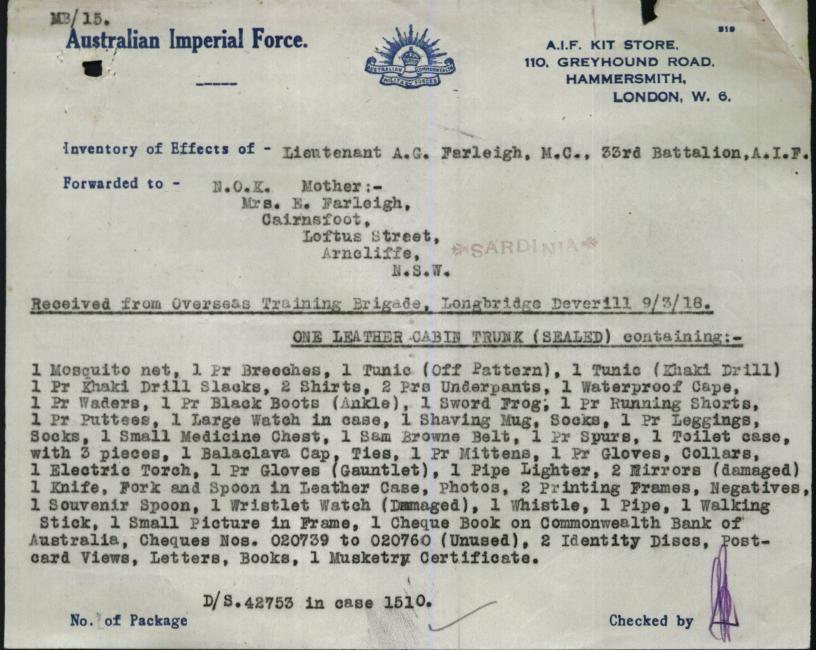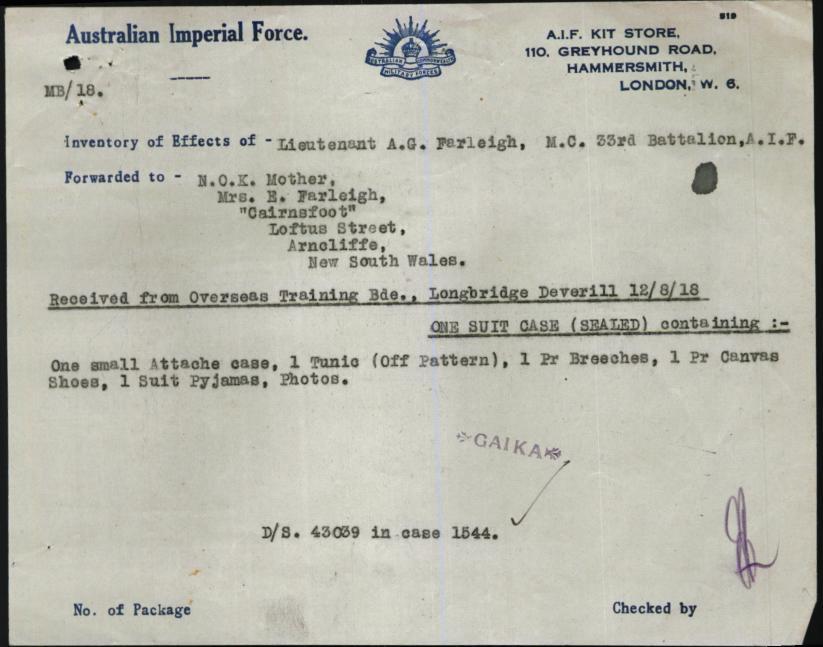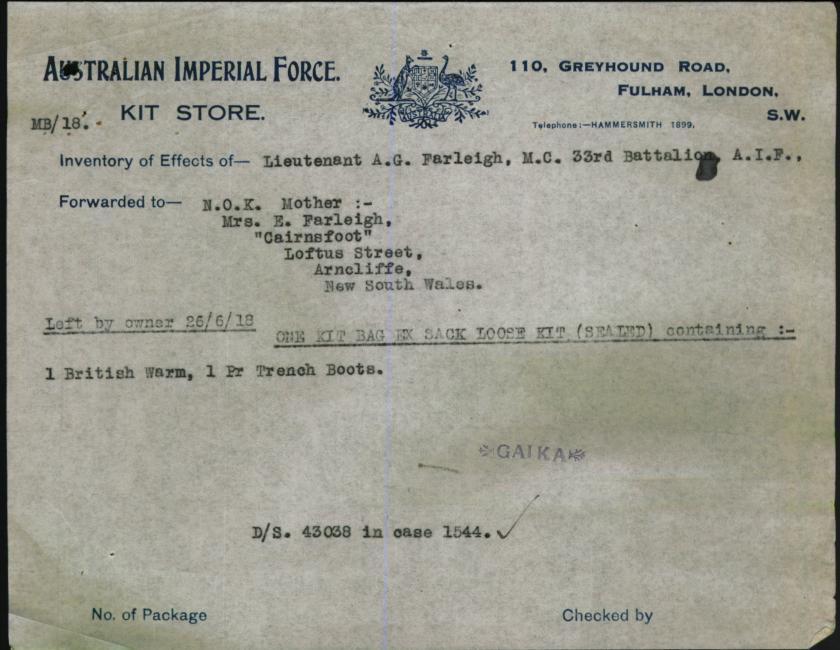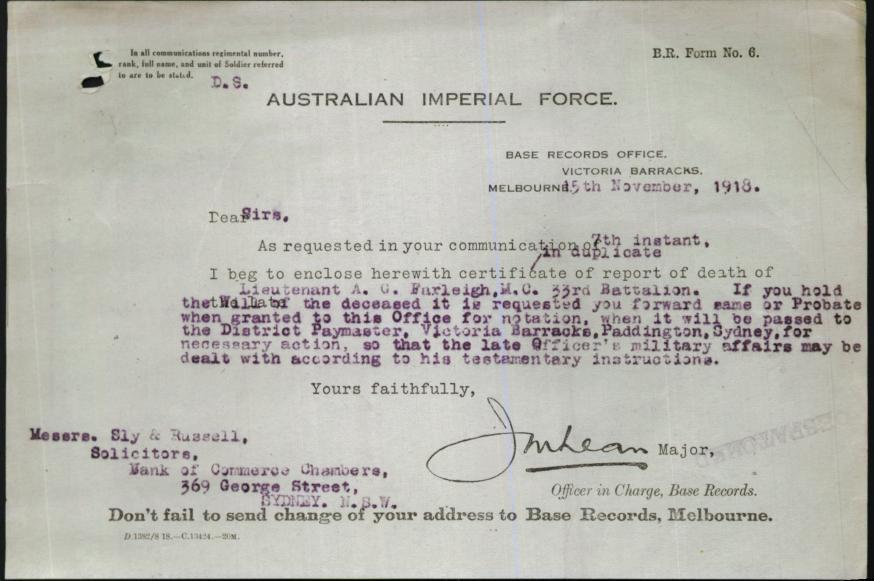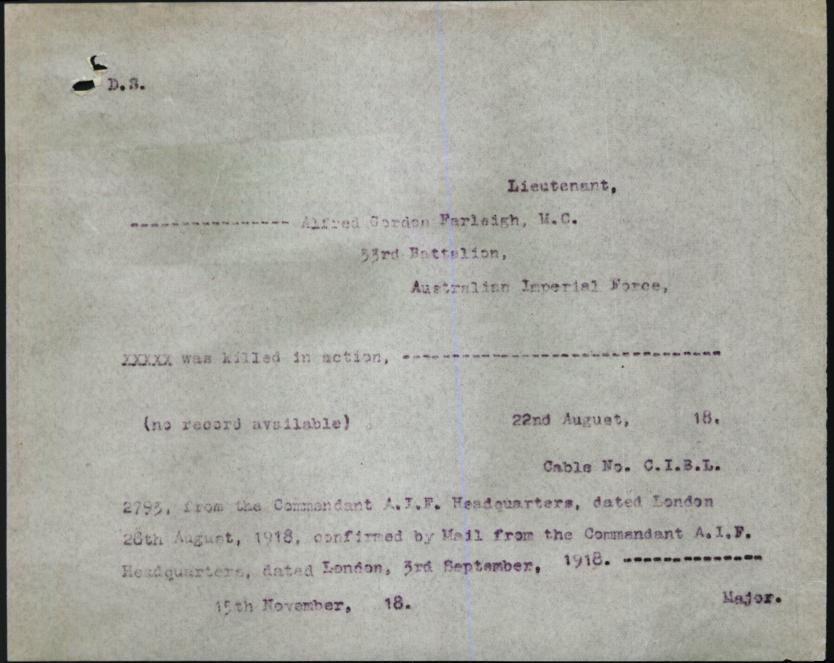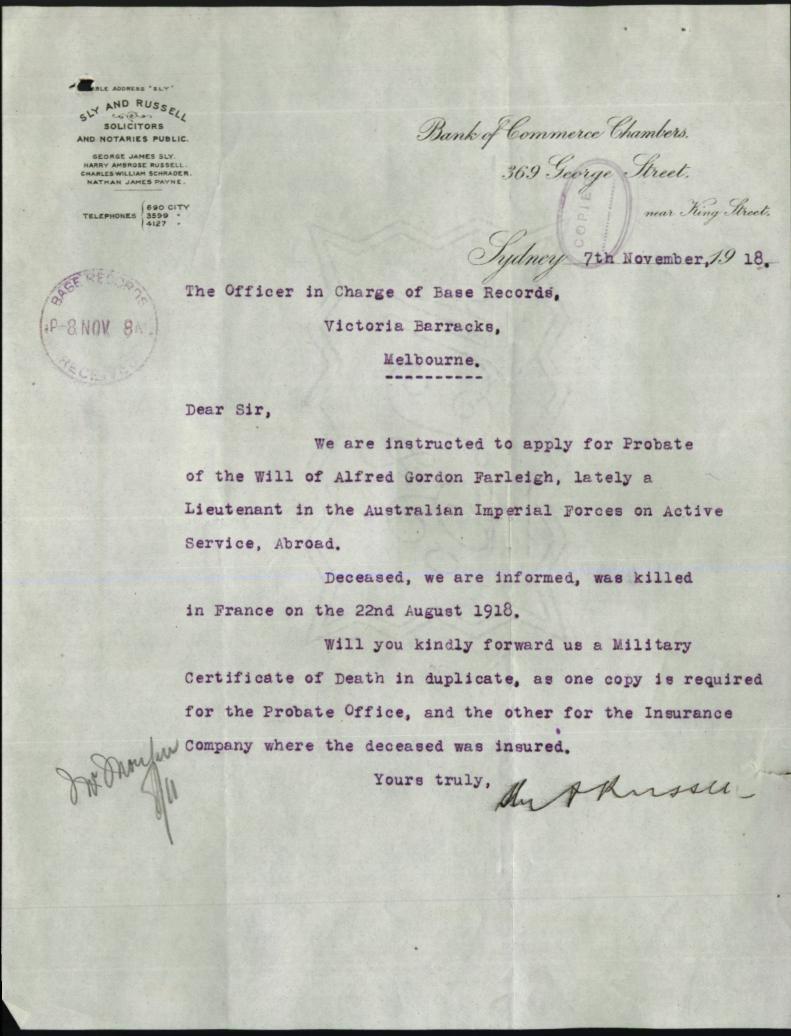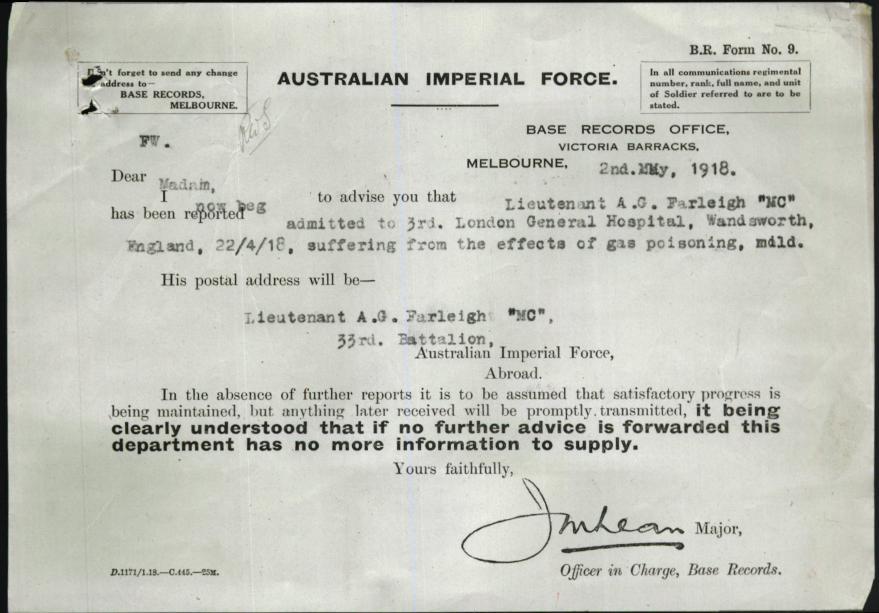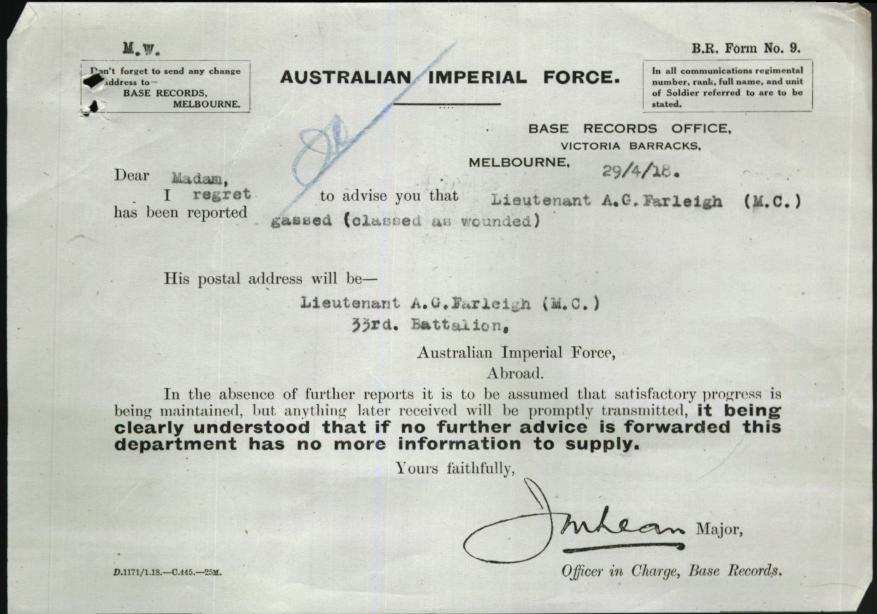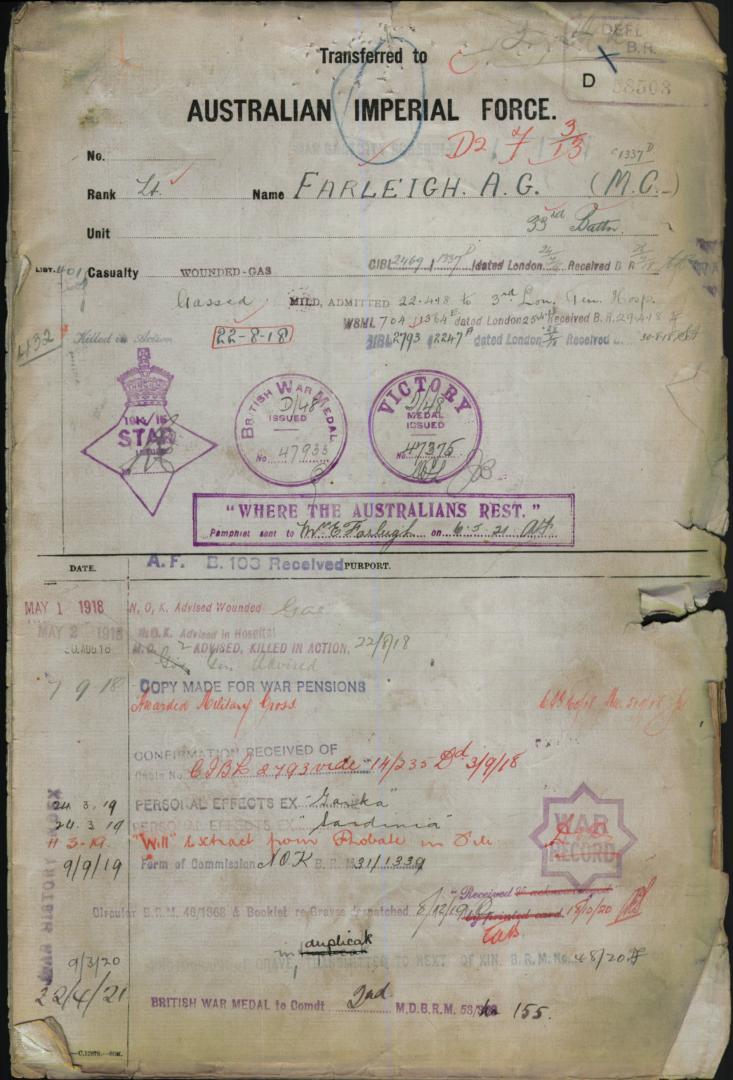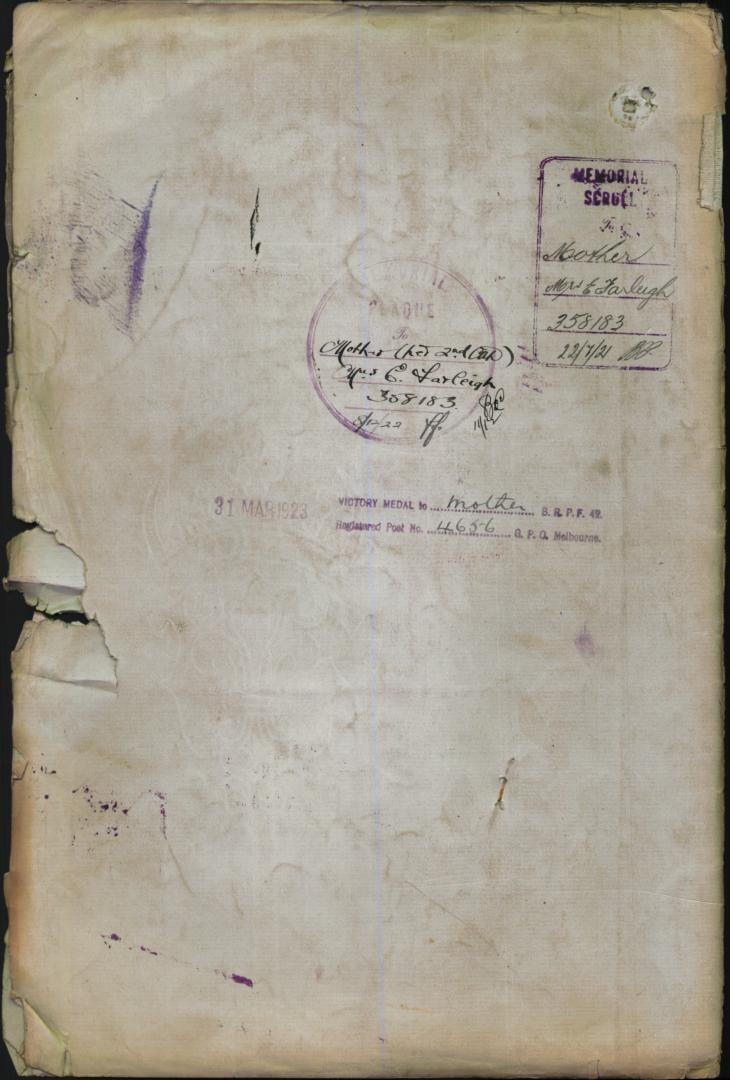
33rd BATTALION AIF
Corporal: 970 Donald Cranston MURRAY. M.M.
Born: 5th November 1881. Inverell, New South Wales, Australia. Birth Cert:19310/1881.
Died: 23rd July 1917. Killed in Action. Messines, Belgium.
Father: William Cranston Murray.
Mother: Mary Ann Murray.
INFORMATION
Donald Cranston Murray, C Company 33rd Battalion AIF at Armidale, N.S.W.
HMAT A74 "Marathon"
9th April 1917.
On the 9th the 33rd once again took over the front line, again at L'Epinette. They moved to Senninghem on the 12th where they were headquartered until the 25th. Then once again they were on the march, via Renescure and Pradelle to Armentieres, Where, on the 28th they gained a well earned rest. On the 21st May the men of the 33rd were moved to Le Touquet to Ploegsteert Wood for the usual working parties, trench maintenance being high on the agenda for the coming offensive.
(Never a Backward Step; Edwards 1996)
Don was treated by the 11th Austrian Field Ambulance on the 1st of May where he was evacuated suffering from Influenza
7th June 1917.
THE BATTLE OF MESSINES
The 3rd Australian Divisions first major offensive was at Messines Ridge on the 7th June 1917. The Australian 3rd Division was a part of the II Anzac Corps which was allotted to the first assault. The 25th New Zealand, 3rd Australian Division with the 4th Australian Division in reserve. The 4th Division were battle hardened troops who had fought many major battles.The 3rd Australian Division were having problems getting to the "jump off" point. The day before the 9th and 10th Infantry Brigades were bombarded by German Gas-Shells around Hill 63 and Ploegsteert Wood. Many of the Aussies were not wearing gas masks, but despite this they pressed on even though they received 500 casualties.
They made it to the "jump off" point but only just with some of the men from the 9th and 10th going straight over the top without stopping. The mines went up and the attack commenced behind a protective barrage. The II Anzac Corps were attacking on the right with their objective being the southern shoulder of the ridge which included Messines, the Dover and St Yves areas as far south to the east of Ploegsteert Wood.
Major General Sir John MONASH's 3rd Division had to contend with a tricky 3 mile approach out of Ploegsteert Wood and after the German gas attack, but they were not deterred. The 9th Infantry Brigade under Brigadier General: Alexander JOBSON and the 10th Infantry Brigade under Brigadier General W R NICHOLL had just made the jumping off point but some of the men did not stop, going straight into the assault from the approach march.
Their objective lay between St Yves and the Douve. The mines at Trench 127 and Trench 12 at Factory Farm were laid to aid this task. The explosions erupted a few seconds before zero hour and created craters of 200 feet in diameter, completely obliterating the German defense line as the 9th and 10th Infantry Brigades went over the top. The mine crates forced the 9th and 10th Brigades to veer to the left and right which caused some confusion with the main assault. It is testimony to the quality of training that every man knew the ground, tasks and objectives so well.
Private: 1804 John CARROLL 33rd Battalion, rushed the enemy's trench and bayoneted four of the German occupants. He then noticed a comrade in difficulties and went to his assistance, killing another German. He then attacked single handed a German Machine Gun Team, killing all three of them and capturing the gun. He later rescued two of his comrades who had been buried alive by German Shell Fire, and in spite of heavy shelling and machine gun fire he dug them out alive and saved them from certain death. John was awarded the Victoria Cross.
The German forward zone was completely engulfed and taken by the main assault. The two supporting battalions of each brigade then passed the leading battalion to continue the advance. The men were constantly re-supplied and the ridge was taken. There were many German prisoners taken during the offensive. The 3rd Division was well ahead with the 9th Infantry Brigade pushing on beyond Grey Farm, and on the right the 10th Infantry Brigade were veering left towards Septieme Barn north of Douve.
The German resistance was heavy but was generally brushed aside by tanks and artillery before the infantry had to become too involved.The 4th Bavarian Divisions Artillery had made little impact, but as the day wore on the 3rd Division and later the 4th Australian Division received many casualties from German artillery. (70% of all casualties during WW1 were from artillery).
By 9:00am nearly 6 hours after the assault began the Germans were in dissaray, but there was a major problem as the Australians received less casualties as anticipated and when ordered to dig into the ridge they had so many men, that some could not find shelter. the 35th battalion were dug in around Seaforth Farm.
The second phase of the operation was to take the Oosttaverne Line. The 3rd Australian Division would now be in reserve with the 4th Division attacking. The 9th Infantry Brigade (33-34-35-36Bn) were near Thatched Cottage facing Warneton. The river Lys was to their right and the Ploegsteert Wood was now behind them.
Once their objectives were taken the troops consolidated. A barrage to stop and counter attack was shortened and caught three battalions which had to retire. By 9:00 pm this part of the Oosttaverne Line was abandoned. At 10:45 pm General: Alexander John GODLEY ordered the 3rd and 4th Divisions to retake it. This they did by the early hours of the 8th of June.
The Battle for Messines Ridge during May-June 1917 saw 35 officers and 1,631 other ranks loose their lives.
9th Infantry Brigade Casualties.
| 33rd Battalion. AIF |
8 Officers |
382 Other ranks |
| 34th Battalion. AIF |
10 Officers |
378 Other ranks |
| 35th Battalion. AIF |
5 Officers |
431 Other ranks |
| 36th Battalion. AIF |
9 Officers |
421 Other ranks |
| 9th Machine Gun Company. AIF |
2 Officer |
17 Other ranks |
| 9th Light Trench Mortar Battery. |
1 Officer |
2 Other ranks |

FIELD DRESSING STATION, MESSINES 7th June 1917.
Recommended: MILITARY MEDAL.
970 Private DONALD CRANSTON MURRAY - For conspicuous gallantry and devotion to duty during the Battle of Messines from June 7th to June 11th. In the charge Private Murray's section leader was killed, and Murray immediately assumed command and led his party forward with considerable dash and courage. He organised his men well and promptly got on with the consolidation. Throughout the heavy and constant shelling he kept his men well in hand, and his cheerfulness and coolness inspired them all with confidence. On June 10th during a particularly heavy barrage when all available stretcher bearers were at work, he carried a man back to company headquarters heedless of all danger, and thereby saved his life.
12th June 1917
Nueve Eglise was the billeting area for the battle-weary remnants of the 33rd Battalion, when finally they were relieved from Messines on June 12th 1917. After 2 short days of rest they were again marched to new billets at Douleu, where they stayed for the next ten days. By then Command must have considered them sufficiently rested for they were ordered back into the front line, to relieve the 10th Cheshire Battalion on June 23rd.
(Never a Backward Step; Edwards 1996)
12th July 1917.
MESSINES Relieved 41st Battalion in Sector u.11.b to u-5-b as per Bn 0.0.47 d/9/7/17 and Intelligence summary d/127/17. Enemy Shelled road south of MESSINES and caught tail of relief Killing two. Two men killed and others wounded. Trenches found to be in very bad condition. They had been very badly sited no attention having been paid to conformation of ground. The first principles of trench siding had not been observed and no attention paid to drainage. Communication trenches were straight, shallow and through not having been duck boarded when dug had become quite impassable in places an account of mud. Front Line had rifle on us field of fire and both it and the Support line were crude observation from WARNETON from whence they were directly exploded in places.
(33rd Battalion War Diary)
Printed in ‘The Armidale Express & New England General Advertiser’, dated 25th Sep 1917 (transcribed by Bill Durrant – 15 Feb 2017)
The following are some extracts from a letter received by Mrs. W. C. Murray from, her son, Corpl. D. C. Murray, M.M., 33rd Battalion. The letter was written on June 17, a few weeks before the noble young hero was killed in action:
"We were in the thick of the fighting last week; l will give you a brief outline of the advance. We were all in our place, ready to hop over at 3 a.m. We had mines laid at intervals under Fritz’s line, with thousands of tons of explosives in them. They were all fired simultaneously, and I can tell you it was some explosion; the ground rocked like a boat, and the air was full of dust and clods. Then our artillery opened fire, and we got the signal to hop over. I can’t describe what it was like. I had not gone far when a shell exploded about three yards from me. I heard it coming, and dropped flat on the ground; by doing so I escaped, but was nearly choked with the fumes of it. I got going again, and then I saw a chap fall. I went over to him and found it was young Cliff Chaffey, from Moonbi, shot through the chest. The poor boy couldn’t speak, and I saw his case was hopeless; so I made him comfortable in a shell hole and went on. The enemy seemed half dazed, and I don't, wonder, for the artillery was terrific.
Some of the Fritz's were crying 'Mercy Kamarad’ but they had kept us cooped in wet and muddy trenches for six months and killed our mates, so we were not going to show them much mercy. I shot two at close range, and then found Jack Grattan with a bullet through his thigh. By this time we had reached our objective and started to dig in. We had to work at top speed, for Fritz's snipers were potting at us and he was shelling us for all he was worth, and that's where a lot of our boys got knocked. However, we got dug in and held the position for 96 hours until we were relieved. You may guess we were pretty weary, unshaven, and black with sweat and dust. The last night we were in we advanced another 1000 yards, rooting Fritz out of his new position. Our artillery is much superior to his now and we send over about ten shells to his one. I have been recommended for something I did in the push, and may get a medal; perhaps it was for carrying one of my wounded mates back to the dressing station, when we couldn't get a stretcher-bearer. My section came through the push with only one killed and one wounded; they were both good men. The one who is wounded got his eye knocked out. He is in England now, and I hope he gets back to Australia, for he has a wife and three children at Tingha.
In a later letter, dater 29th June, the young soldier says: You will be pleased to hear that I have won the Military Medal. I was presented with the ribbon yesterday, and will get the Medal later.
Mr. W. C. Murray, of ‘Twinbrook,' Bendemeer, has received the following information from Lieut.-Colonel Morshead, being an extract from routine order No. 320, dated 29tb June, 1917:
Corpl. Donald Cranston Murray — For conspicuous gallantry and devotion to duty during the battle of Messines Ridge, from the 7th to 11th June 1917. In the charge Corpl. Murray's section leader was killed, and Murray immediately assumed command and led his party forward with considerable dash and courage. He organised his men well and promptly got on with his consolidation. Throughout the heavy and constant shelling he kept his men well in hand, and his cheerfulness and coolness inspired them all with confidence. On June 10, during a particularly heavy barrage, when all available stretcher-bearers were at work, he carried a man back to headquarters, heedless of all danger, and thereby saved his life. The Corps Divisional and Brigade Commanders desire their congratulation conveyed to the recipient. The Commanding Officer also desires to congratulate the recipient." L. J. Morshead, Commanding, Lieut.-Col:
Dear Mr. Murray,—I wish to offer you my heartiest congratulation on your son's achievement. He did splendidly. -
L. J. Morshead.
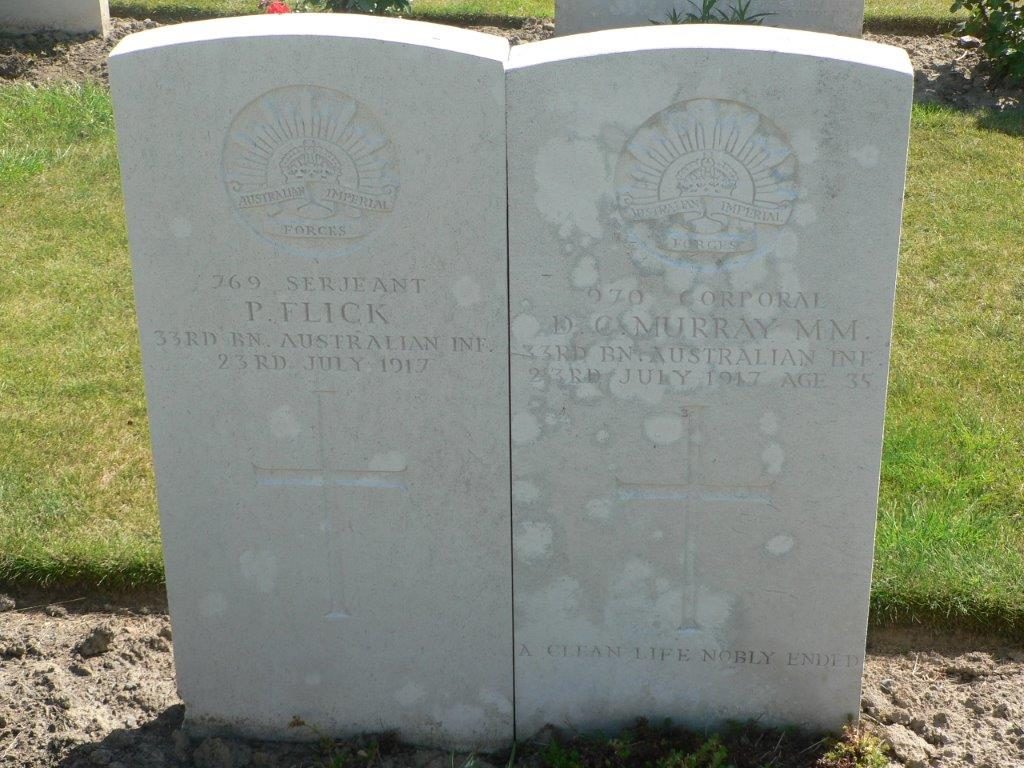
Row C; Grave Number: 21A
Don is buried alongside Sergeant:769 Petrus FLICK who he tried to save on the 23rd July 1917.
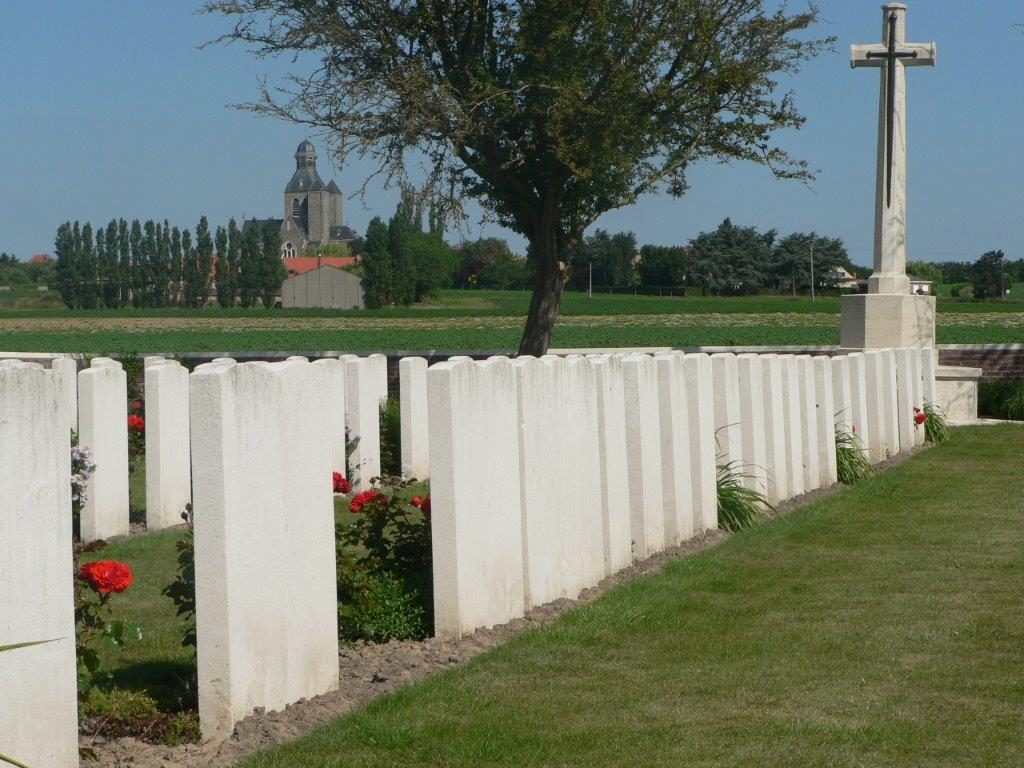
Bethleem Farm West Cemetery, Messines, Belgium.
(Glennys Gow 2010)
Family Information
Don was a single 34 year old Grazier from Barraba, N.S.W. upon enlistment.
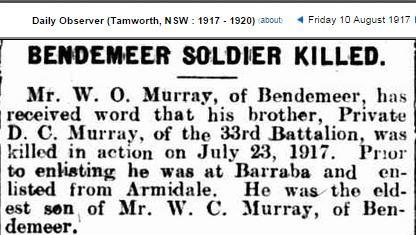
Brother; Private: 1028 James Henderson Murray. 1st Light Horse.

Hello David
Thanks for your response. I'm not sure if you need any detail about my family member Donald Cranston Murray - if it is of any use below is what I submitted to the In Memories website of Pierre Vandervelden of Belgium:
http://www.inmemories.com/Cemeteries/bethleemwest.htm
Thank you for all your work, your site is quite remarkable. It is wonderful to see images that would not be available otherwise and to be able to access so much detail.
In 2010 my late husband and I spent days driving ourselves around the Western Front battlefields so we could visit all the family graves/wall panels that we were aware of at the time (sadly, quite a number) - a deeply moving experience. Given that he came from a property on the New England just out of Bendemeer, I took some comfort that Donald Cranston Murray's resting place is still a working farm. If it had to be, that he lies in the middle of a paddock surrounded by a crop seems far more appropriate for a country fellow than a town cemetery.
Kind regards
Glennys Gow
November 2017.
https://www.aif.adfa.edu.au/showPerson?pid=219111
Bendemeer Cemetery; Memorial Plaque.
Military Records
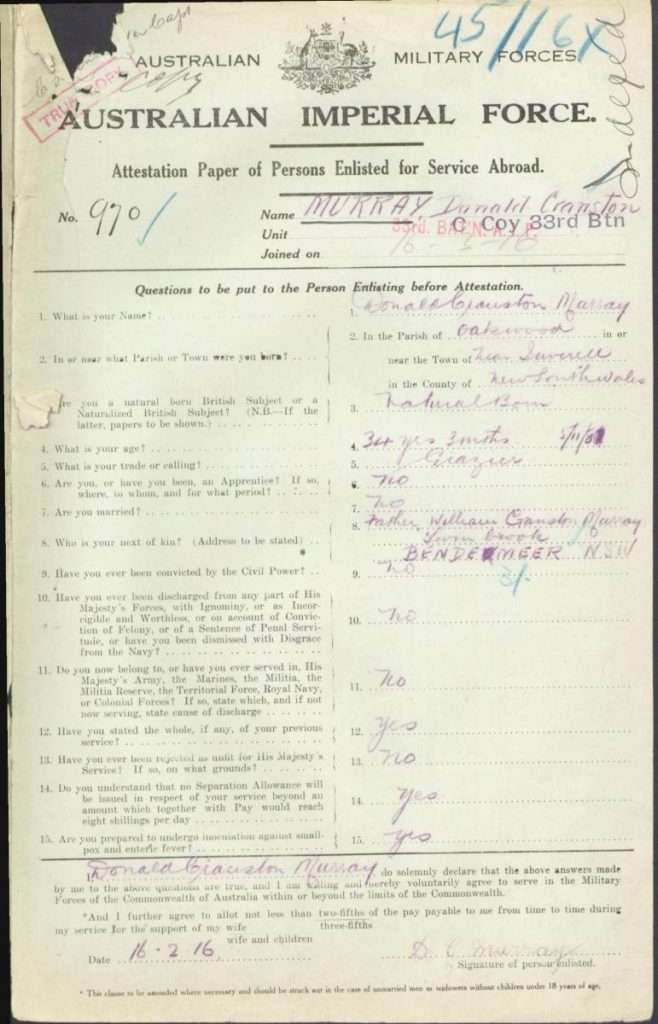

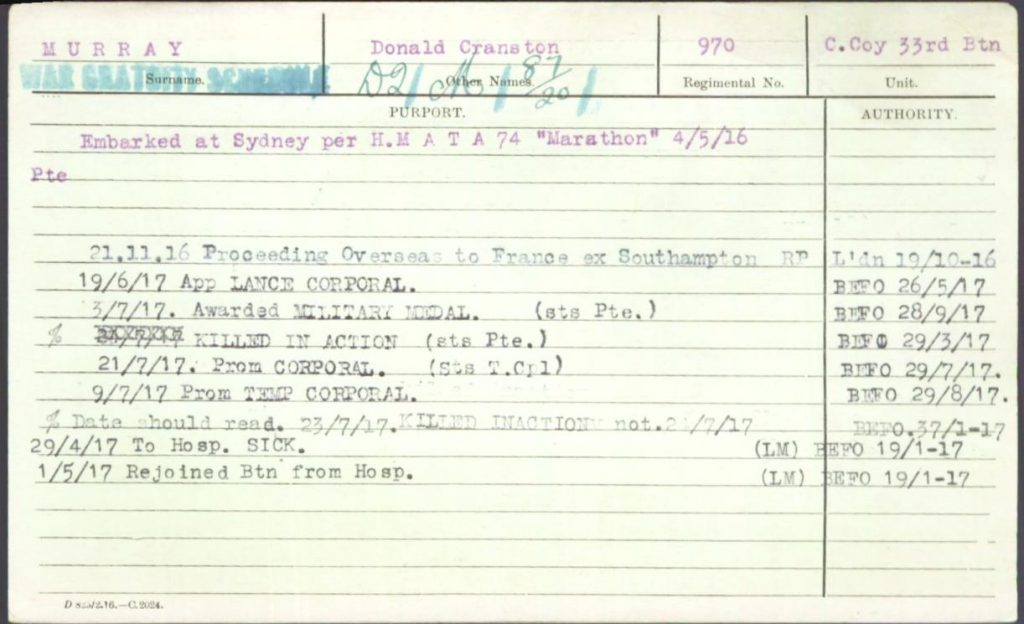
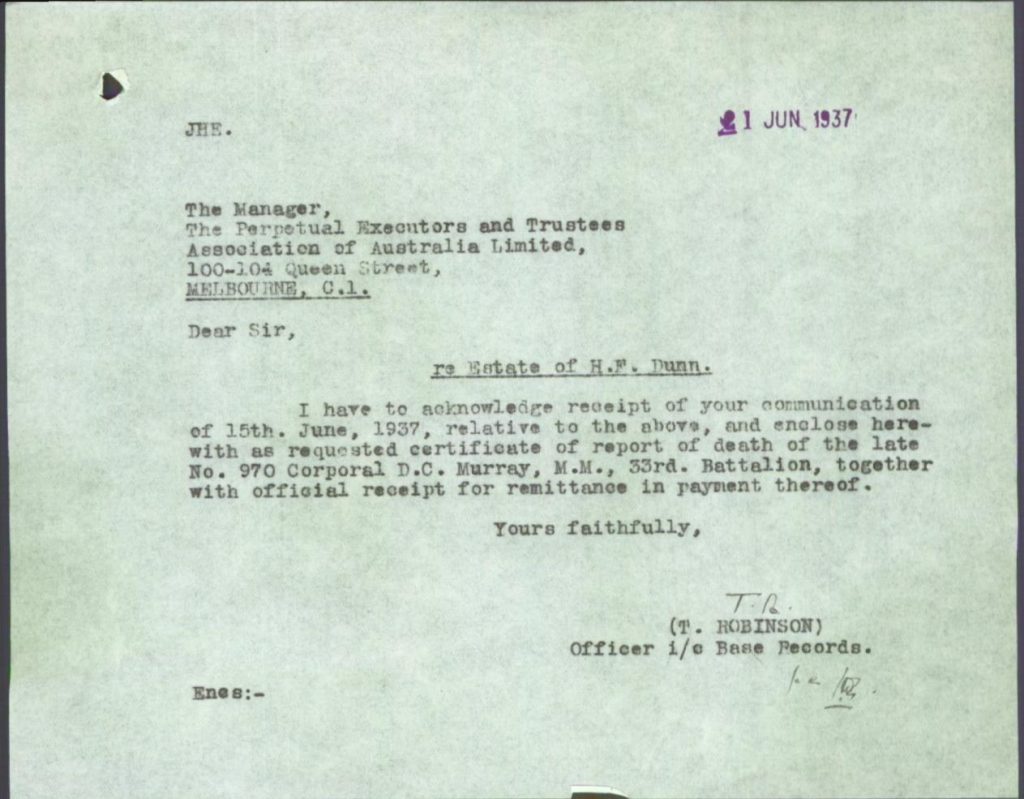
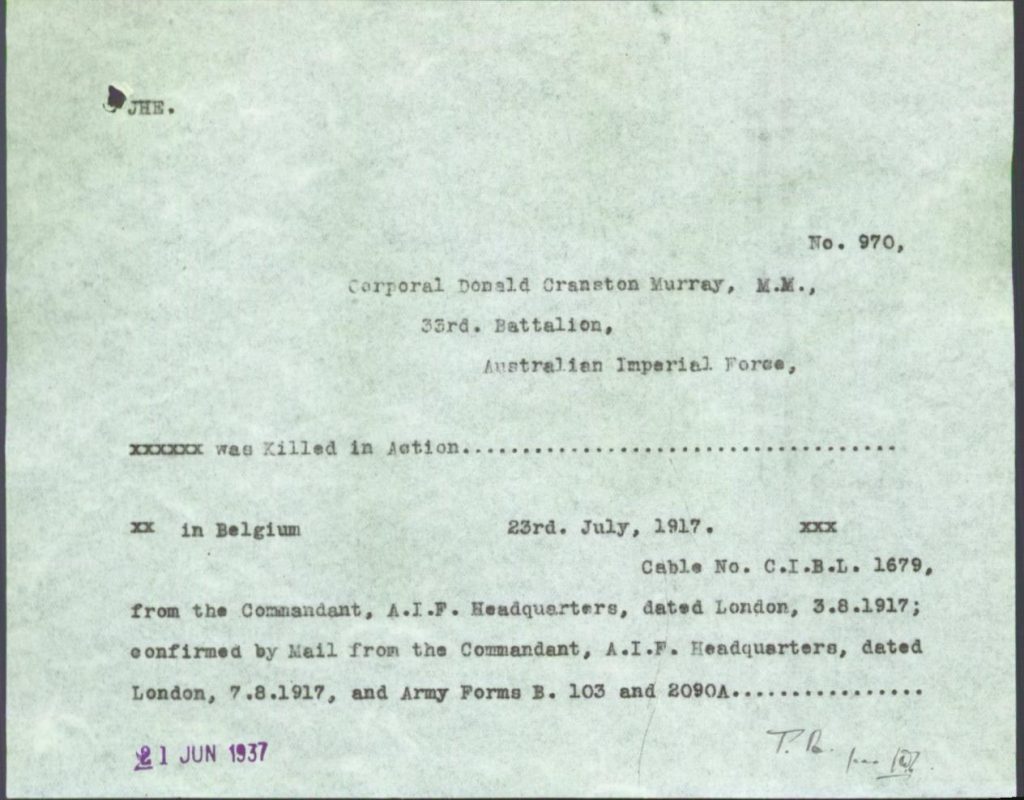

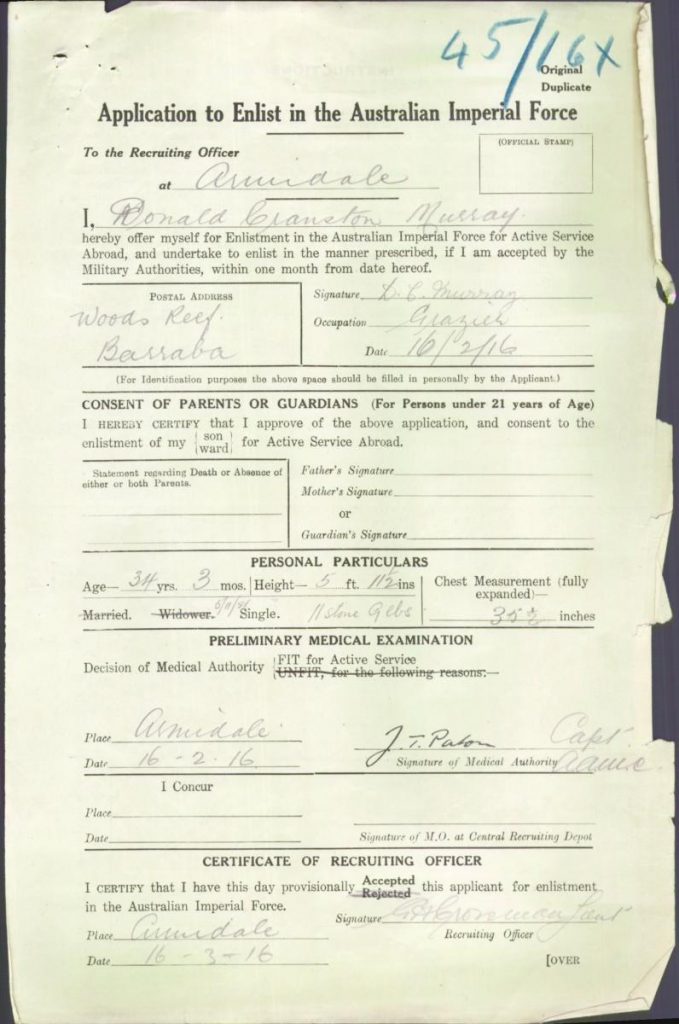
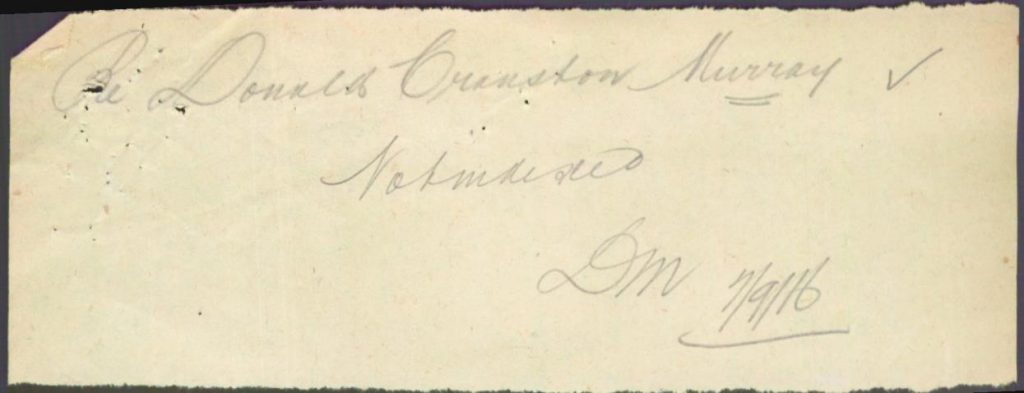
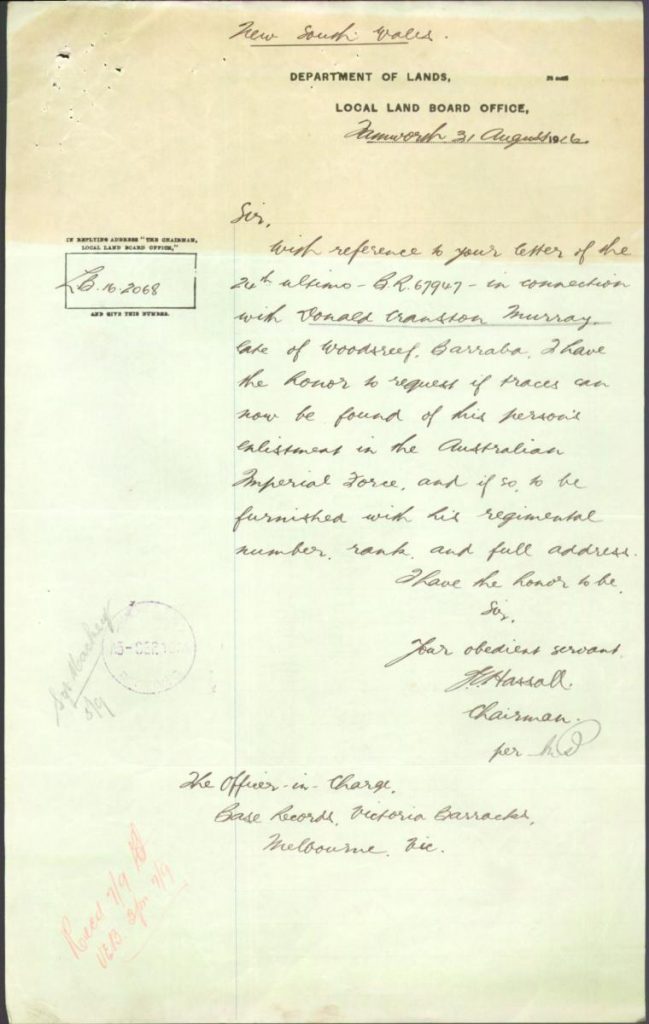

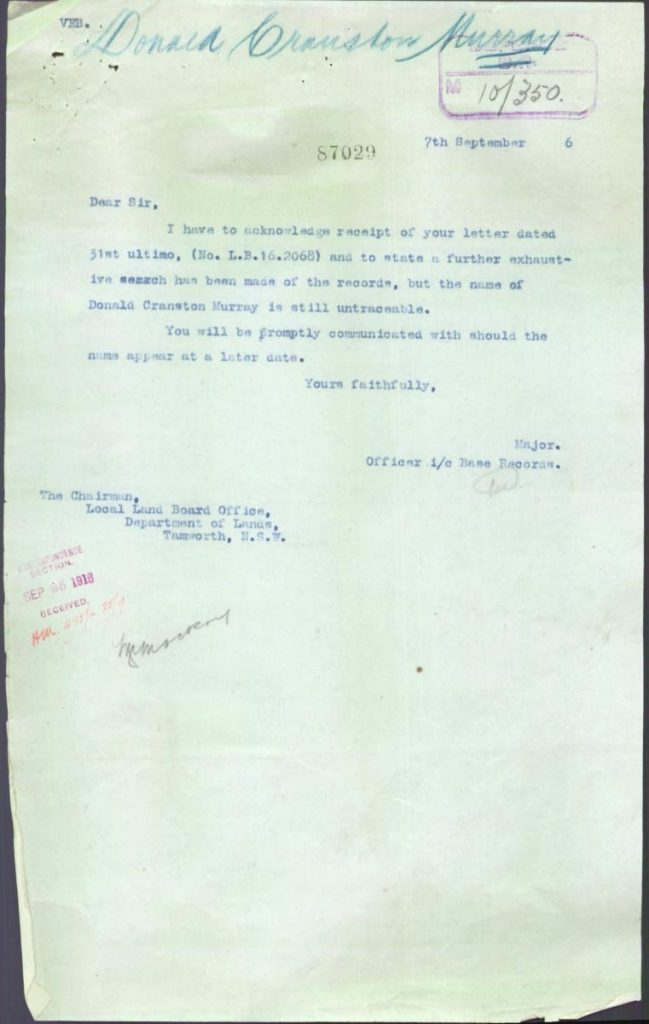
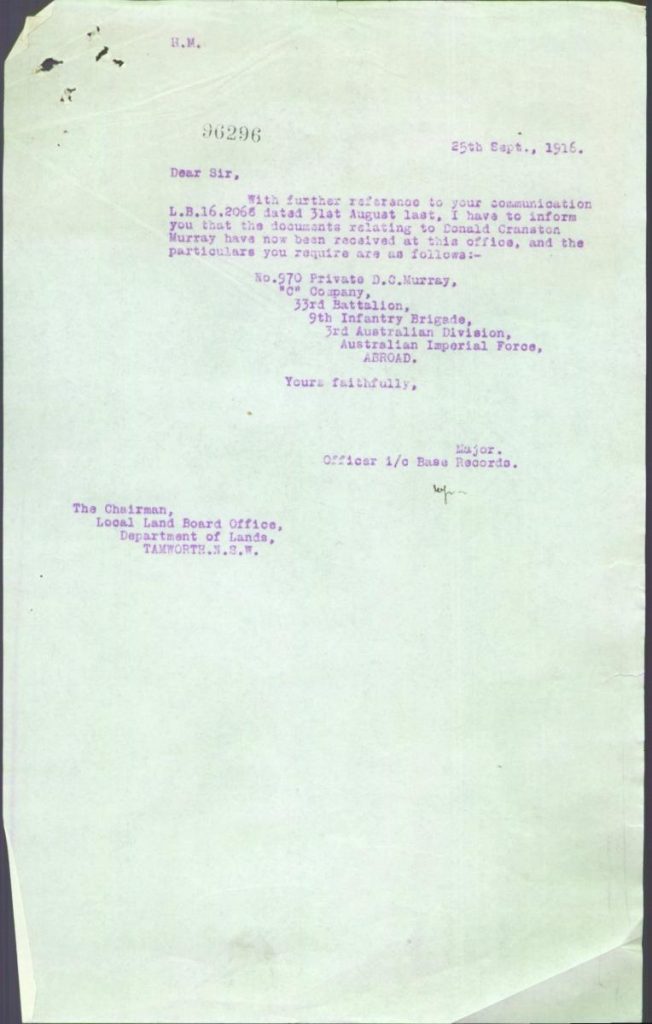
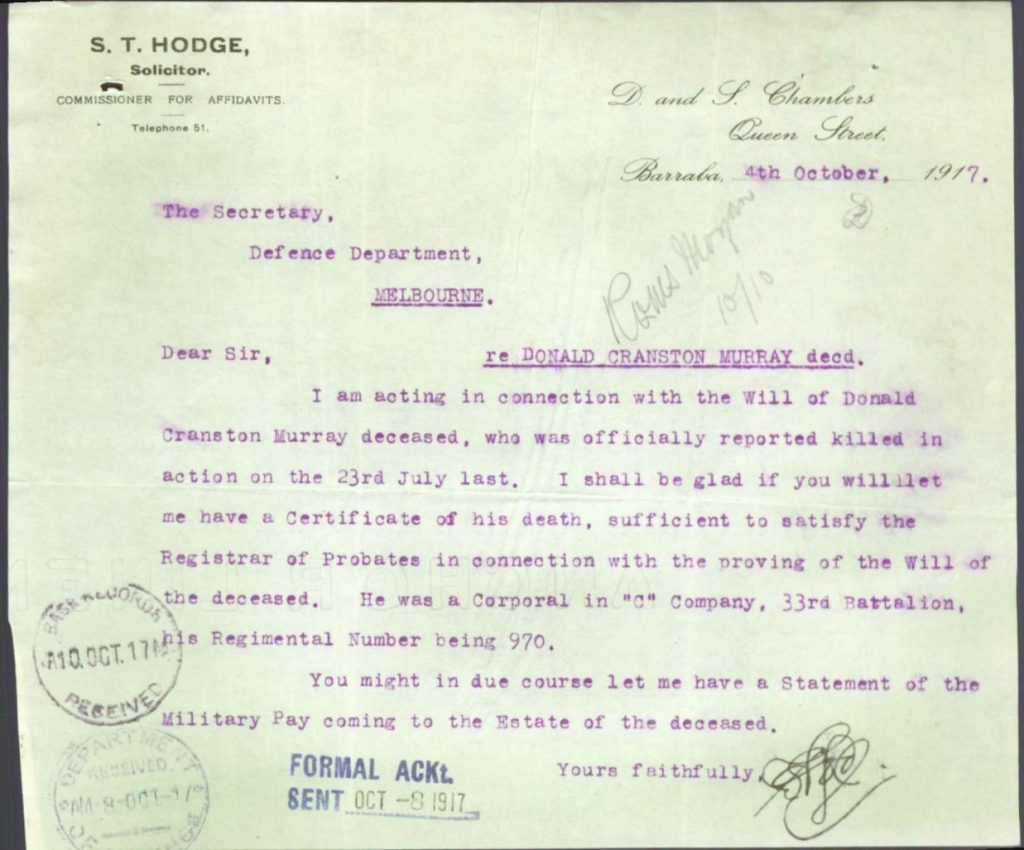



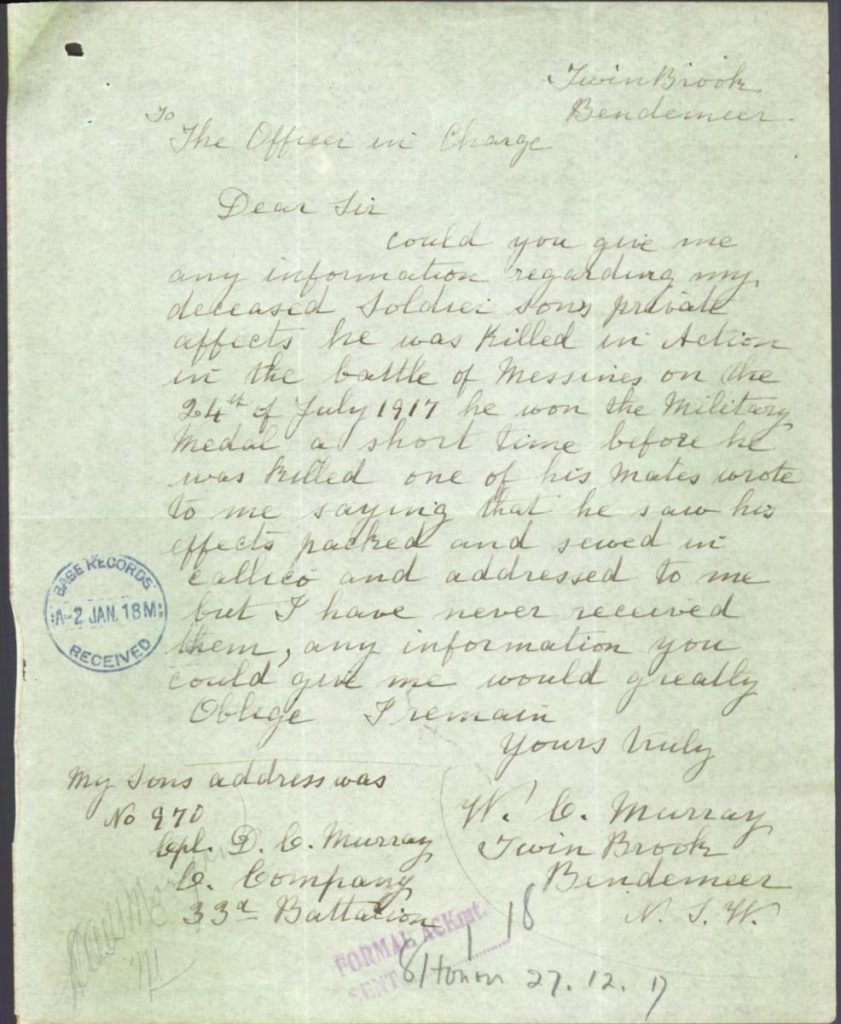
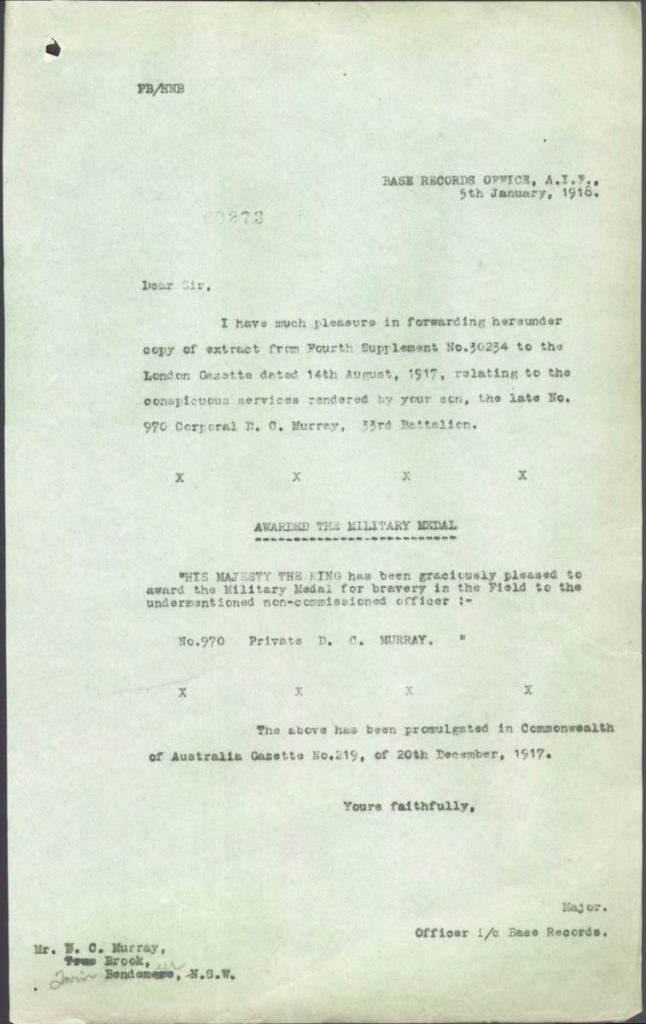

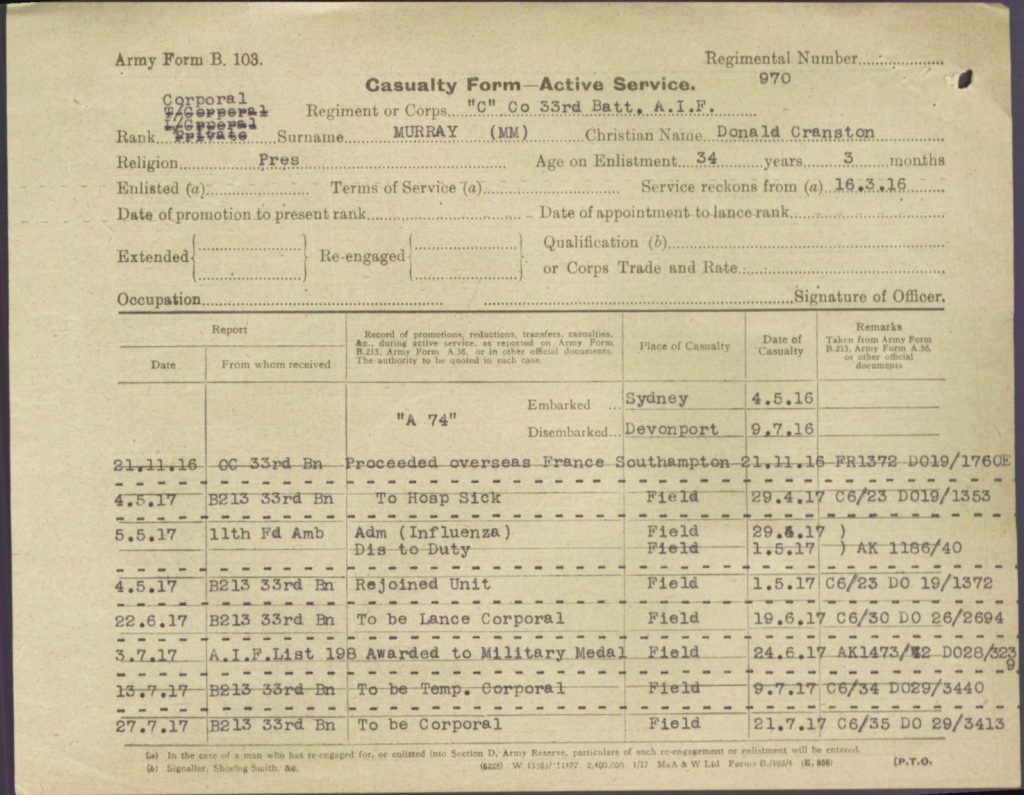
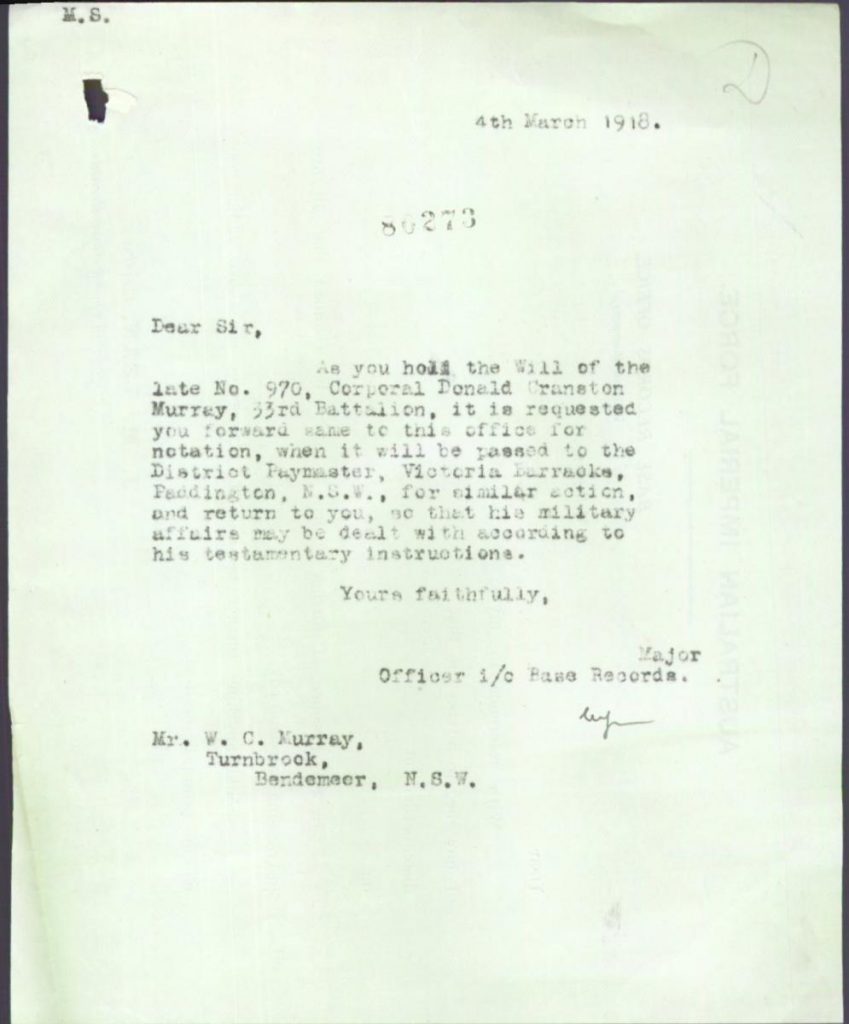

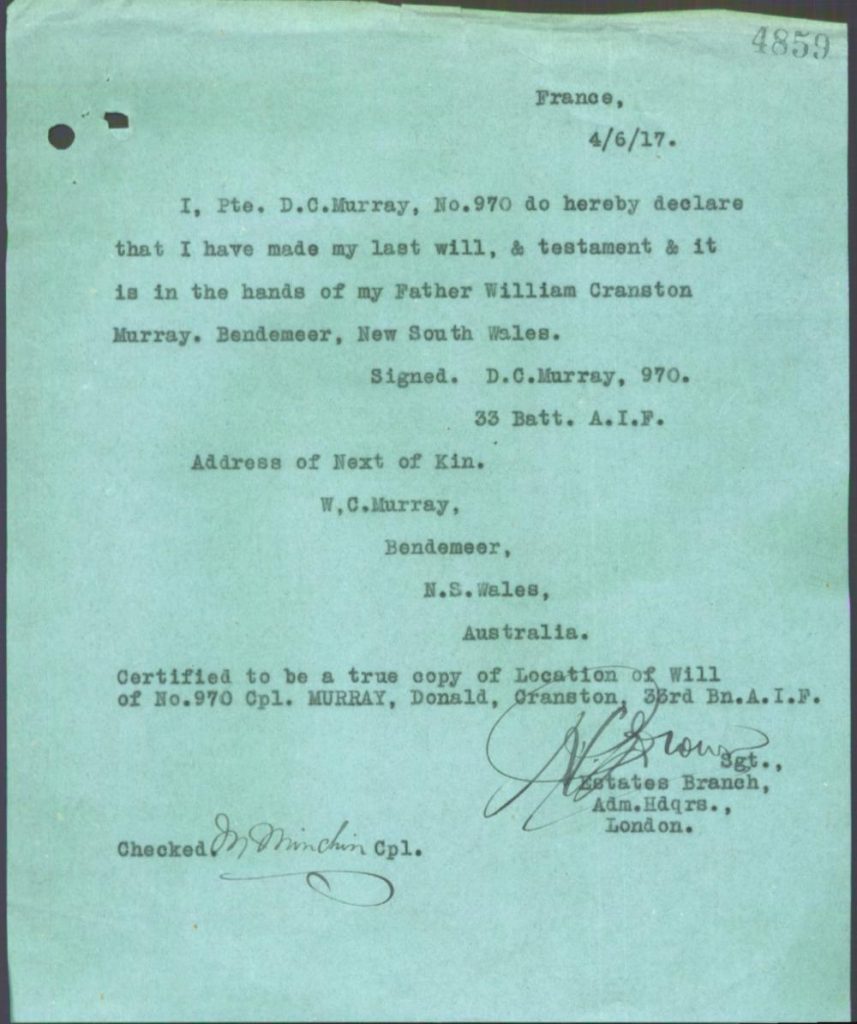



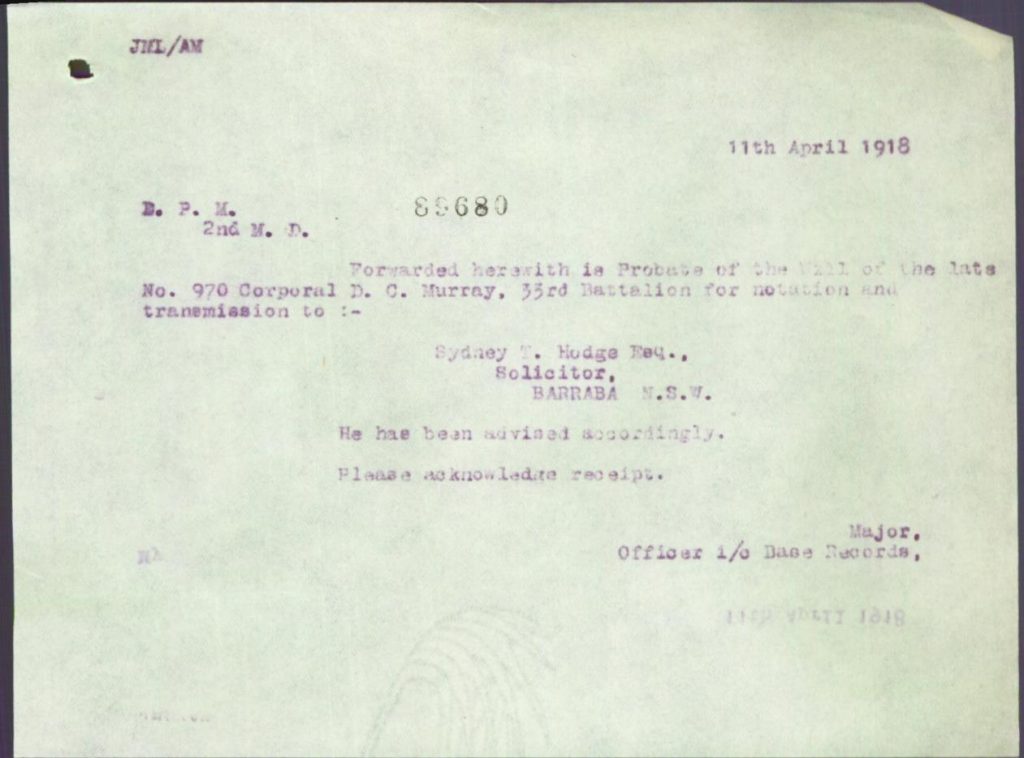
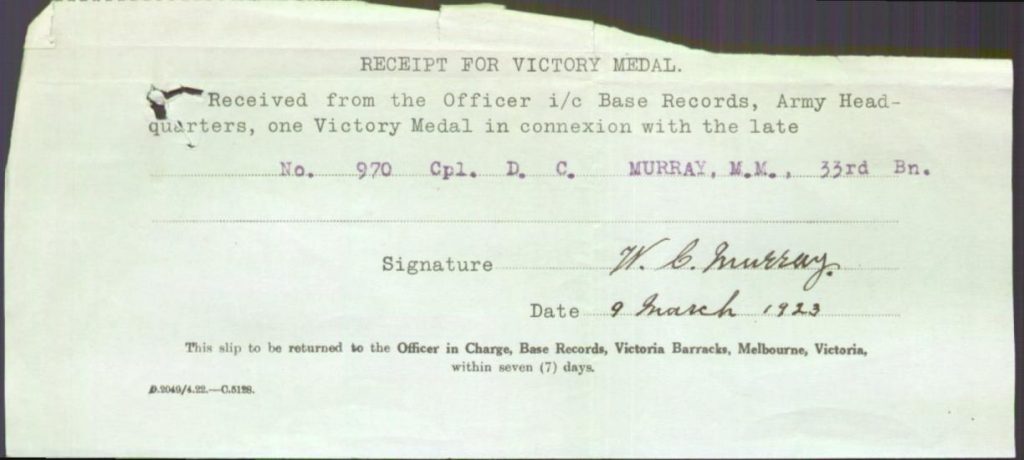
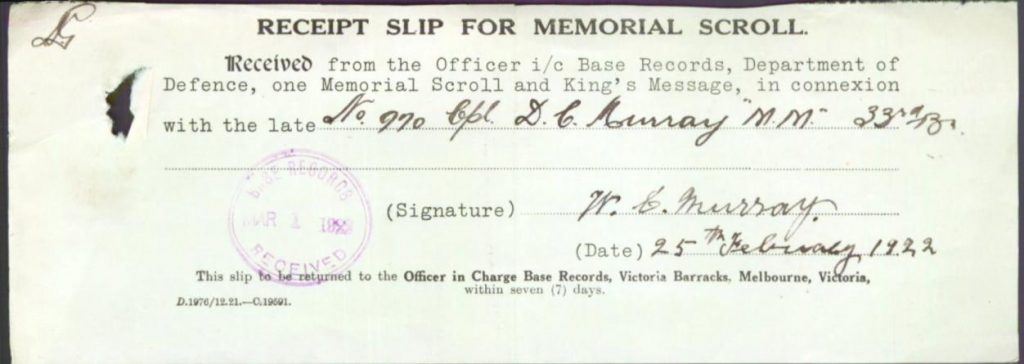


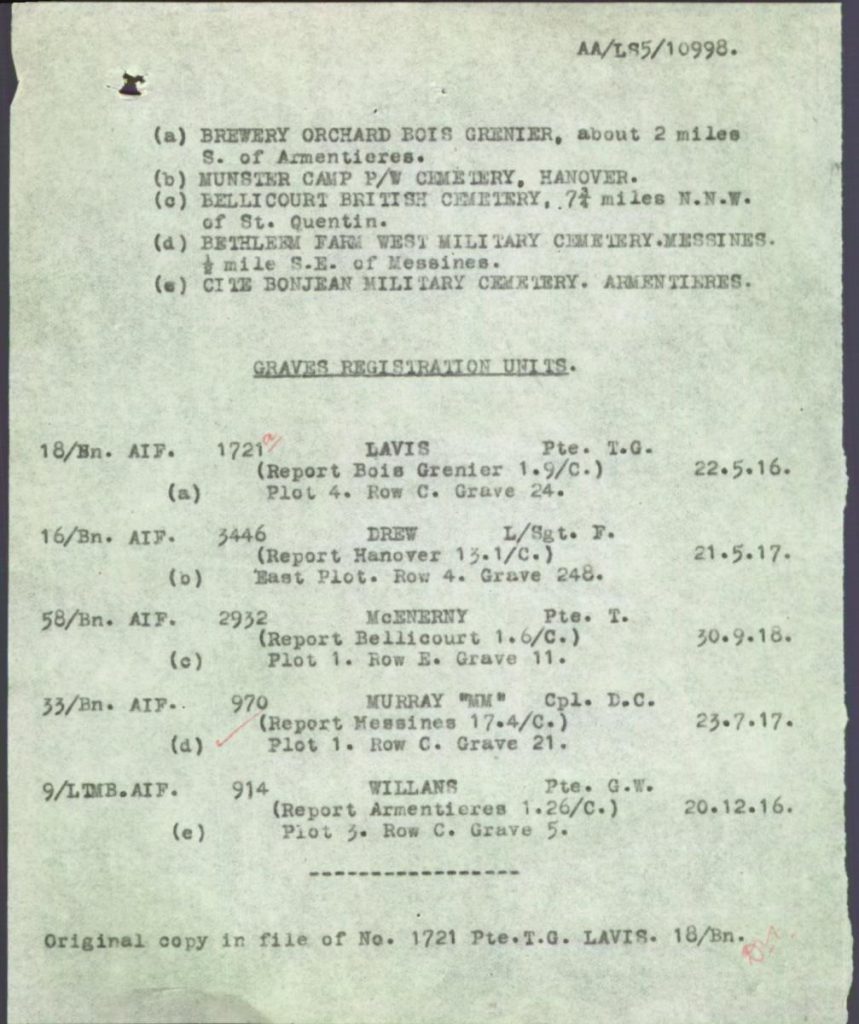

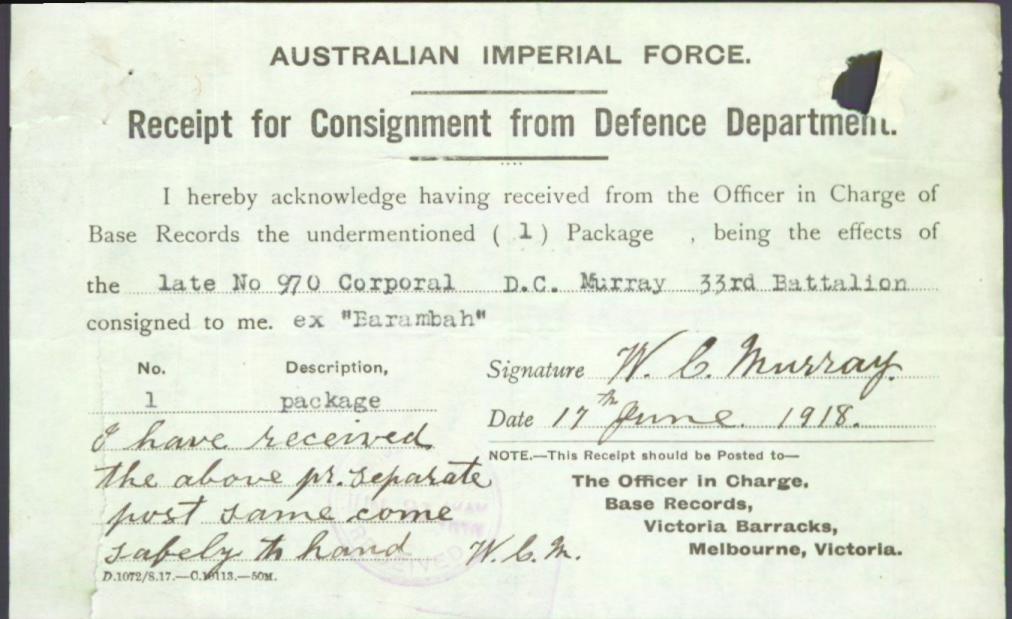
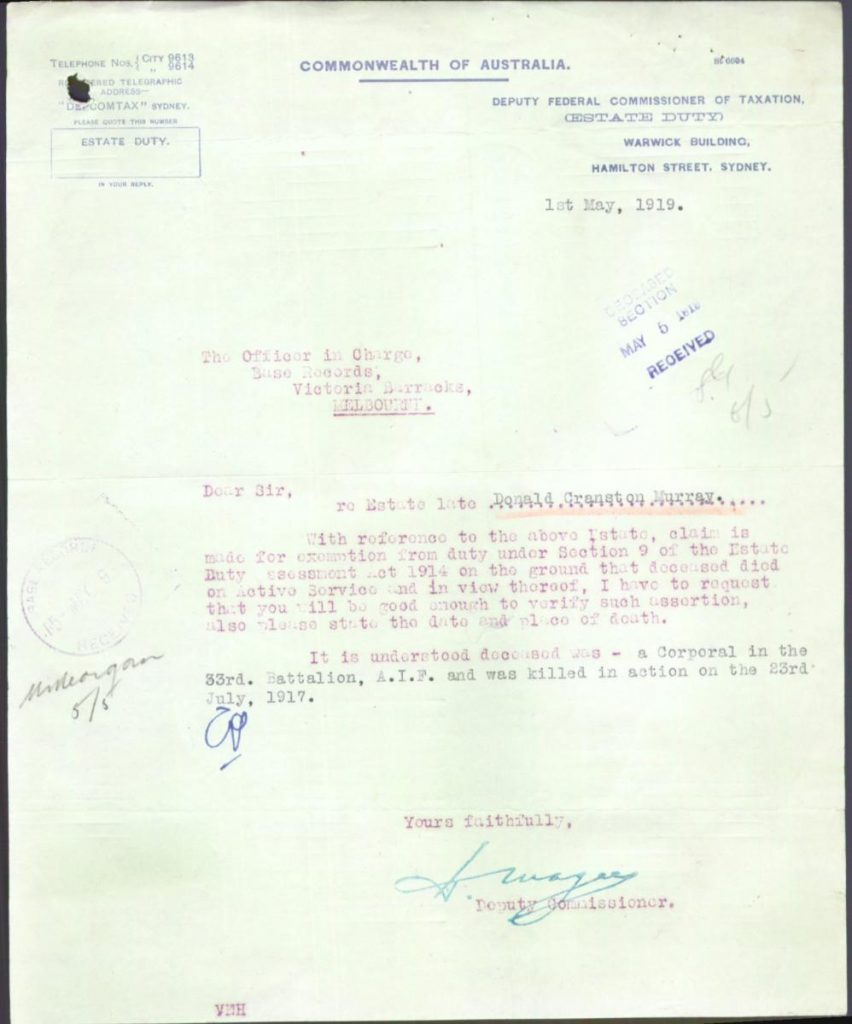
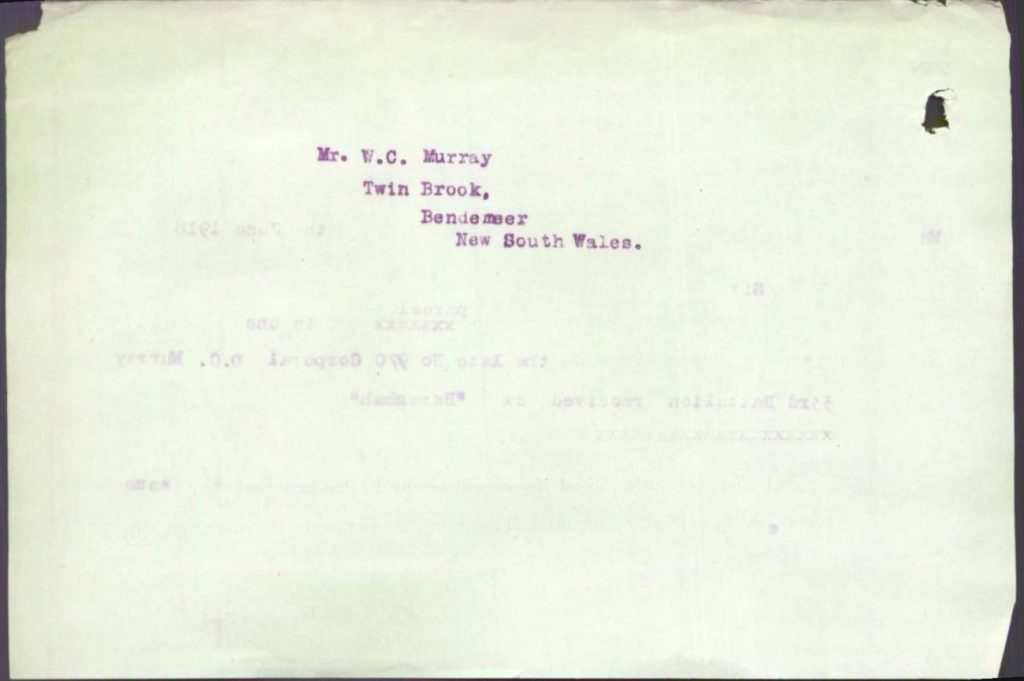

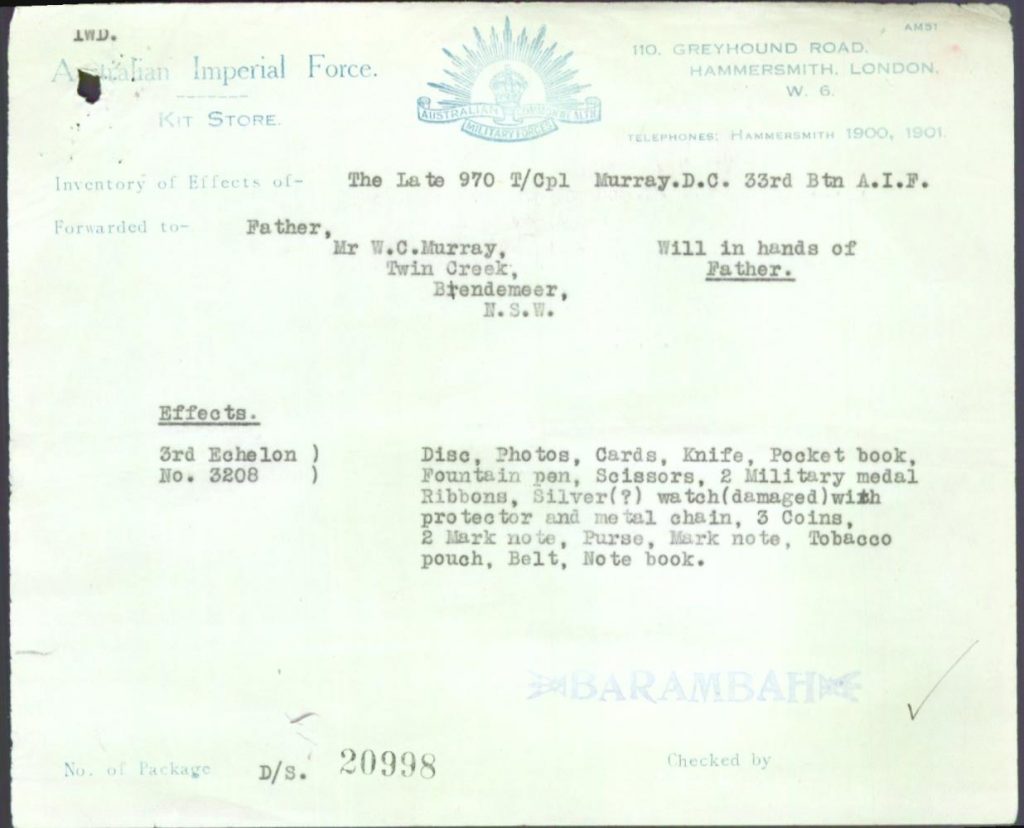
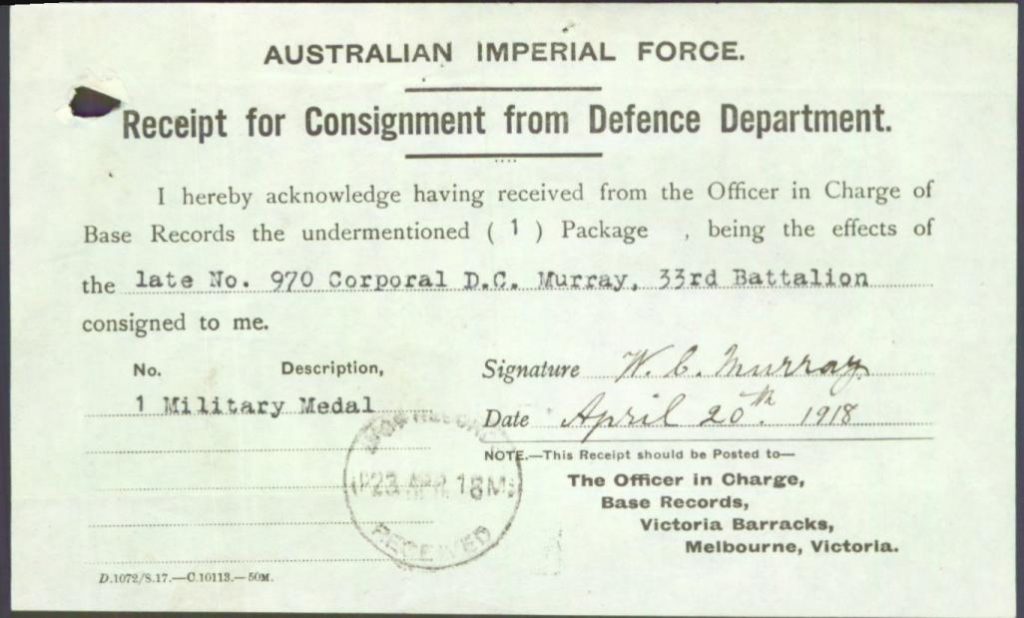




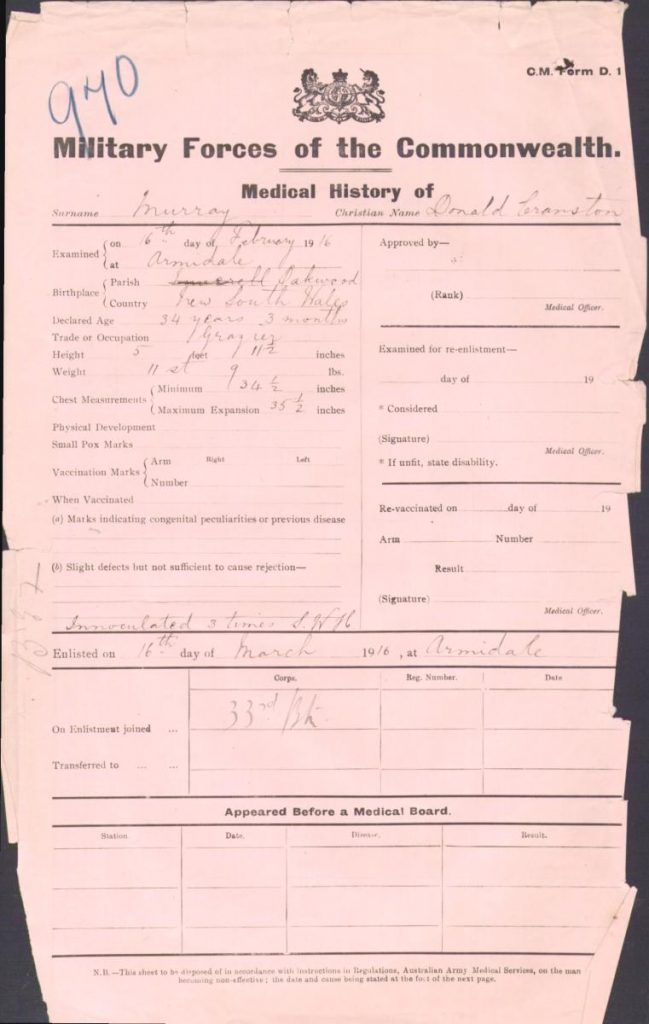





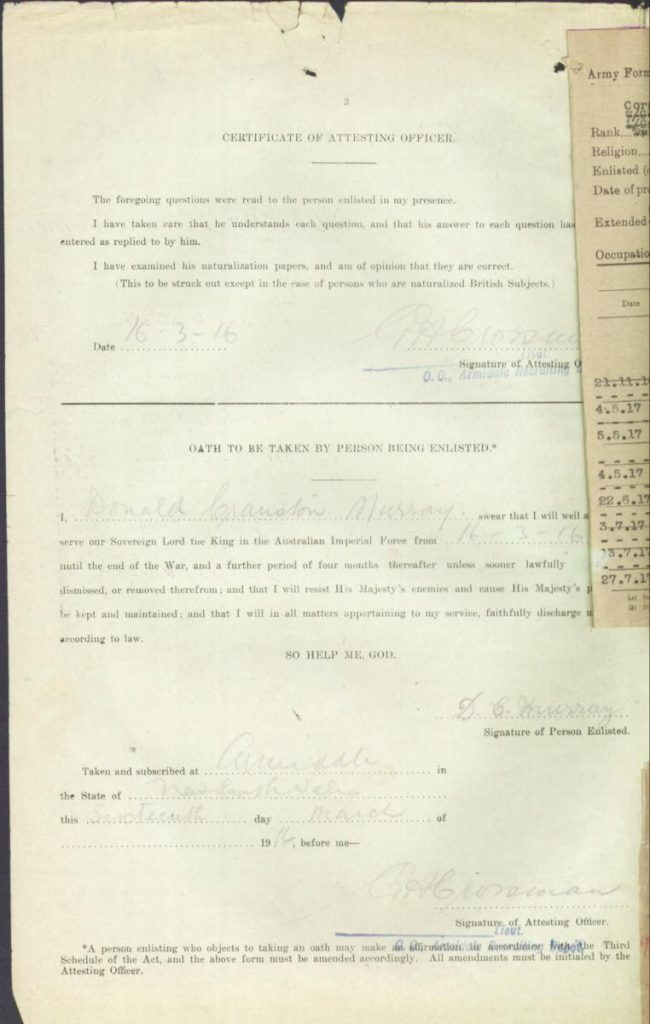

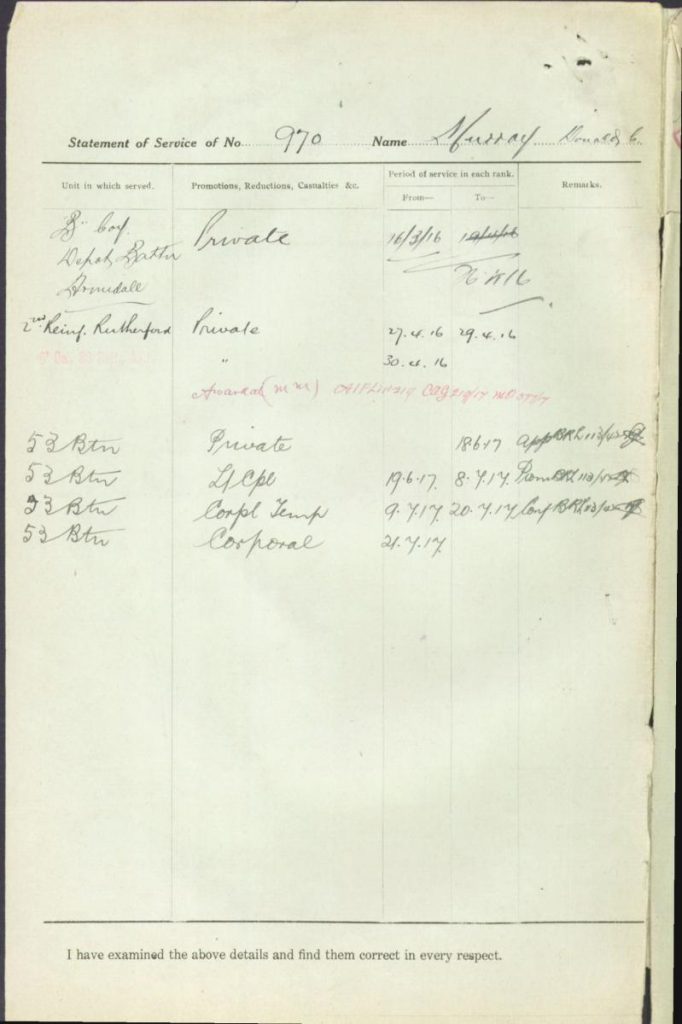




Under Construction; -14/11/2017
